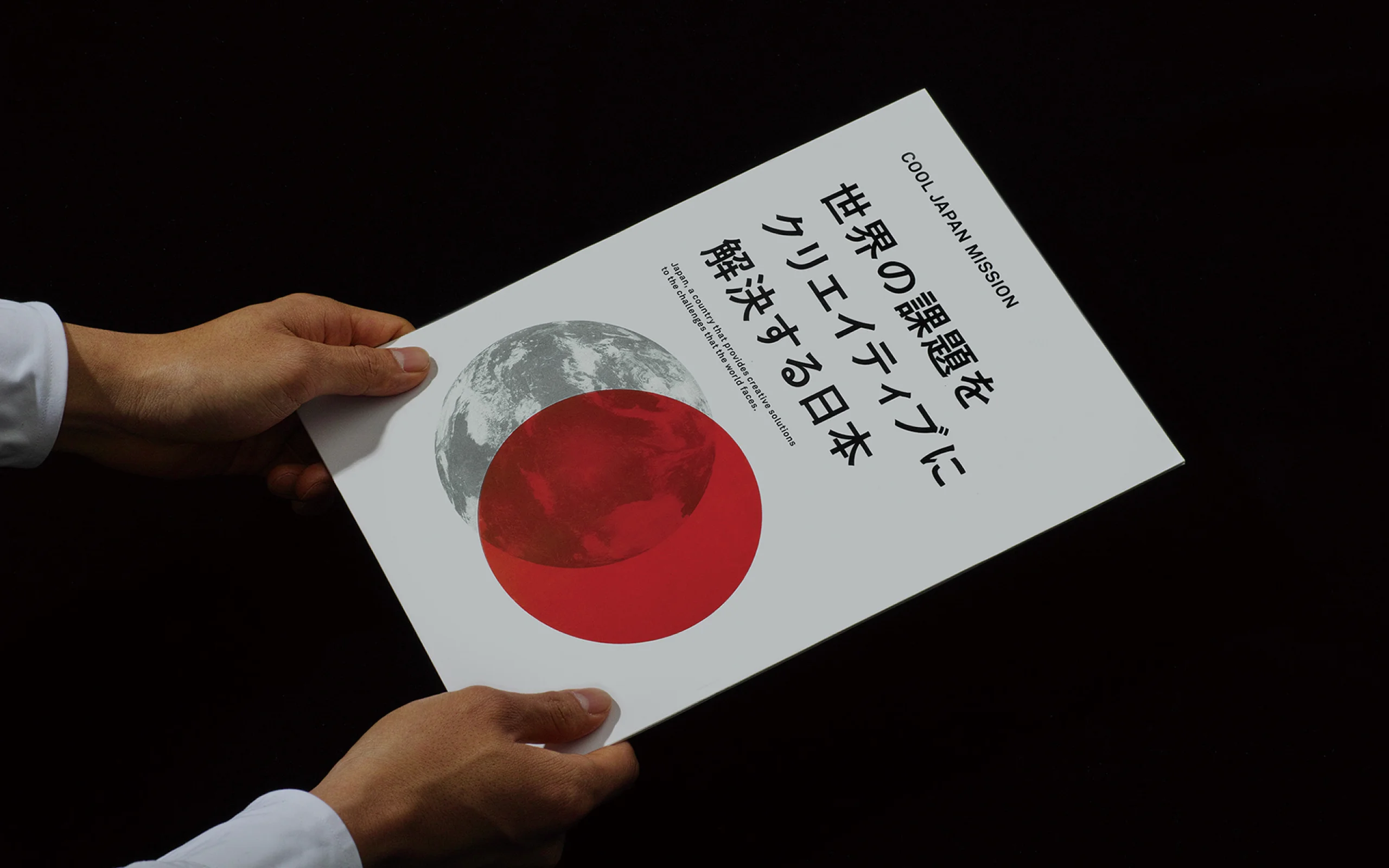
PROJECT
COOL JAPAN PROPOSAL
内閣官房が主催するクールジャパン戦略の座長として「世界の課題をクリエイティブに解決する日本」というミッションと詳細な提言を策定。
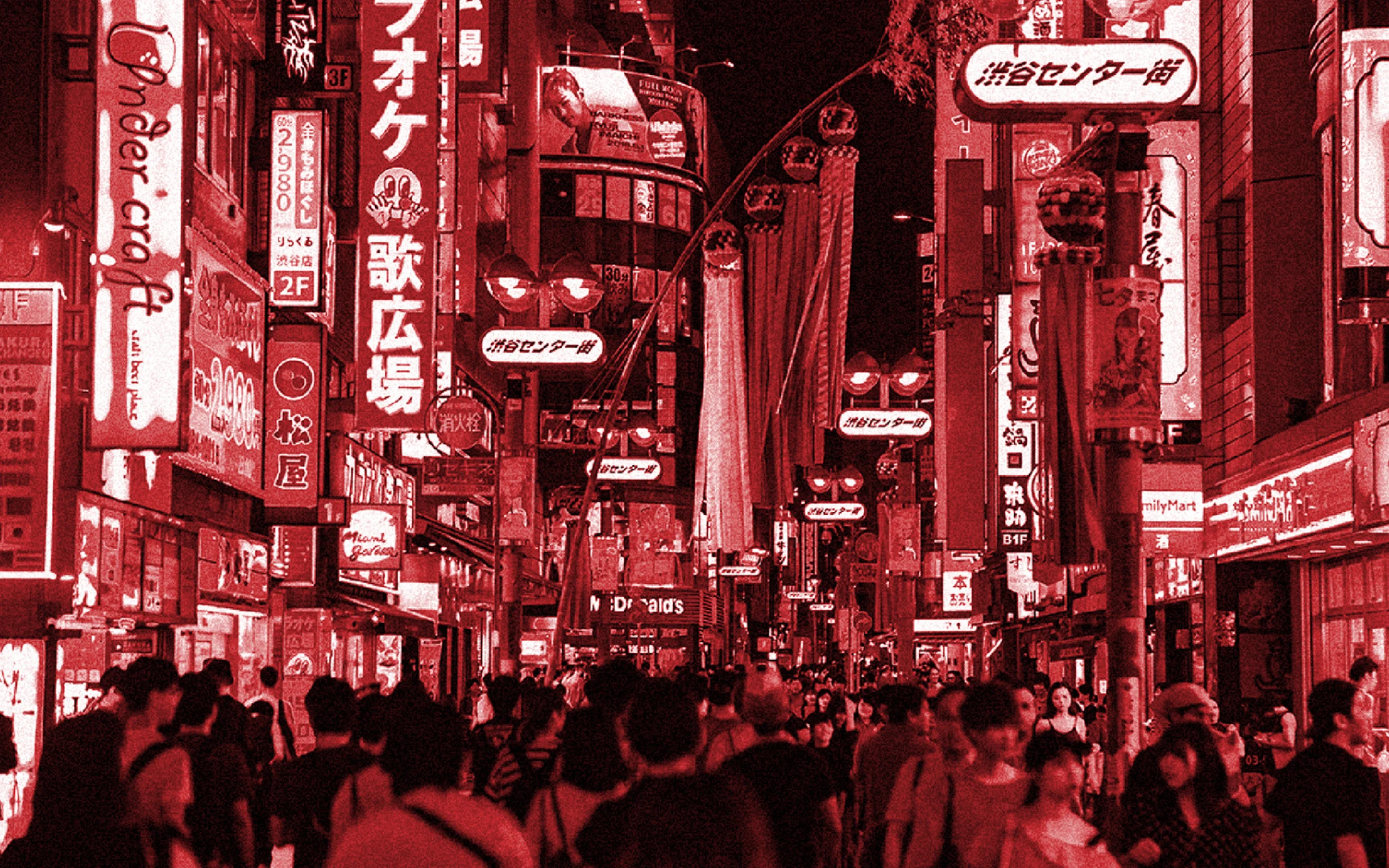
WHY
Is ‘Cool Japan’ truly cool?
Influenced by ‘Cool Britannia’ —a media-related term and policy that had thrived in the British culture back in the 1990s—’Cool Japan’ was endorsed by American journalists back in 2002. The Ministry of Economy, Trade, and Industry established the ‘Cool Japan’ Promotional Office in 2010. Following this, the elevation of ‘Cool Japan’ strategy as a national policy, aimed to capture demands from overseas to create job opportunities for related industries.
However, subcultures such as manga, anime, and traditional cultures such as tea ceremonies, technology industry, disappointingly even child pornography, were all discussed as representing ‘Cool Japan.’ Contrary to its recognition, it was difficult to develop empathy for such a policy. This was due to unclear philosophies of overall content, as well as a lack of international perspectives.
In 2014, the director of ‘Cool Japan,’ Tomomi Inada appointed our CEO Eisuke Tachikawa, as the concept leader of the 2nd Cool Japan Movement Promotion Conference. Tachikawa had previously participated in various cases related to transmissions of creative industries in Asia.First and foremost, is ‘Cool Japan’ truly cool? Conversely, what kind of policy would make an impact on Japanese industries, to be noticed as cool?
HOW
Japan is providing
creative solutions
to world challenges.

To explore the complexity and unanswered questions, we decided to re-set the purpose of “Cool Japan.”
In all four conferences directed by Tachikawa, we suggested opening a dialogue-type discussion. It had never been done before, in previous expert panels. To re-evaluate the fundamentality of ‘Cool Japan,’ we had film directors, actors, actresses, Noh artists, athletes, and other representatives participating pro bono. In doing this, we were able to exchange opinions more openly, where usually hierarchy would interfere, and people at stake would group.
Based on the discussion from the conferences, we wanted to set a model that could solve various problems with the help from the content industry, and promote Japan to the world. Thus, the ‘Cool Japan’ focuses on “Japan as a country that provides creative solutions for global issues” as its mission.
We realized that the Japanese content industry, which includes anime and manga, had the power to sweep the world. Japan could utilize the power of this industry as a method to solve social issues and raise it to the export industry. If so, it could not only create a new content industry but also recognize its contribution to the world. By doing so, we could be able to achieve a truly ‘Cool Japan.’
To put these practices into action, we designed the proposal into three steps:
1. Promote domestic growth. 2. Connect national and international. 3. Present Japan as contributive to the world.
Furthermore, we organized nine missions to embody each mission.
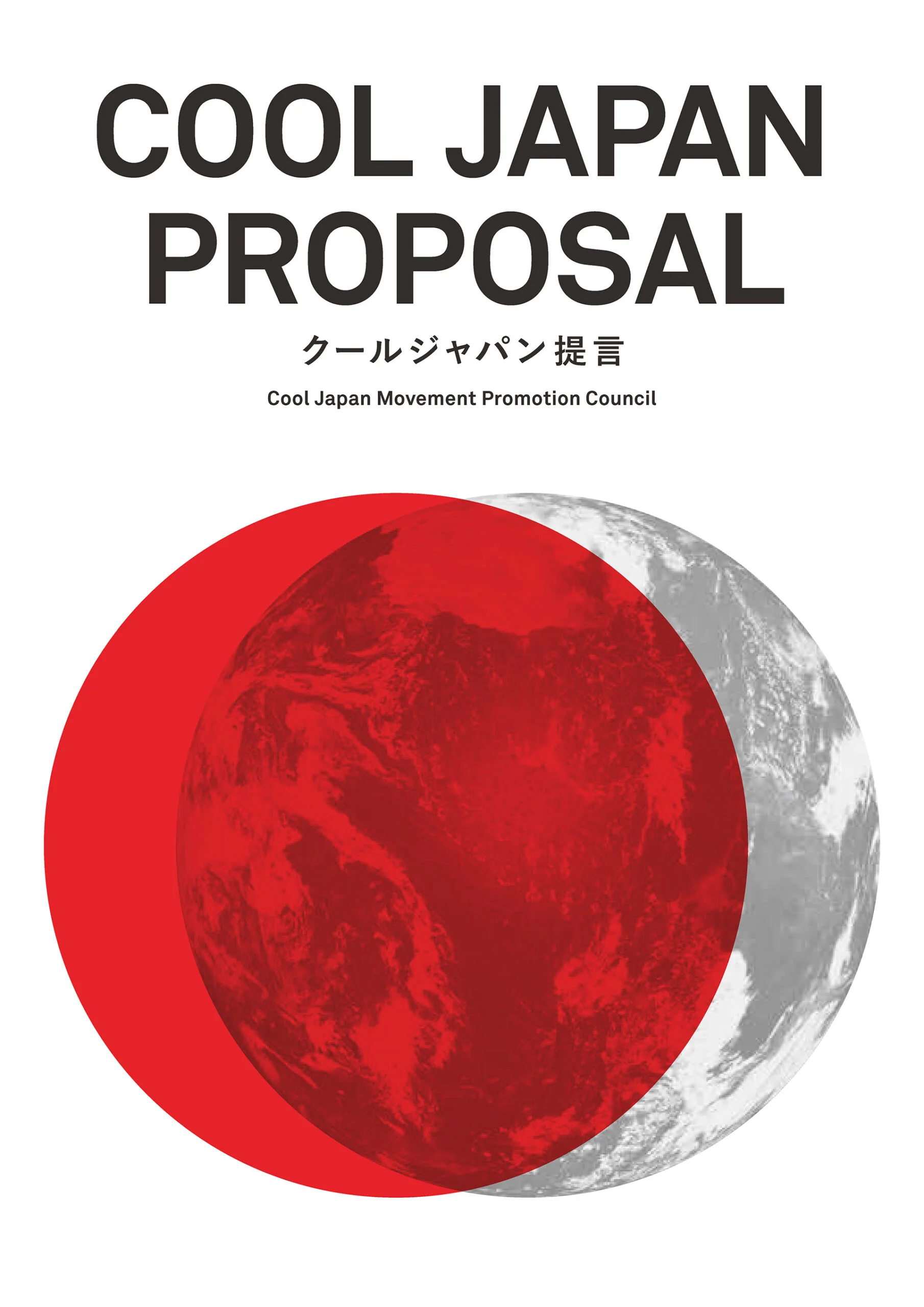
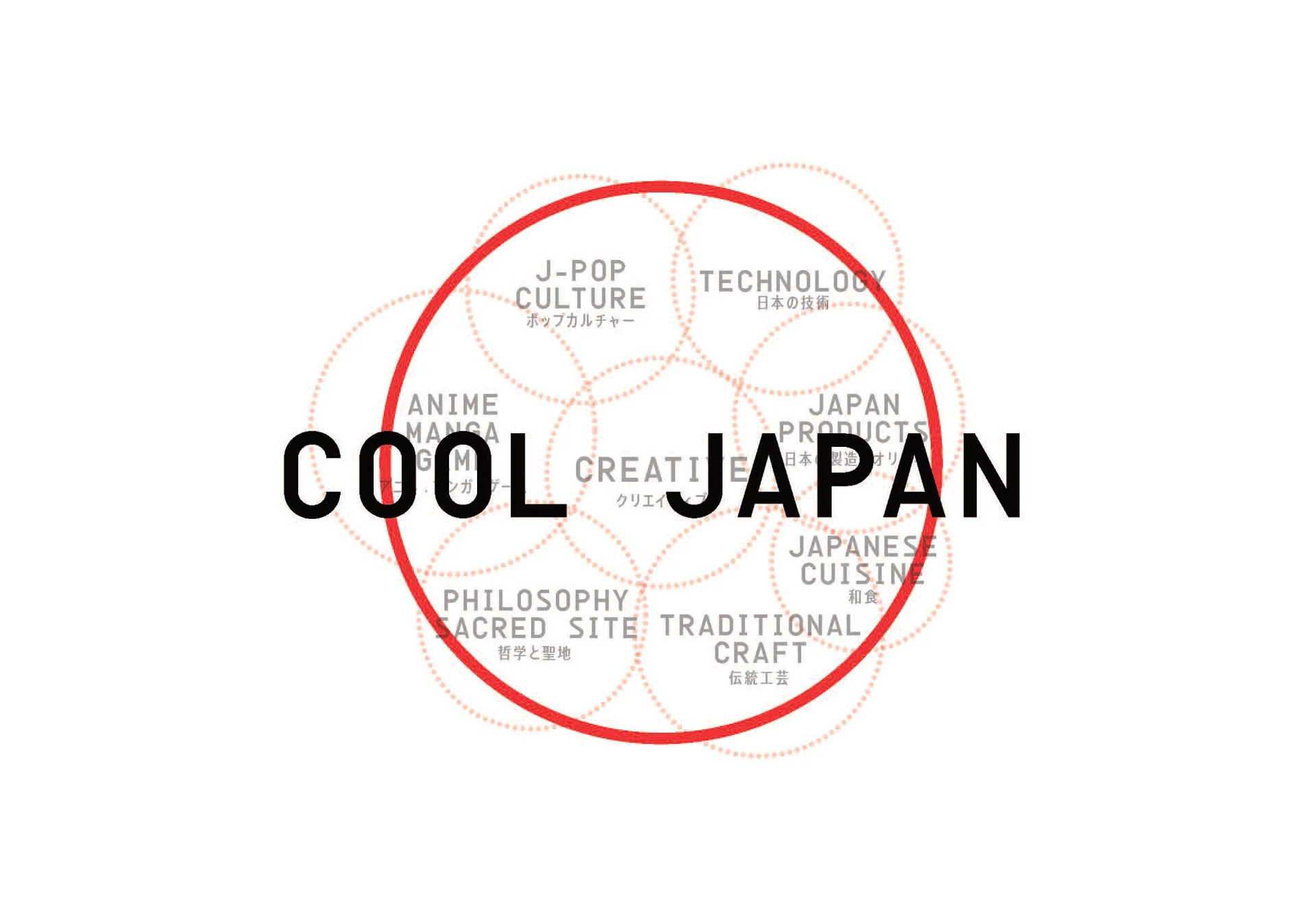
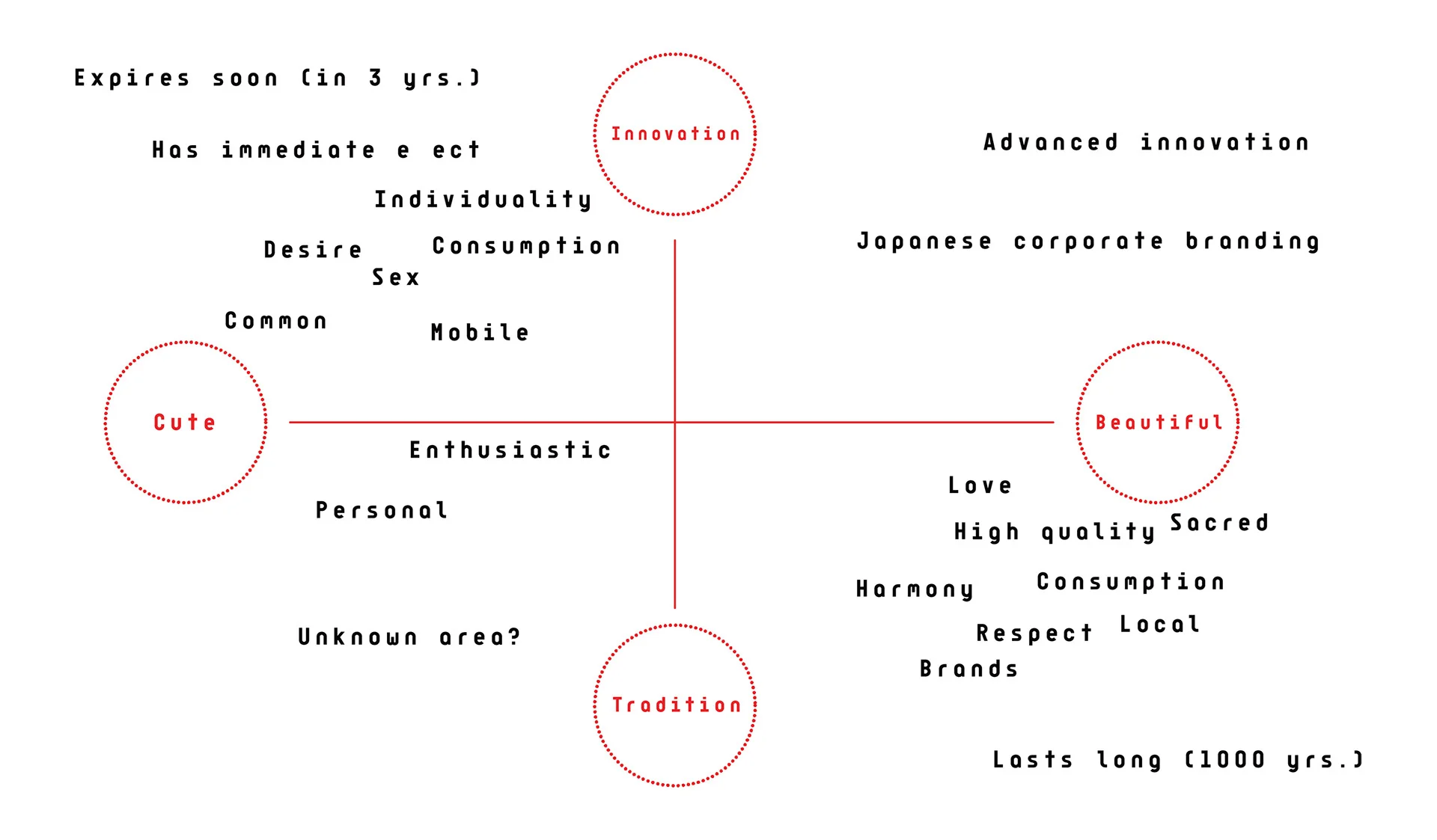
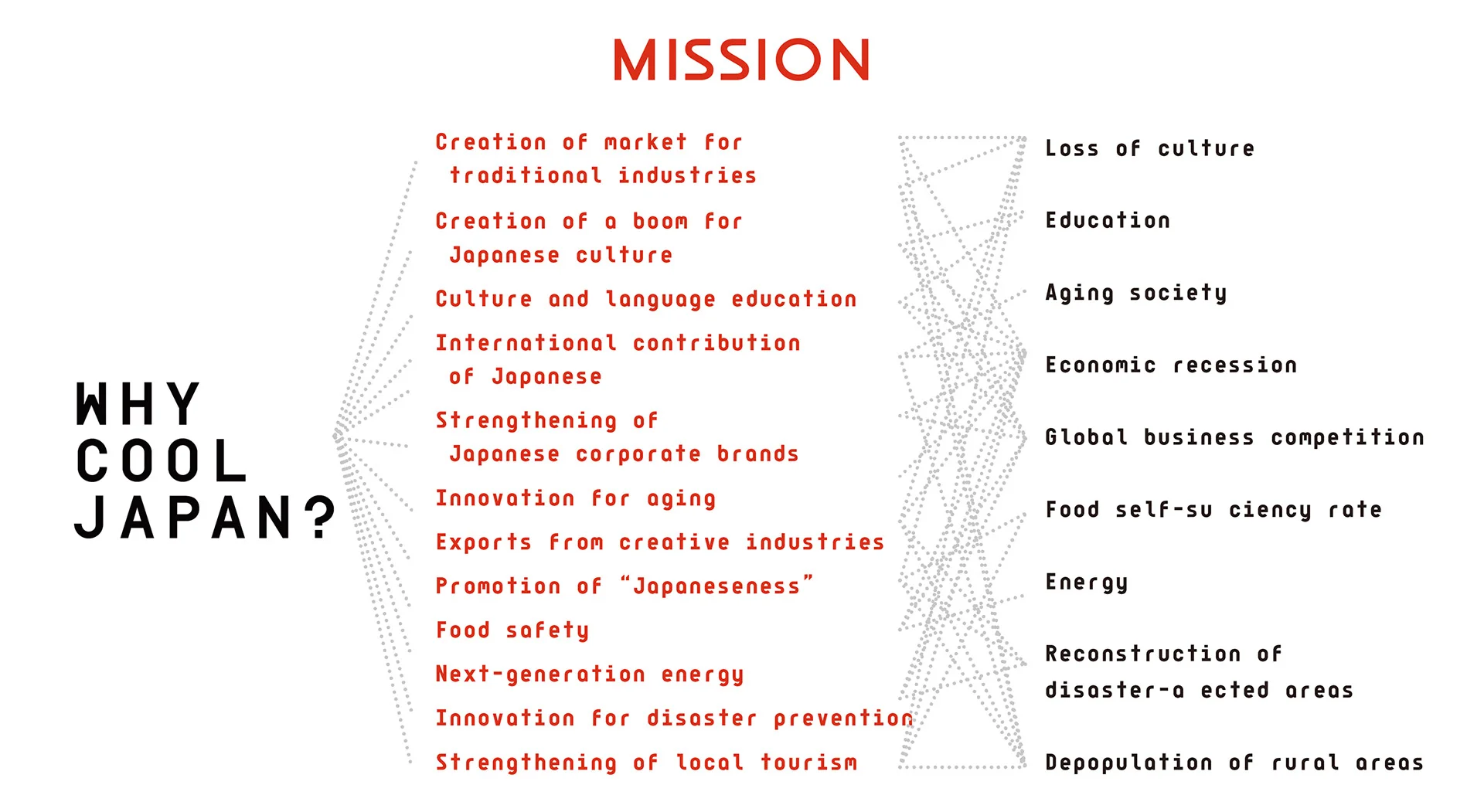
Japan’s Ministerial Declaration of Cool Japan Mission
Declaration of Cool Japan’s Mission
Japan, a Country Providing Creative Solutions to the World’s Challenges
More than 18 months have passed since I took office as the first minister in charge of the “Cool Japan” strategy. Since the 1990s, such forms of Japan-based entertainment as Japanimation, manga and electronic games have been enjoyed in many countries, and tasty, healthy Japanese food has attracted more and more people even while we, the Japanese people, are losing confidence and energy, and becoming more introverted due to prolonged economic struggles. I position the Cool Japan strategy as a social movement for each of us to rediscover various aspects of Japan’s attractiveness and then disseminate it to the world. The government has been encouraging this movement through, for example, a high-profile campaign by the Prime Minister and support for positive private-sector activities such as finance through Cool Japan Fund Inc. Since assuming this ministerial position, I have visited the U.S. and many countries in Europe and Asia, and felt a very strong interest in Cool Japan among the local people. It is also a fact, however, that advertising various different aspects of Japan’s appeal in an uncoordinated manner fails to focus on certain targets, and thus weakens the message. Therefore, the current situation is not satisfactory. The decision to hold the 2020 Olympics and Paralympics in Tokyo has been made, and there is momentum that supports the Cool Japan strategy.
The Cool Japan Movement Promotion Council has been discussing how we should further strengthen the message so as not to miss this opportunity. We have invited a young, spirited designer, Eisuke Tachikawa, to serve as the concept director, and a variety of artists, athletes and creative professionals on the front line not only in Japan but also internationally, to participate as guests. With some members unheard of in conventional, conservative government and amid a loose atmosphere, we held active discussions and I also voiced my opinions while enjoying the opportunity. Through our discussions we realized that what is expected from Cool Japan is not simply some economic effects achieved by introducing and promoting Japanese culture. Japan is well versed in facing and tackling challenges, and has already been addressing a number of difficulties, including a declining birthrate and an aging population, environmental and energy issues, and financial reconstruction that many countries are likely to face in the near future. Japan is a nation of innovation that since long ago has flexibly imported the products of foreign cultures and developed them as its original culture, amid its harsh environment of limited land and a lack of resources. Japanshould now take the initiative in solving difficult issues by using the originality and ingenuity characteristic of its people, and thus become a world leader. Japan’s brand value as a nation will be raised if other countries in the world can use Japan’s case as a reference when challenged by similar problems. In other words, I hereby declare that, “Japan, a country providing creative solutions to the world’s challenges,” is the new mission of Cool Japan. Based on this declaration, I had the core members of the Council list some attractive actions.
While the government has implemented various projects in the past, the Cool Japan proposals made by so many front-line professionals as a group are unprecedented. Being packed with ideas to create new businesses and grow existing ones, these proposals should, by all means, be taken advantage of by government offices in their respective activities. Another remarkable achievement was the development of human resources, including the members and guests who participated in the Council. We ask for the continuous cooperation of the members and guests, by providing us with advice and cooperation in events when the government offices implement their projects. The Cool Japan strategy has entered the next stage. There is no end to raising the brand value of “Japan,” and we look forward to taking on new challenges in the future.
August 26, 2014
Minister in charge of the “Cool Japan” strategy
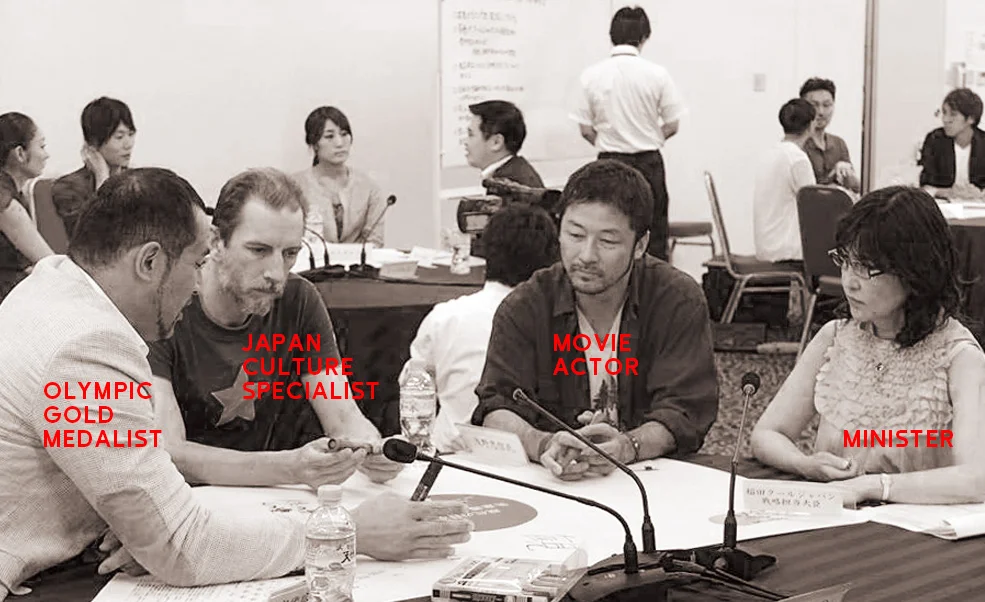
WILL
Memes created from
the proposal
by the current generation.
The ‘Cool Japan’ proposal, announced along with mission declaration by Minister Inada, was highly regarded from both the government officials and creative workers. Although there was high anticipation of subsequent developments, the remodeling of the cabinet occurred shortly after the announcement. Unfortunately, this resulted in the change of Minister who was in charge of ‘Cool Japan.’ Consequently, there became a big gap between the content proposal and specific policies. However, since 2014, trends such as “JAPAN HOUSE” have become business bases for the Ministry of Foreign Affairs, currently developing in three cities overseas. With the SDGs accelerating ahead within the industrial world, we believe that this proposal was by no means irrelevant. We are now working on various projects promoting solutions with creative power, such as “Tokyo Bousai.”
Moreover, memes were created through ‘Cool Japan’ transformed and is still maintaining its purpose today. We still believe that this proposal is useful not only for the promotion of content in Japan but also for overall administrative reforms in the future. Please have a look at the full text uploaded below.

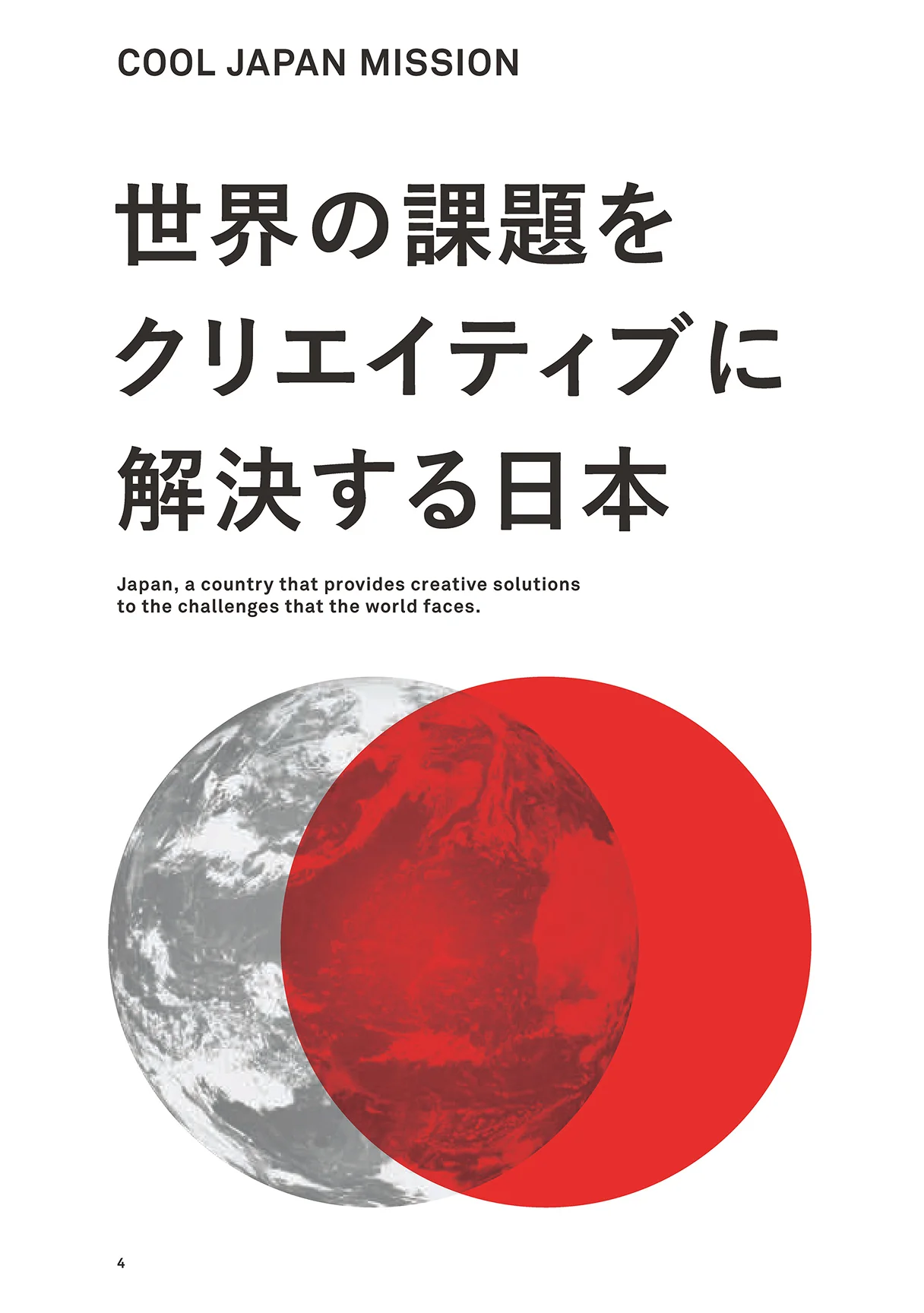
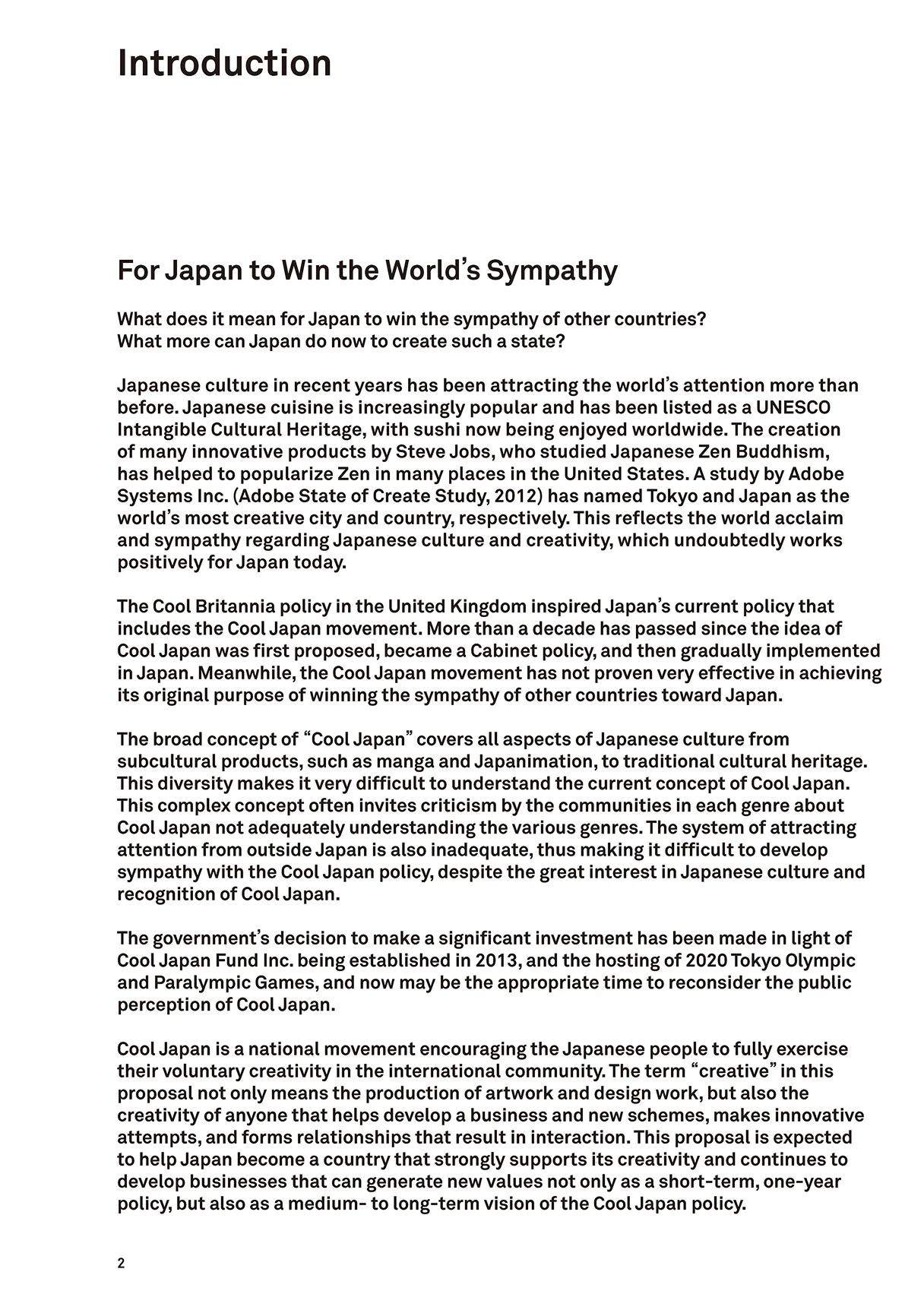
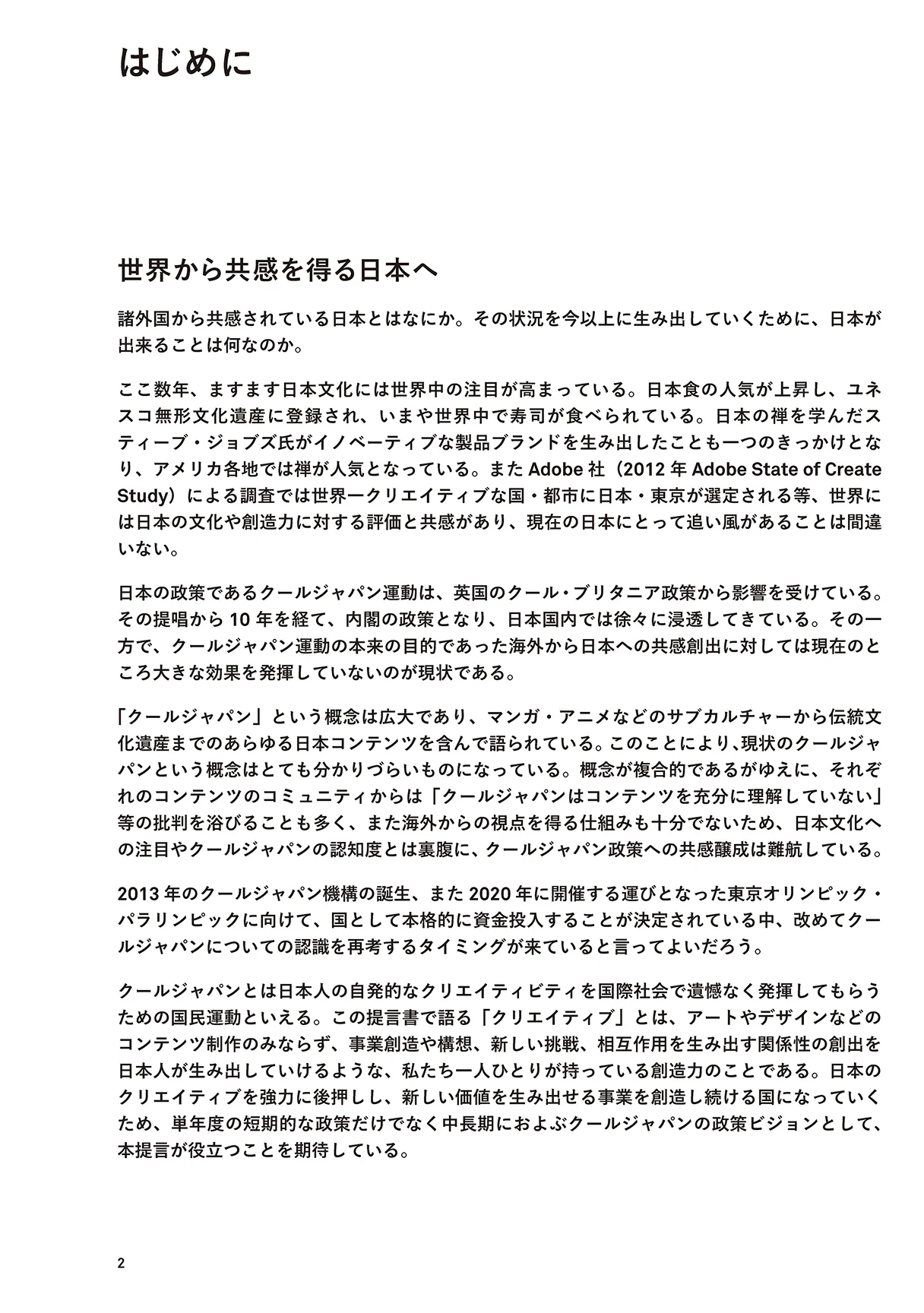




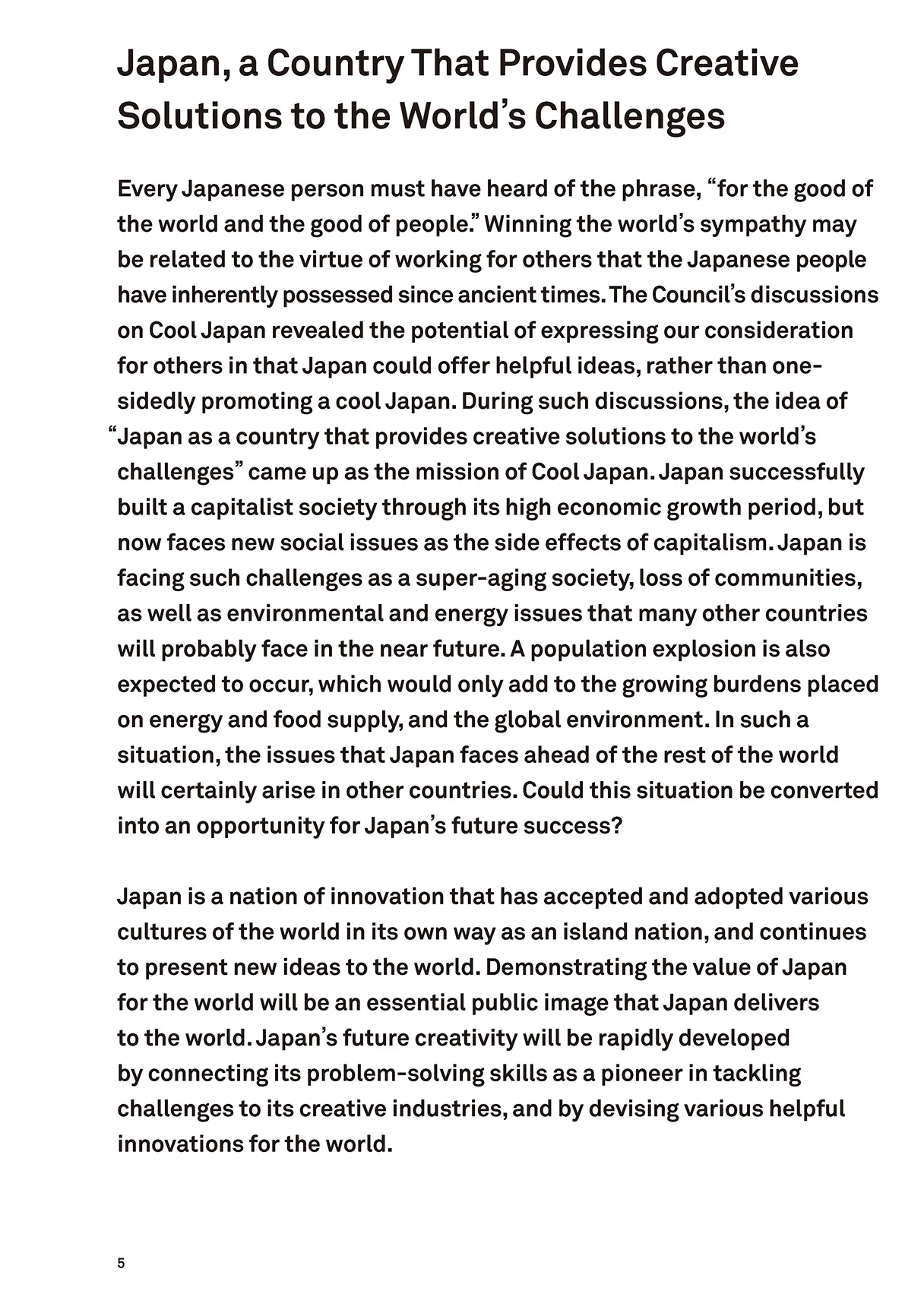
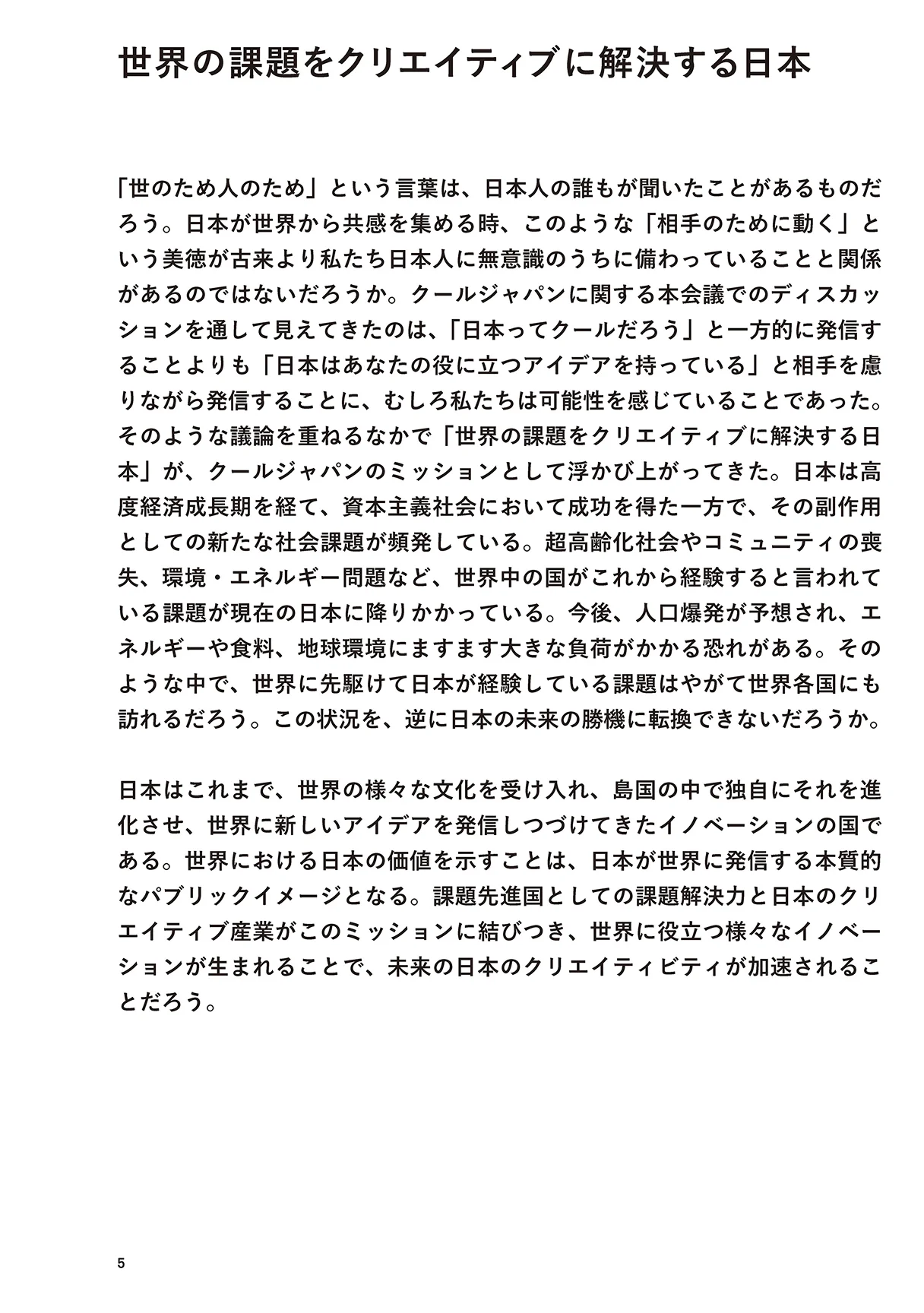
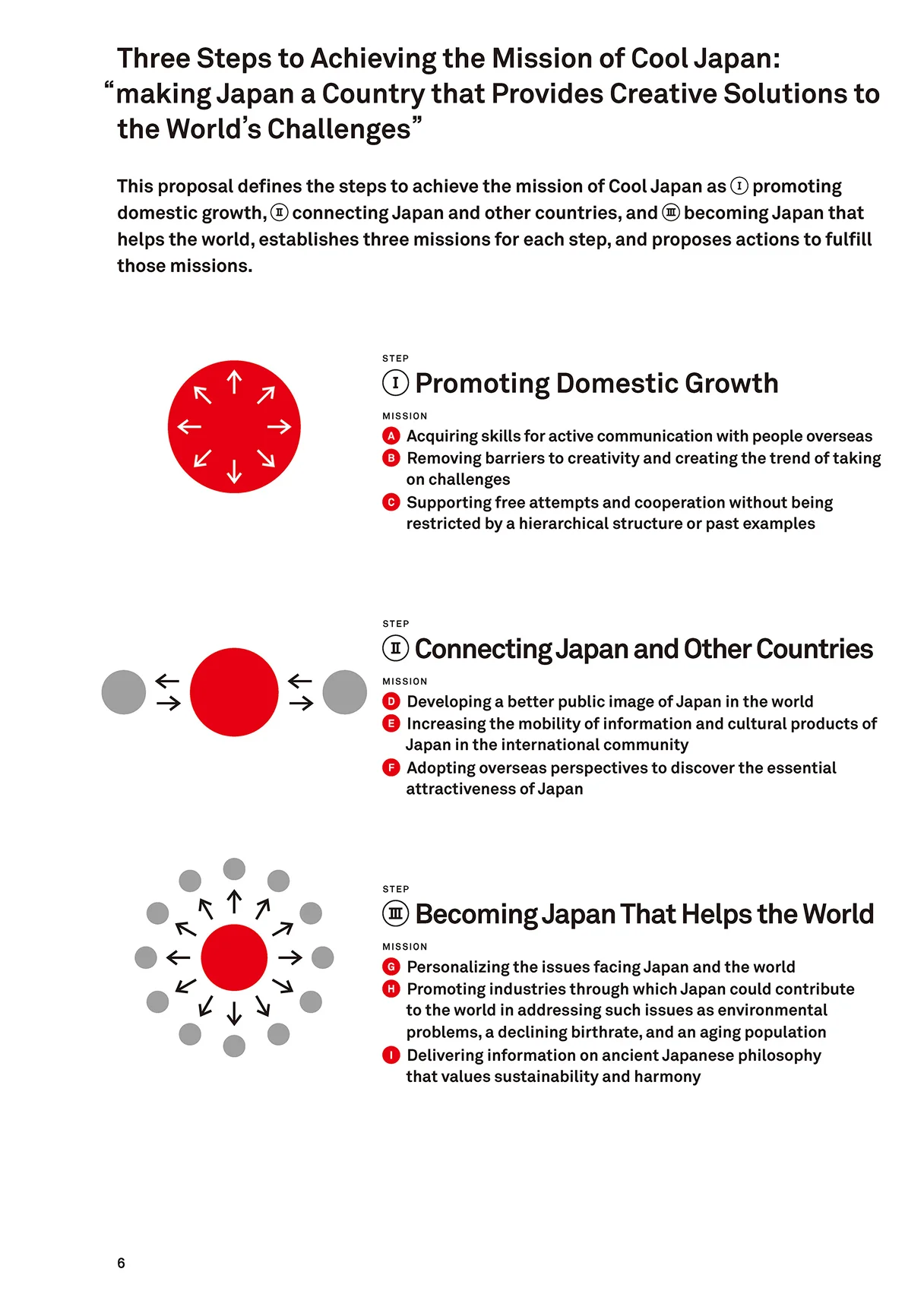
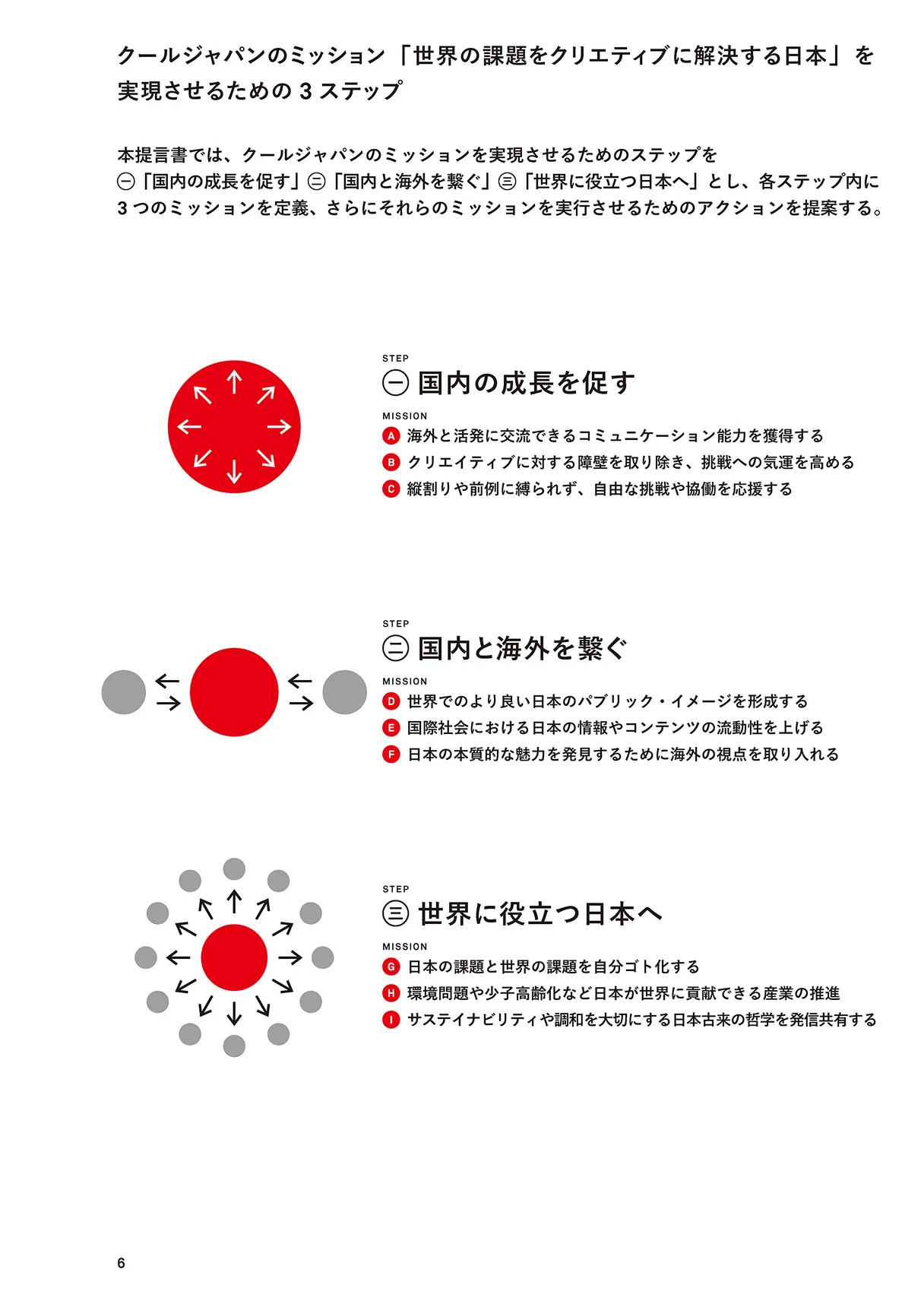


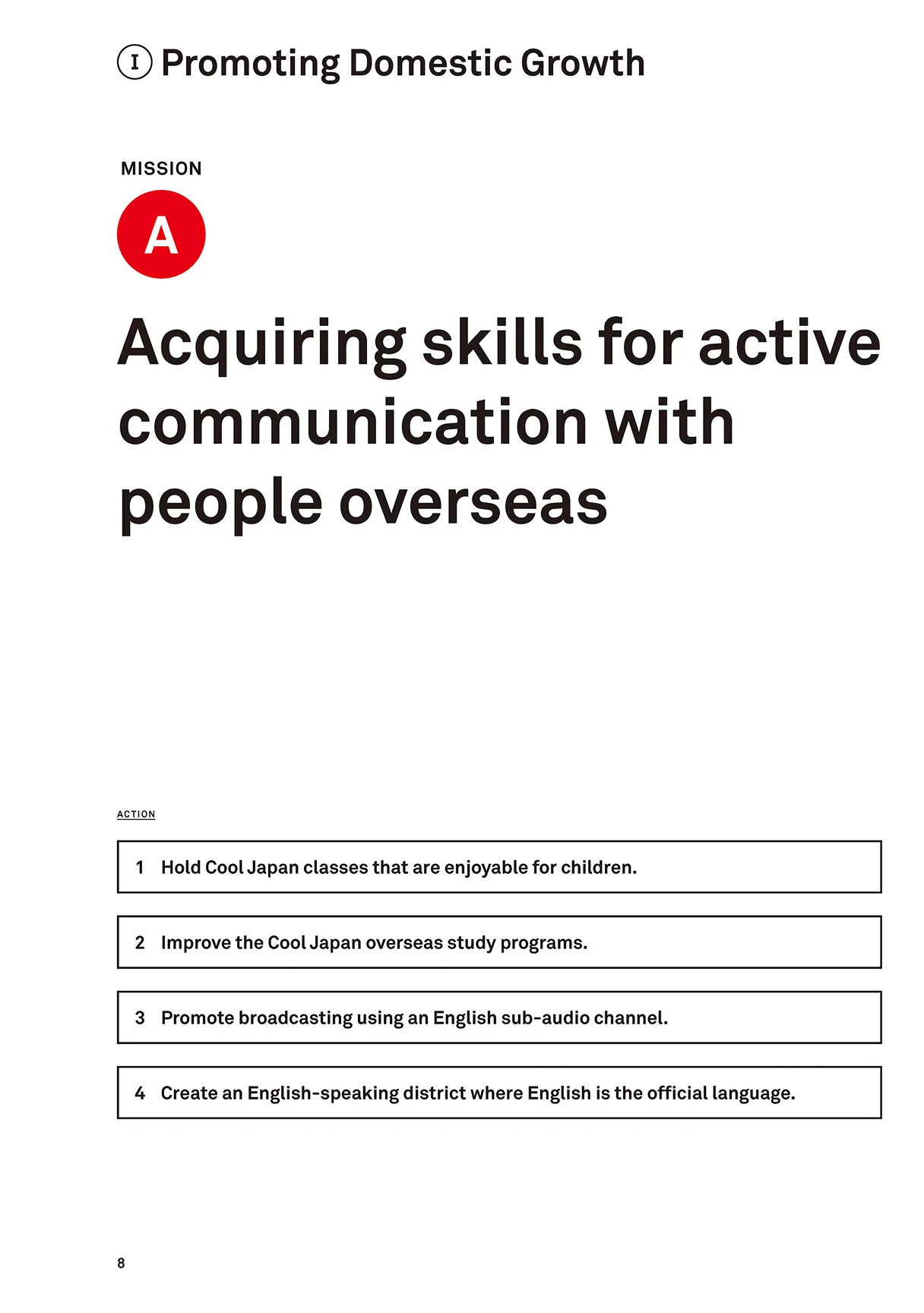
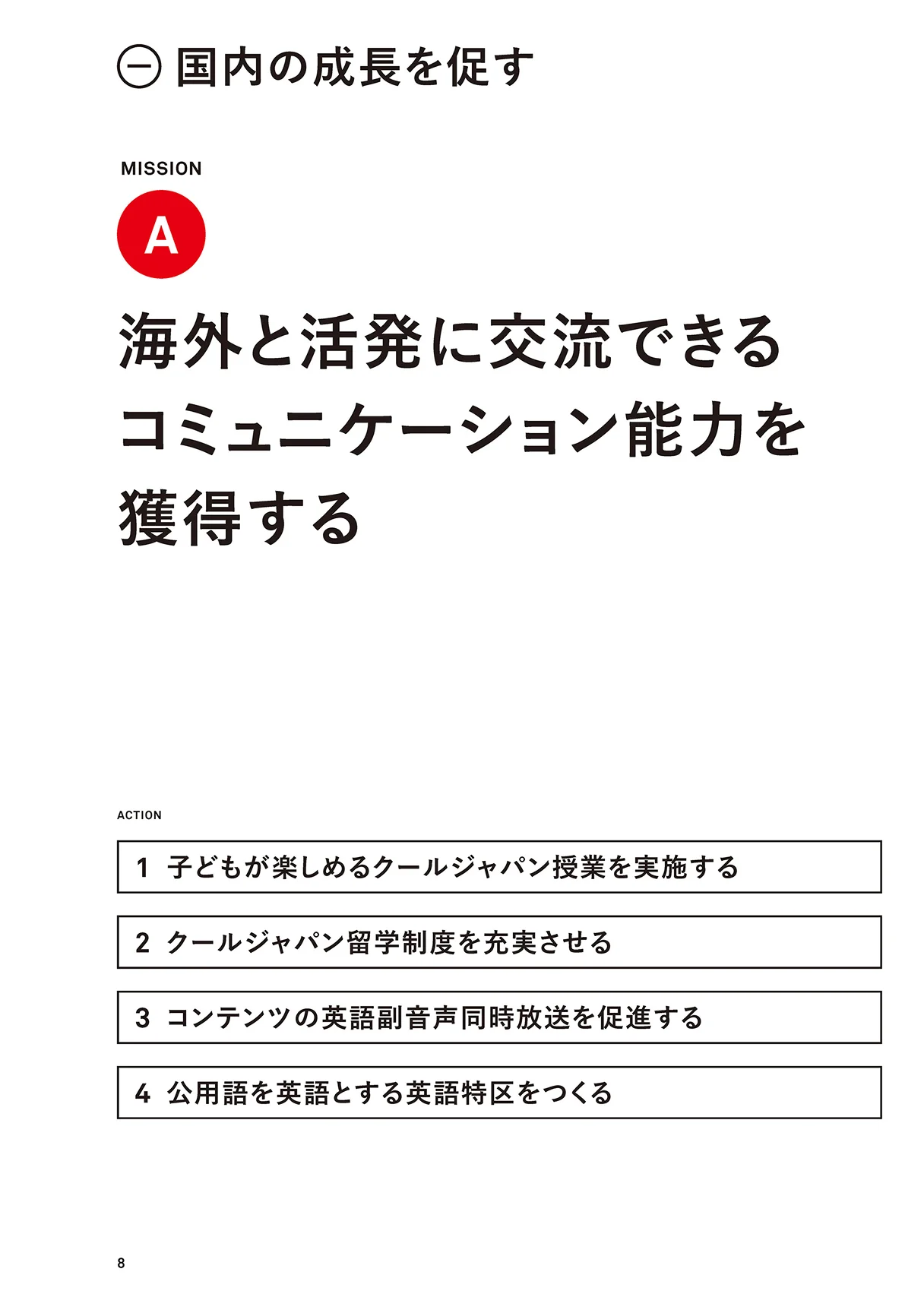
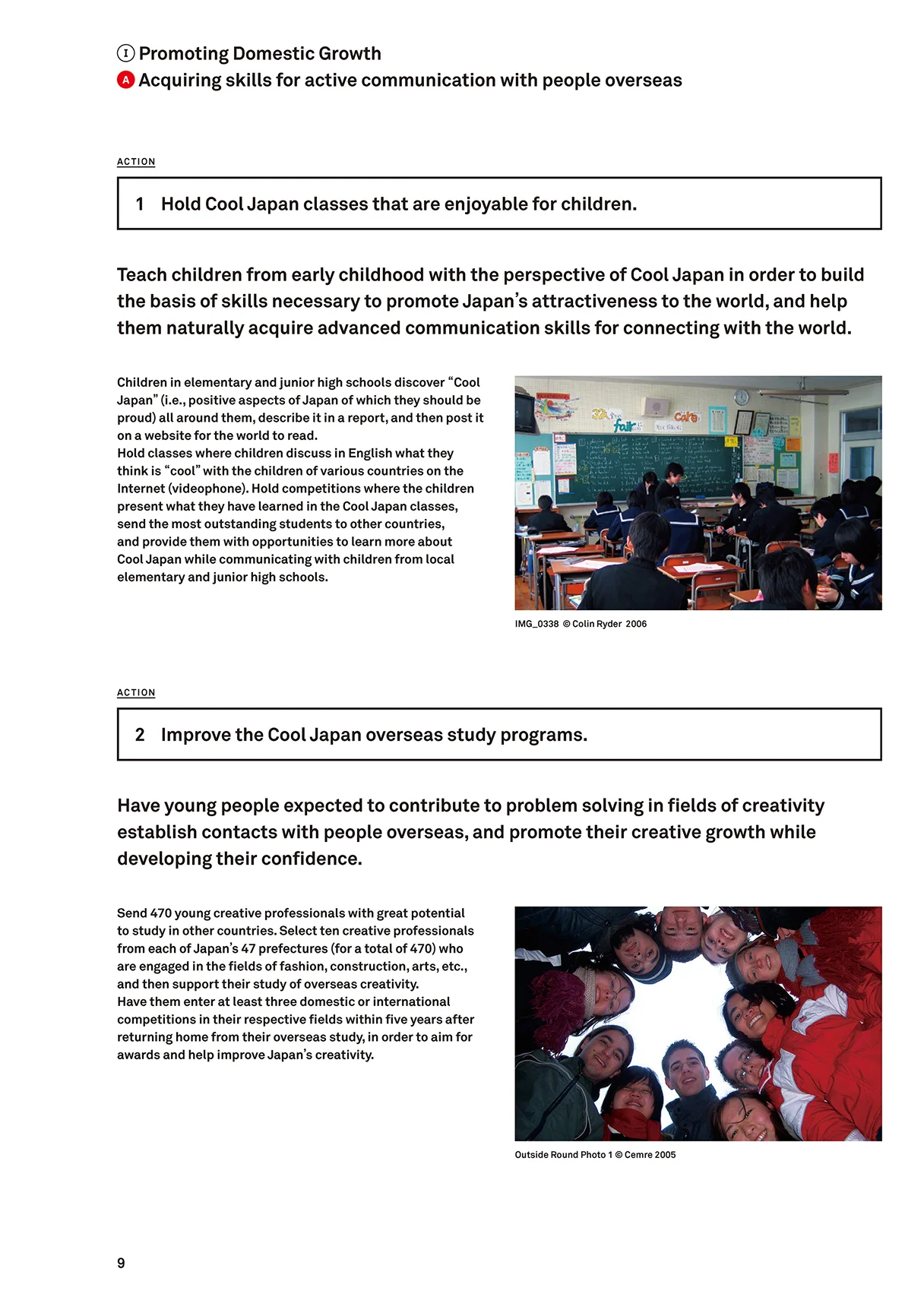
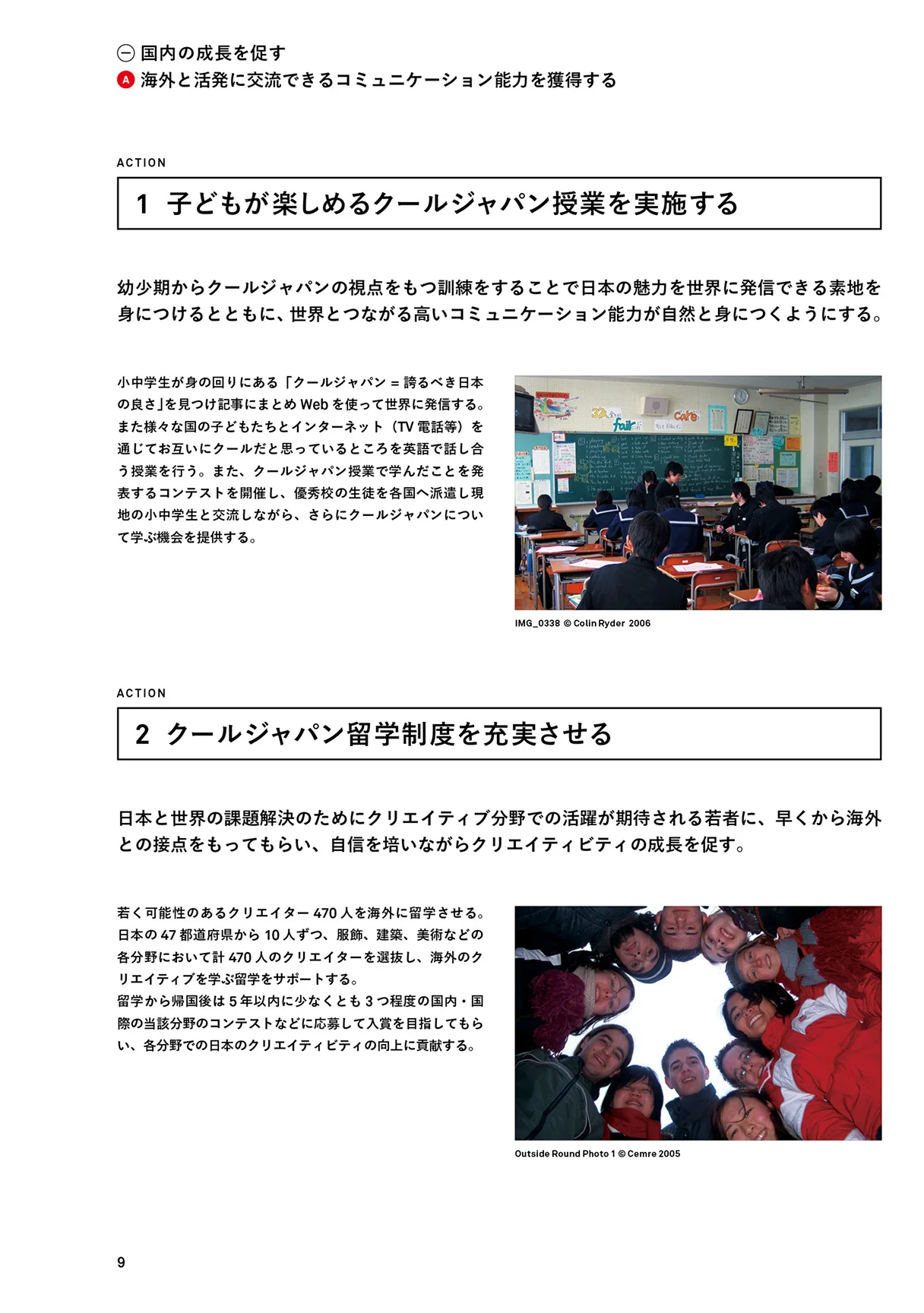
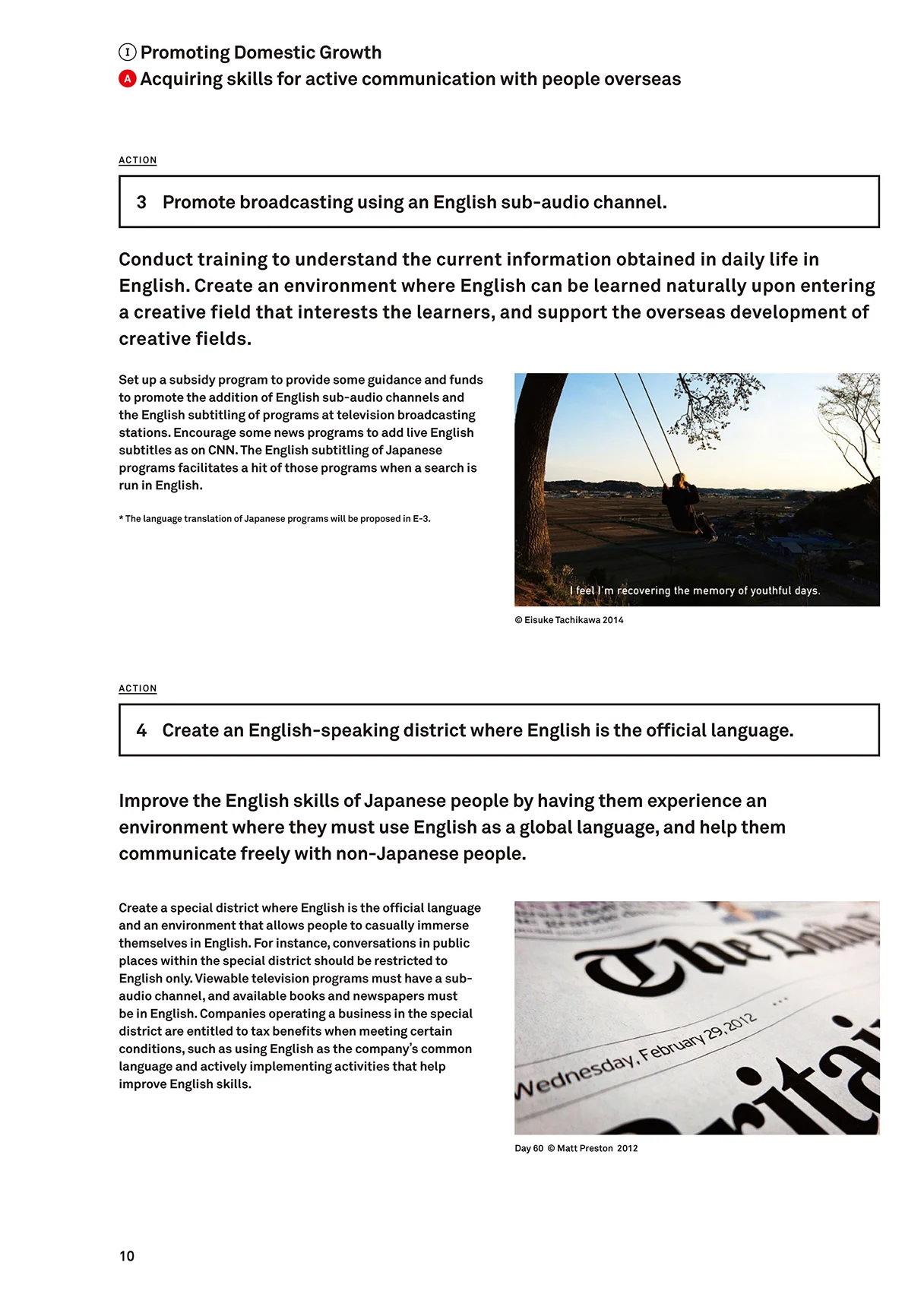
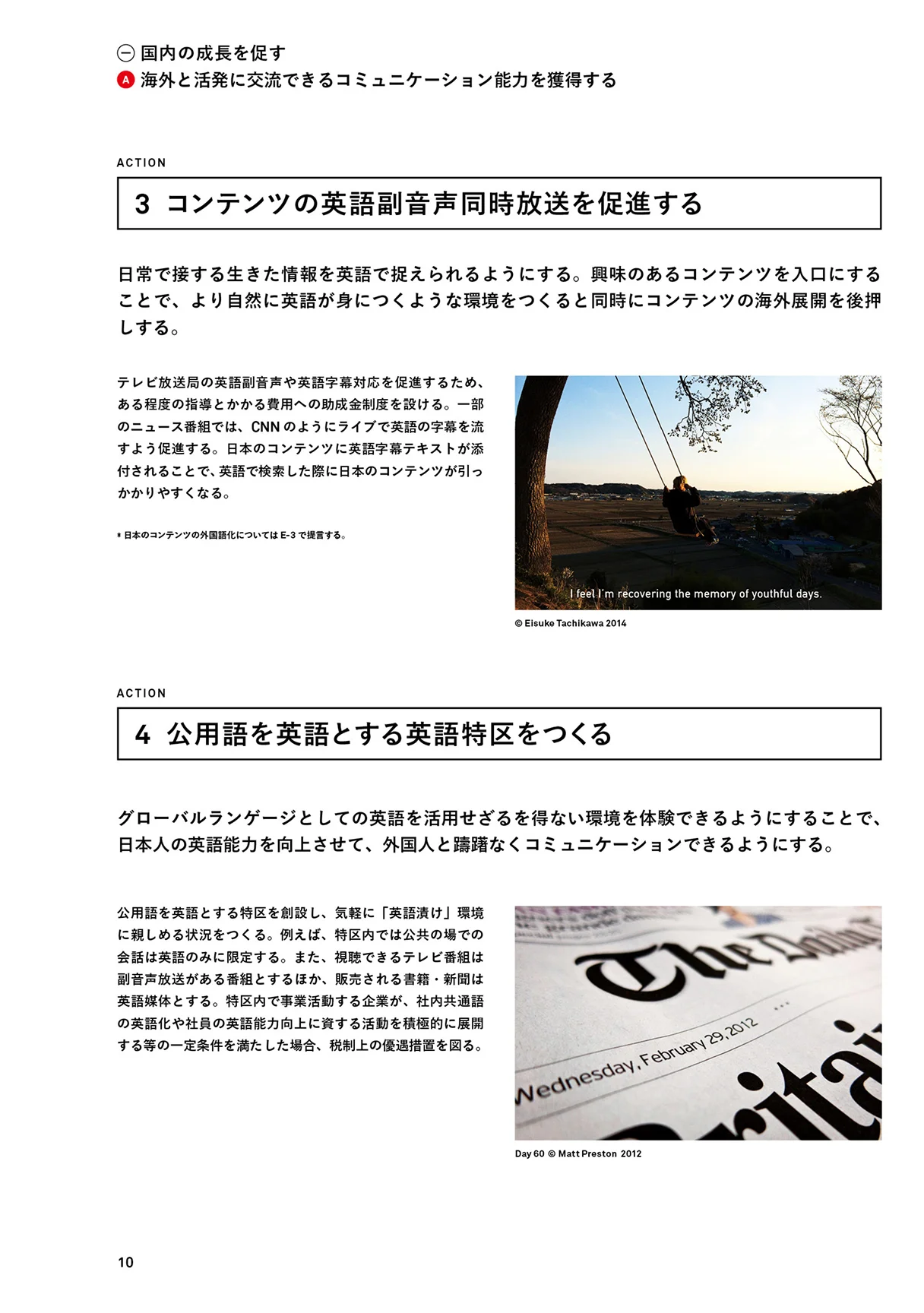
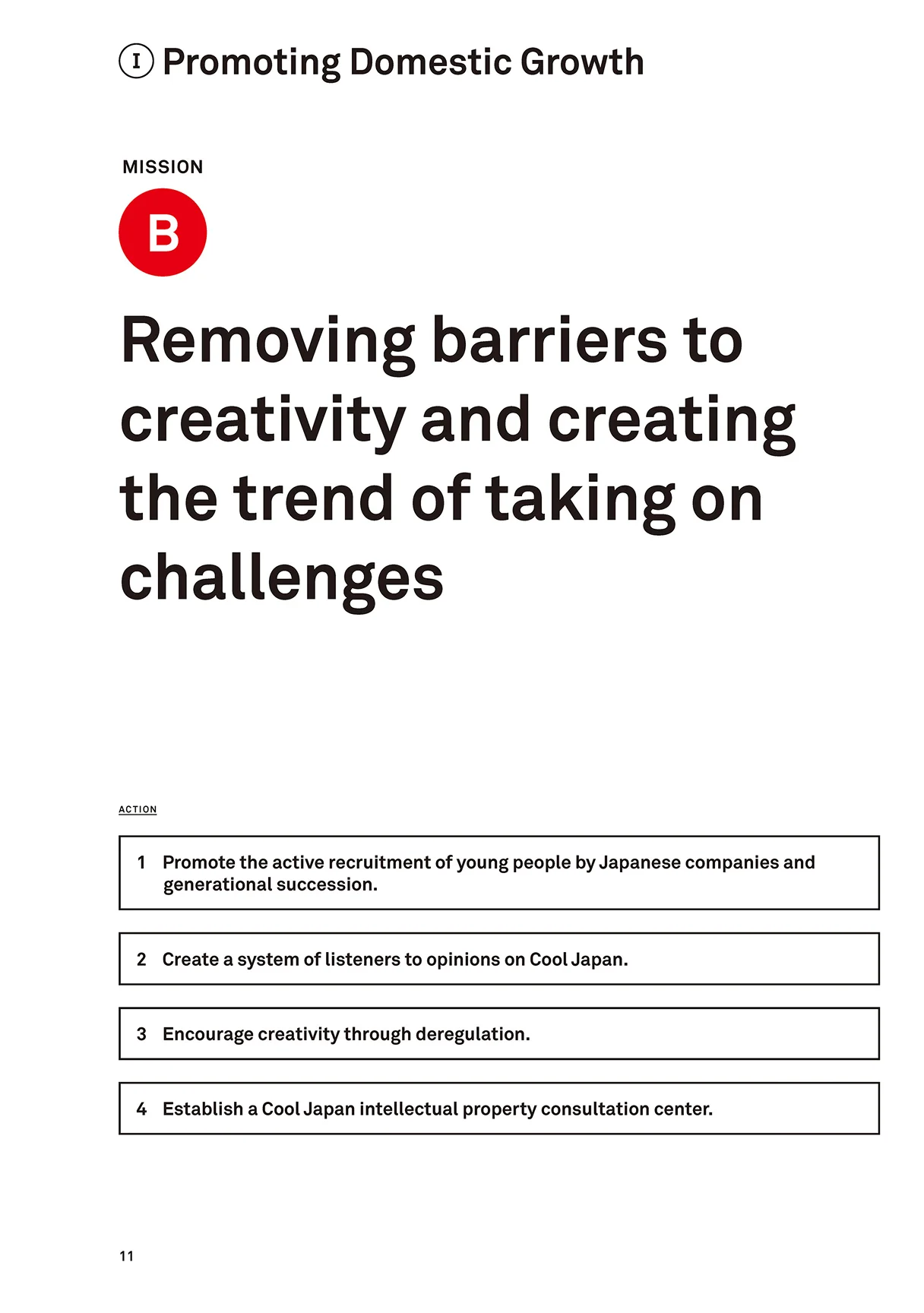
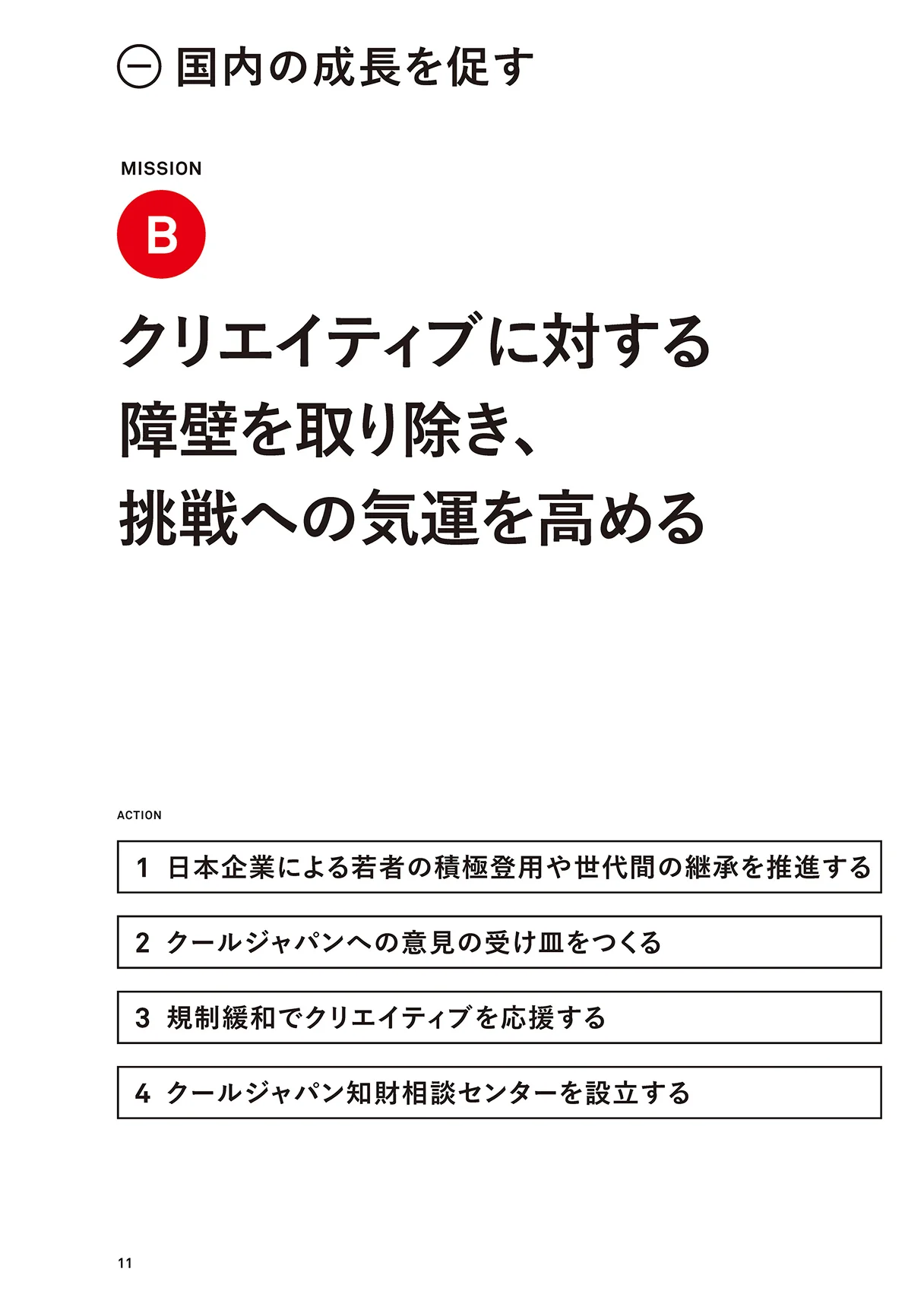
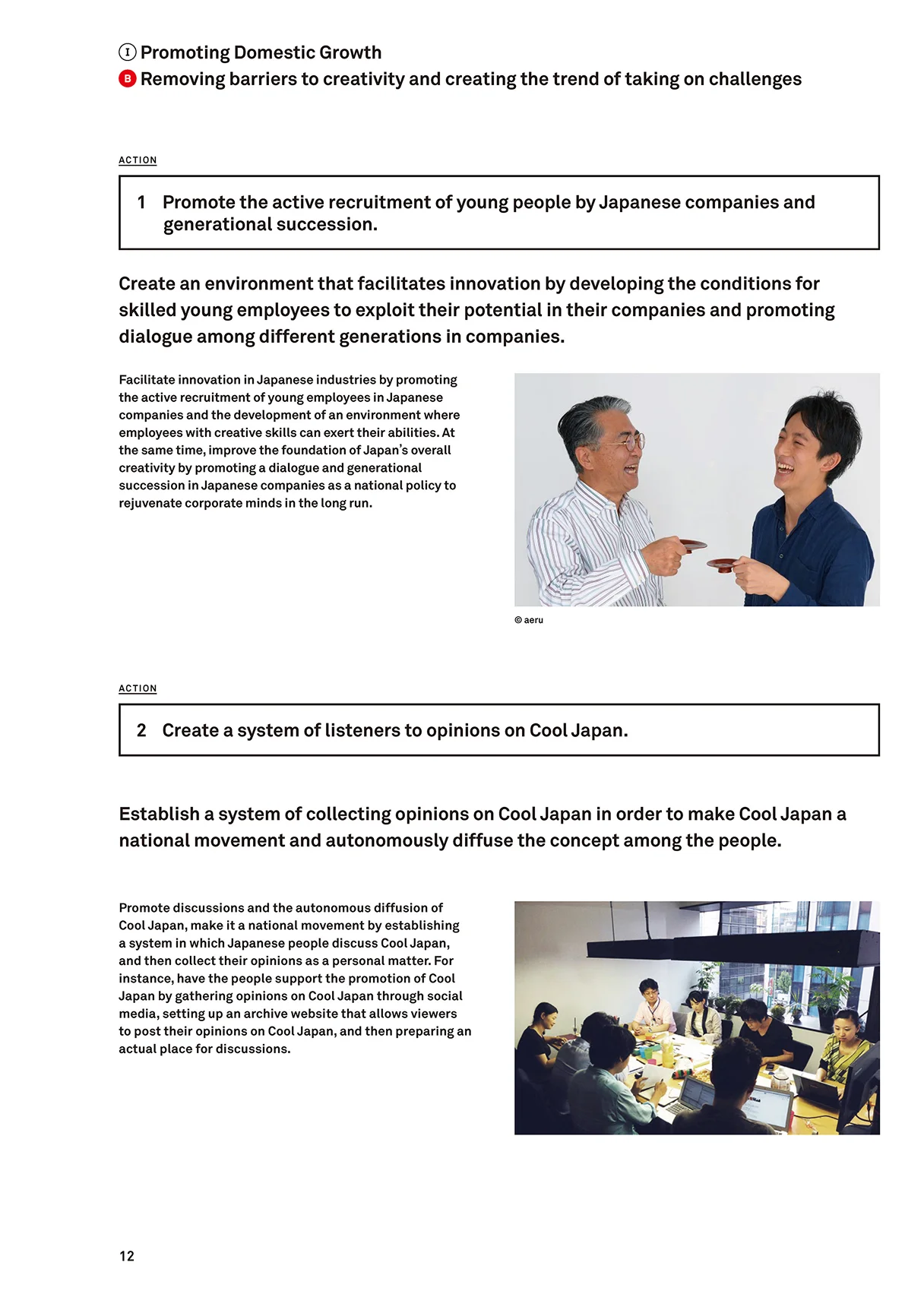
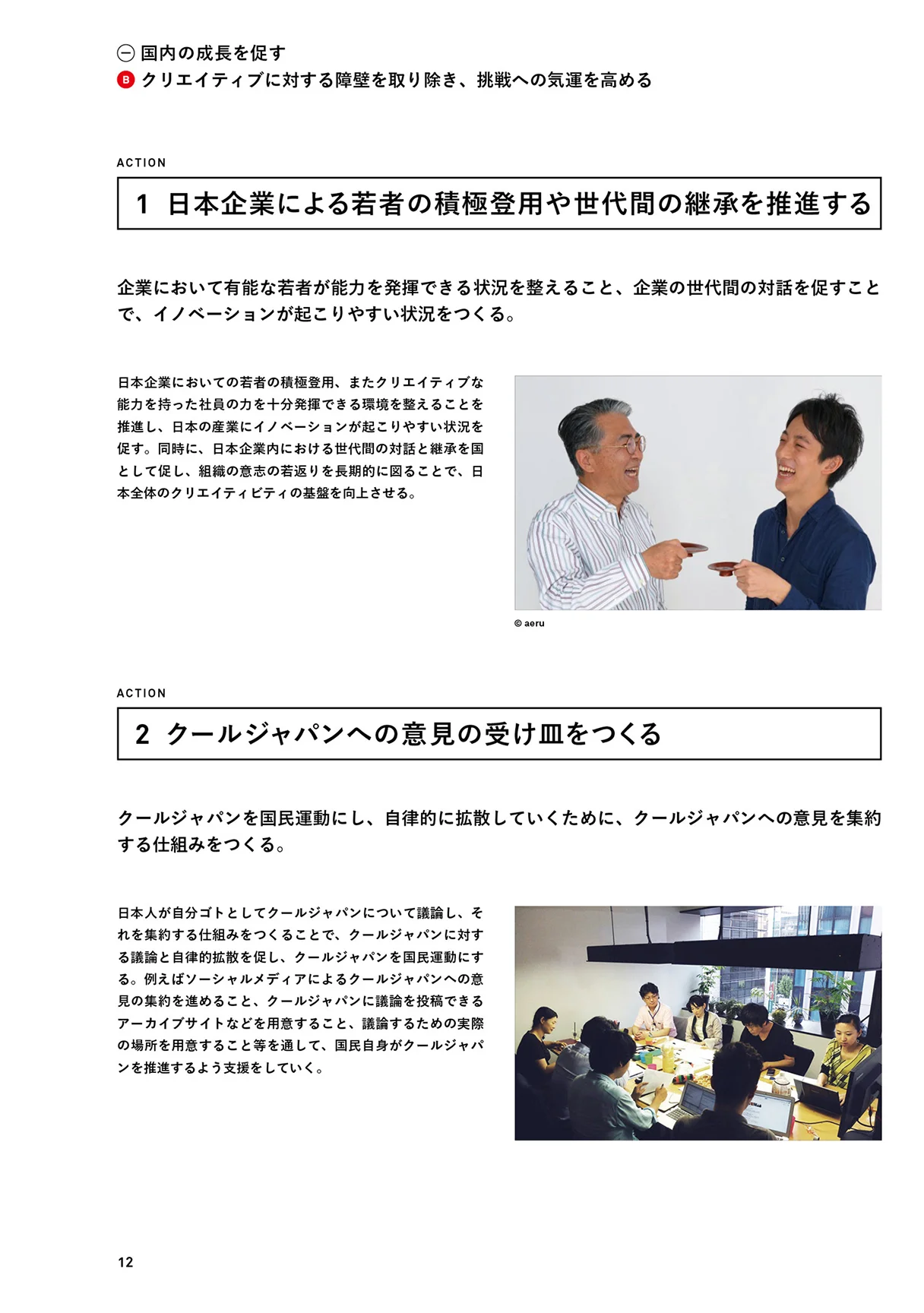
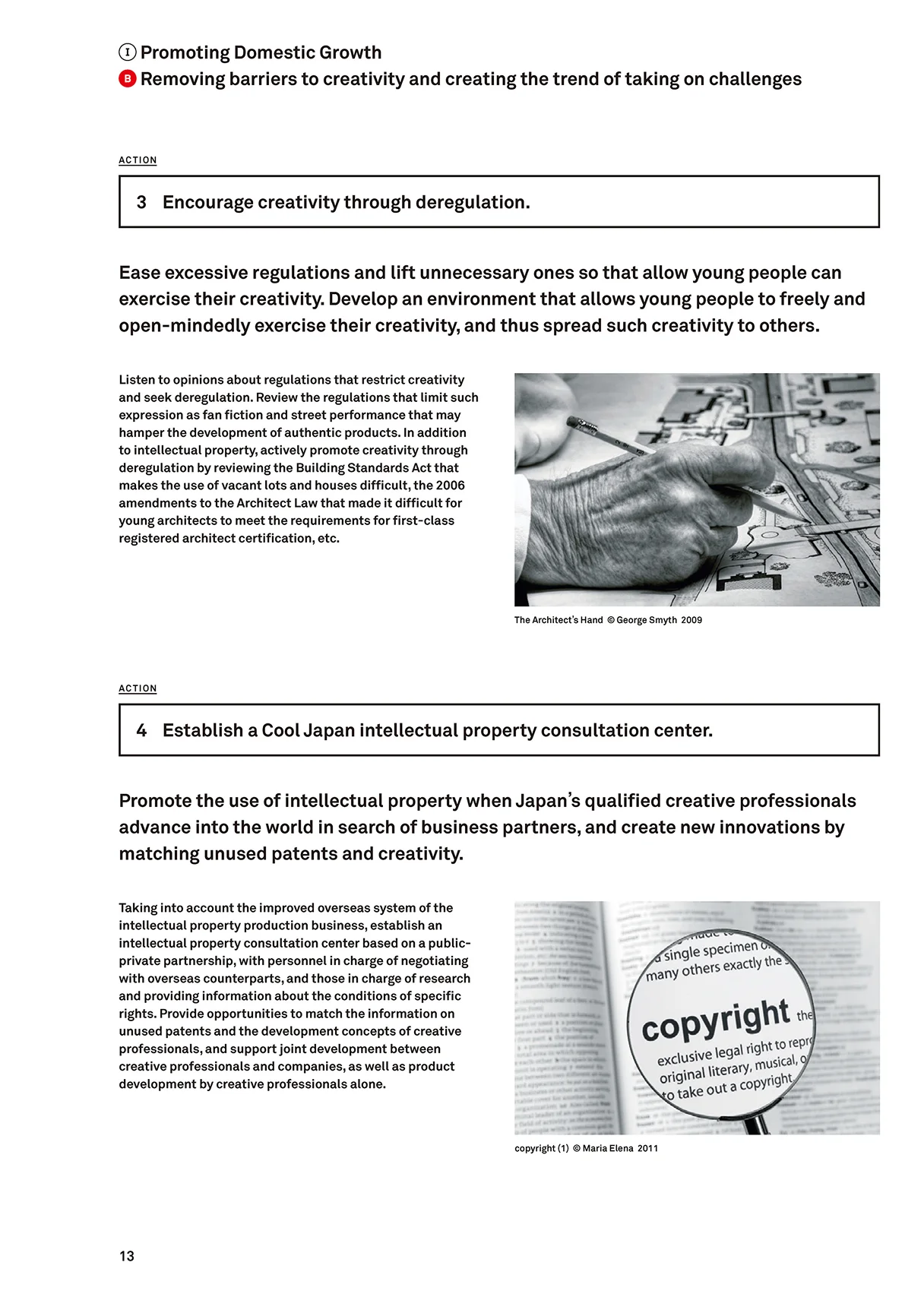
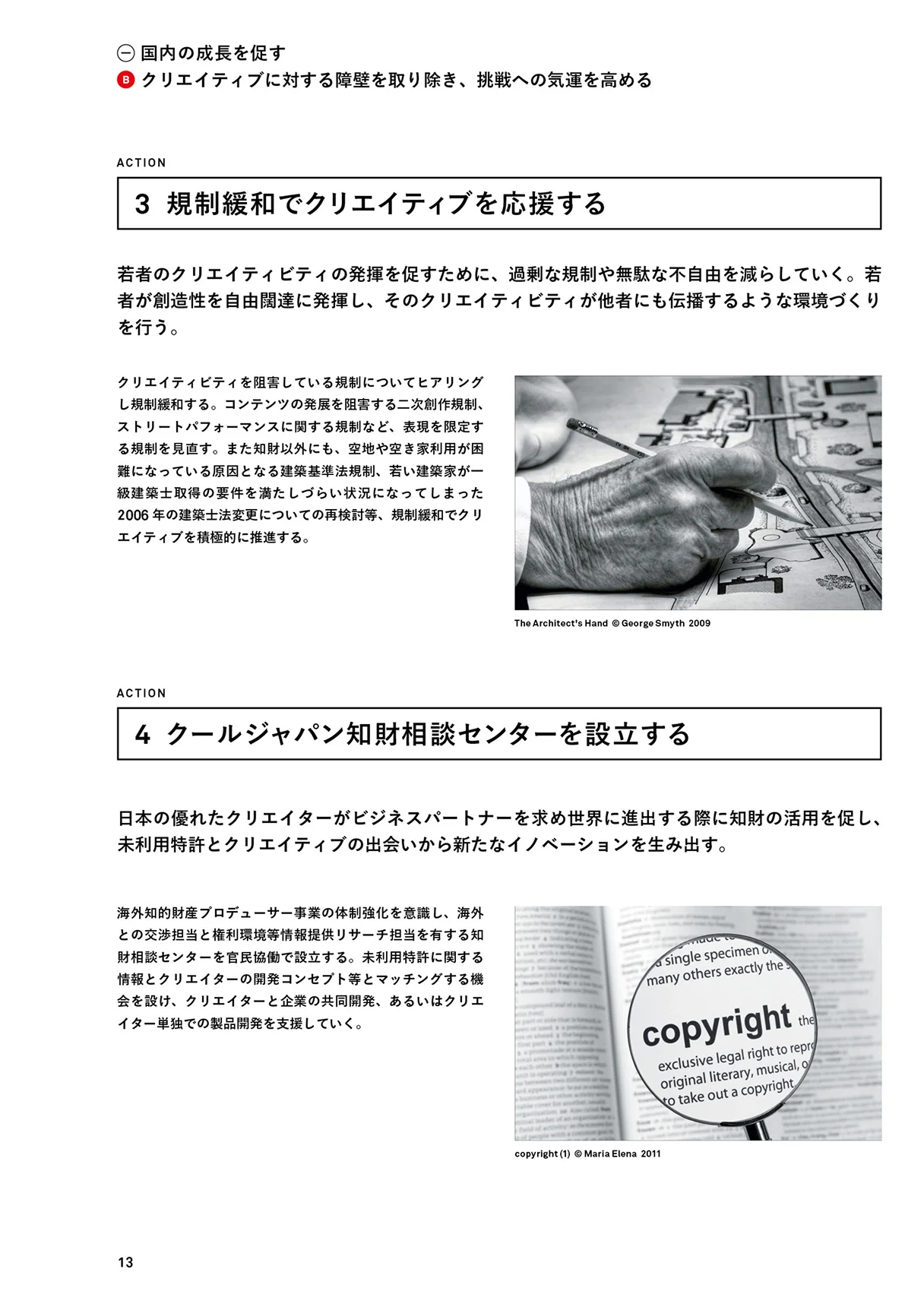
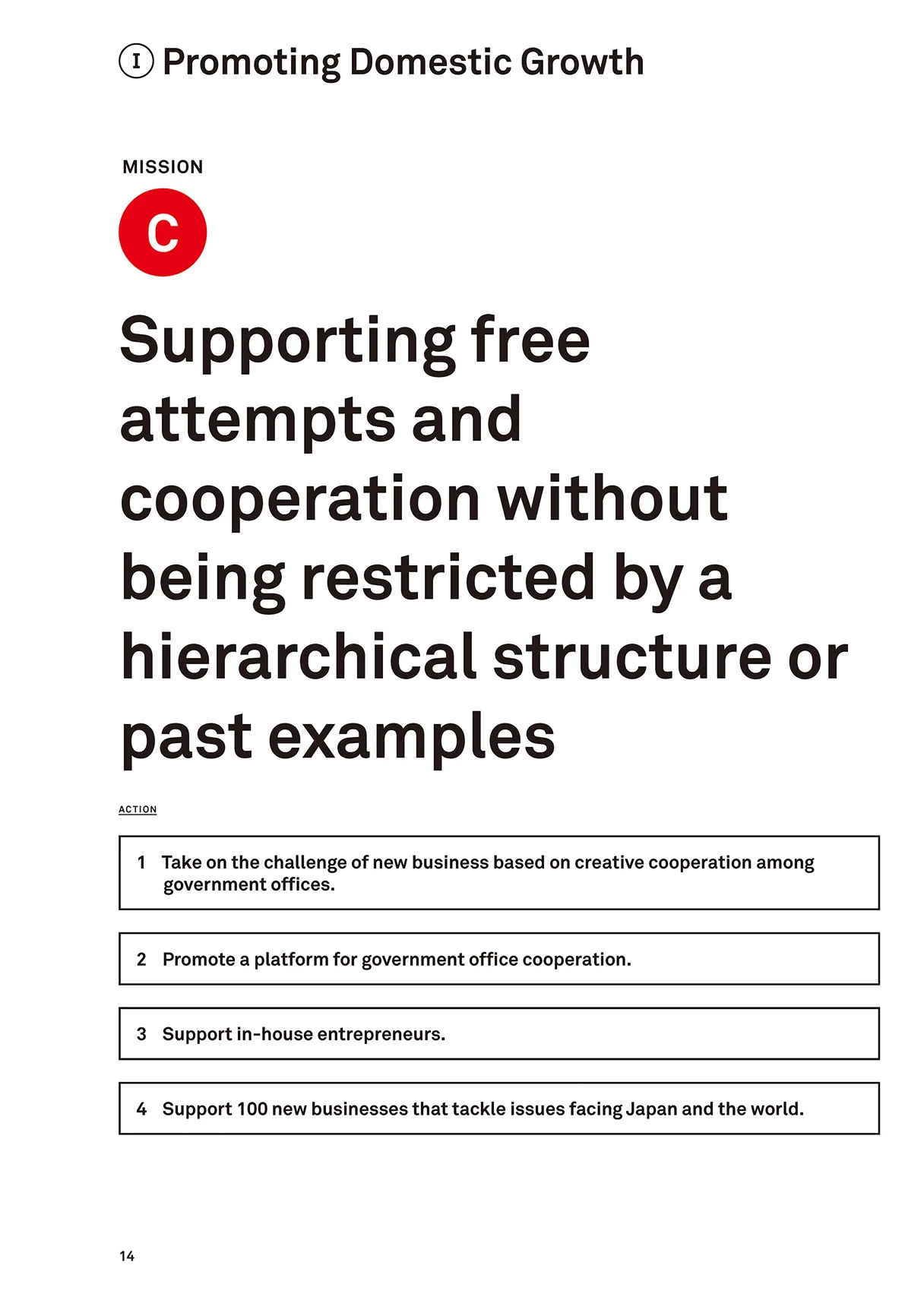
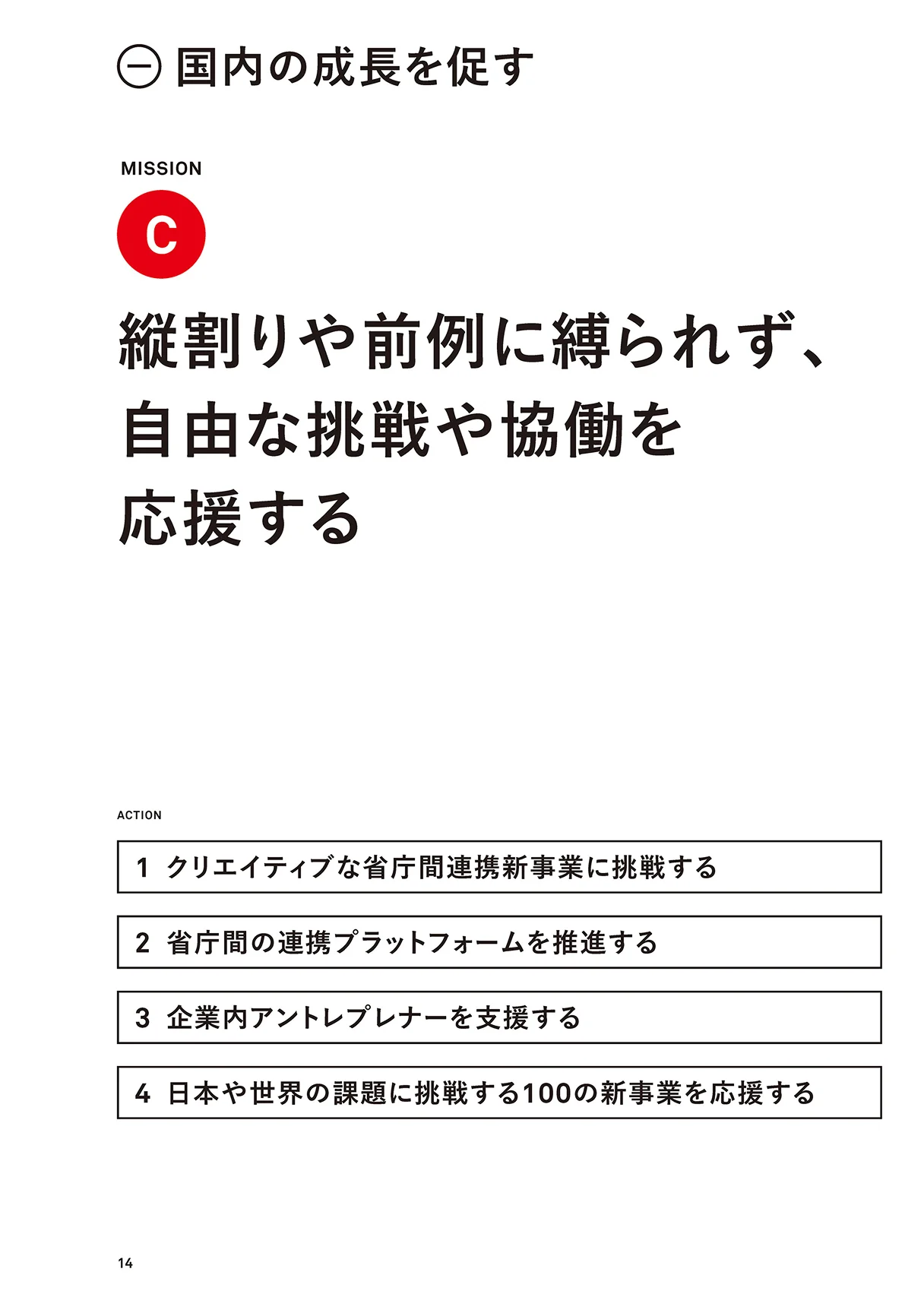
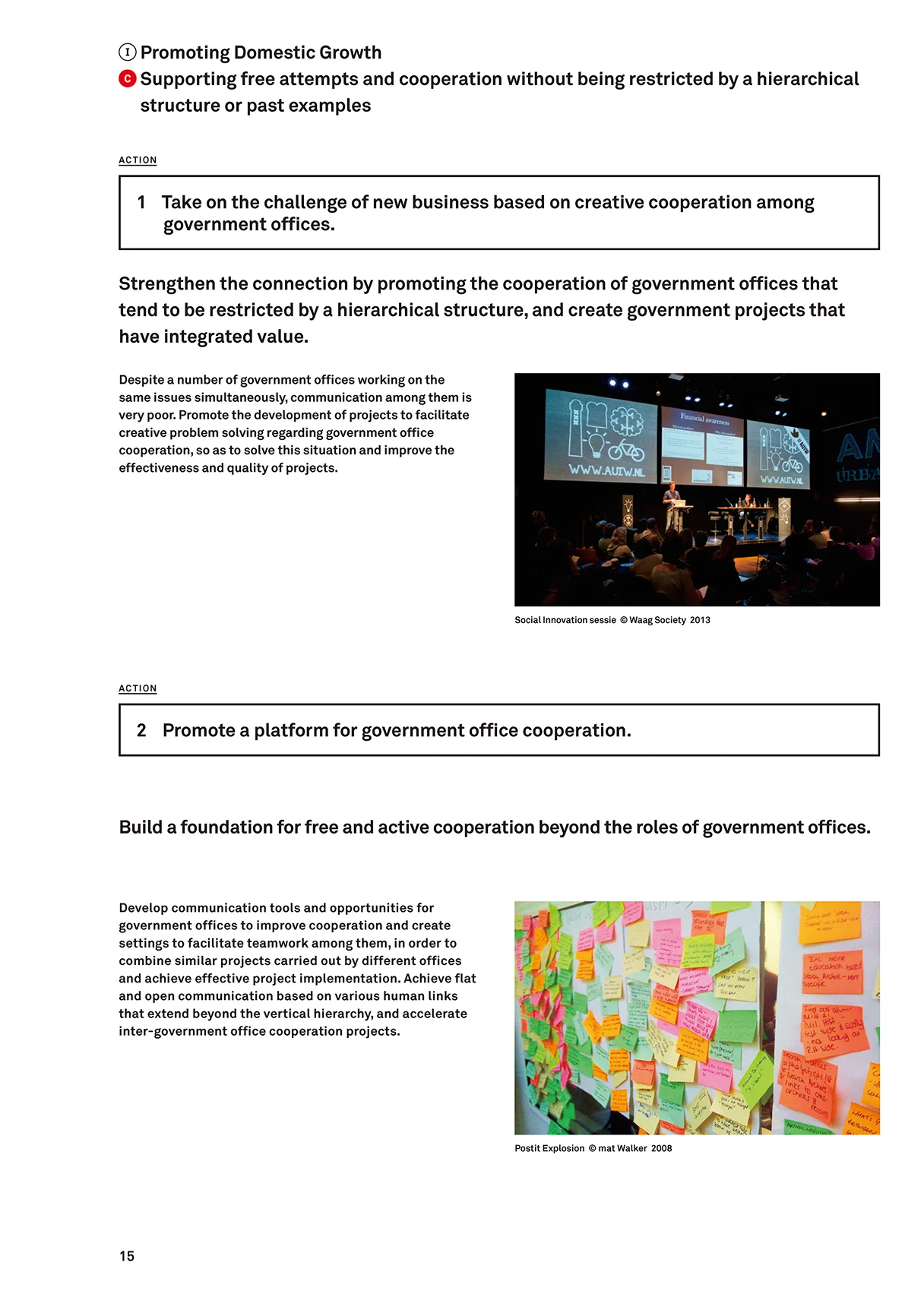
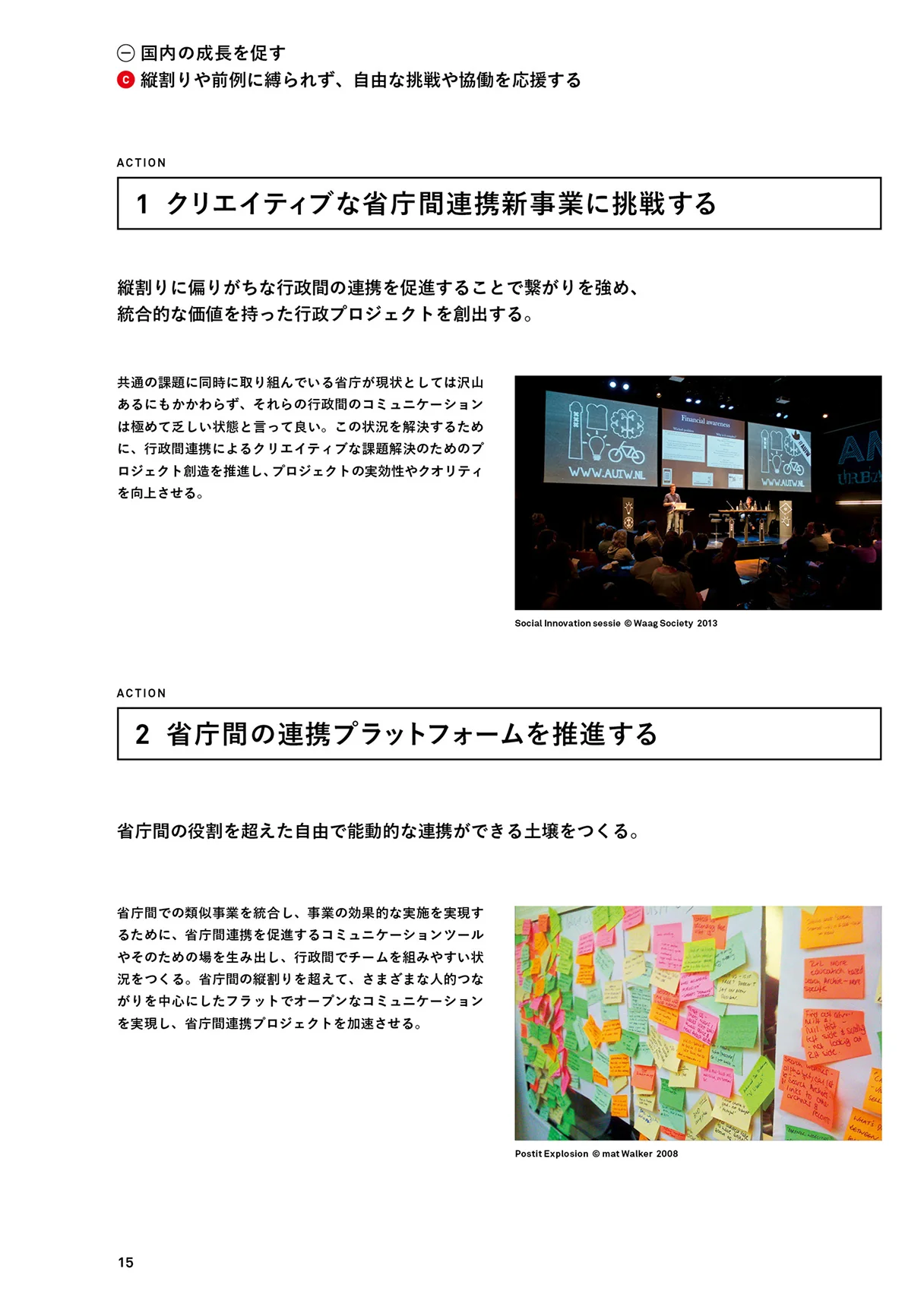
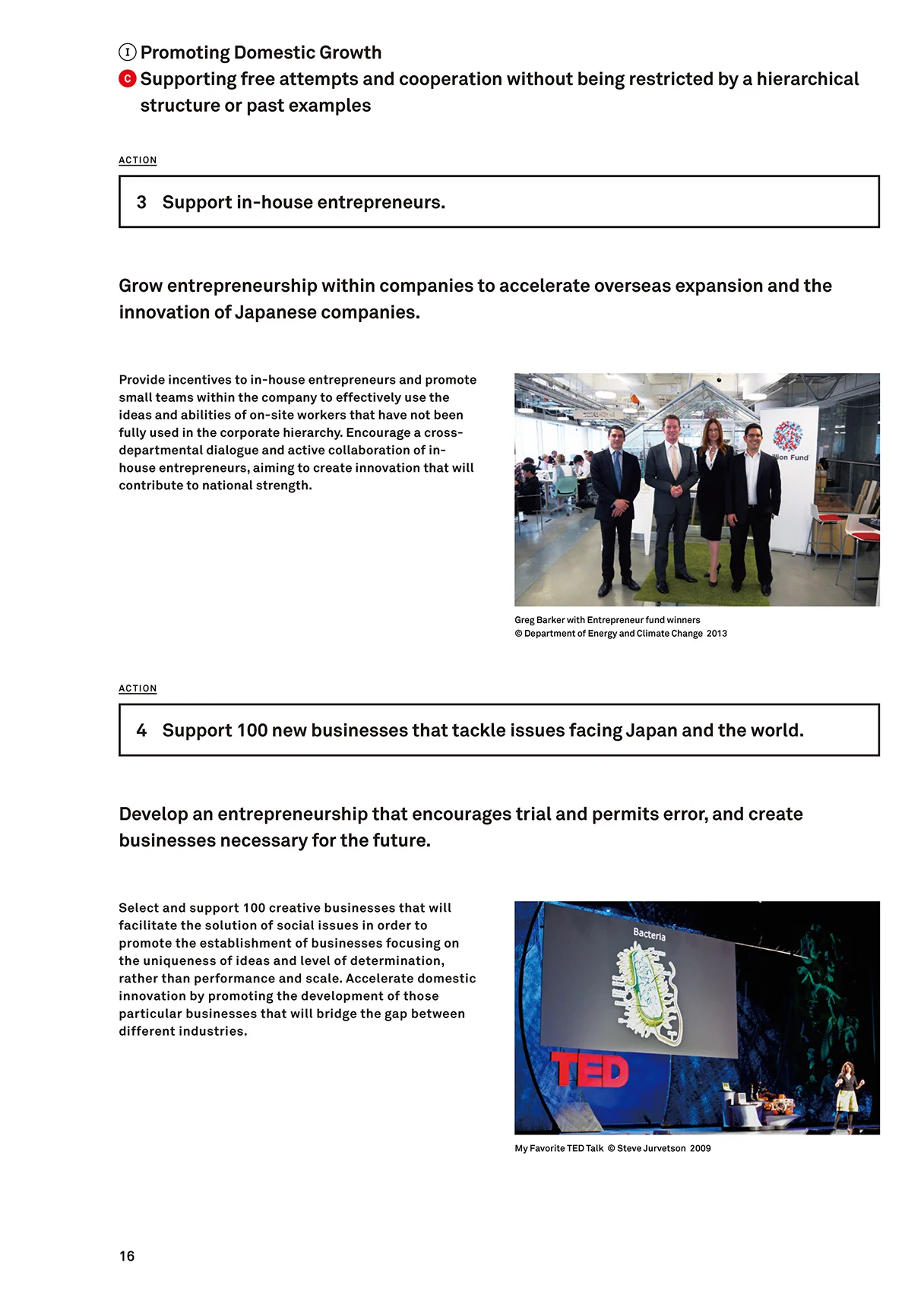
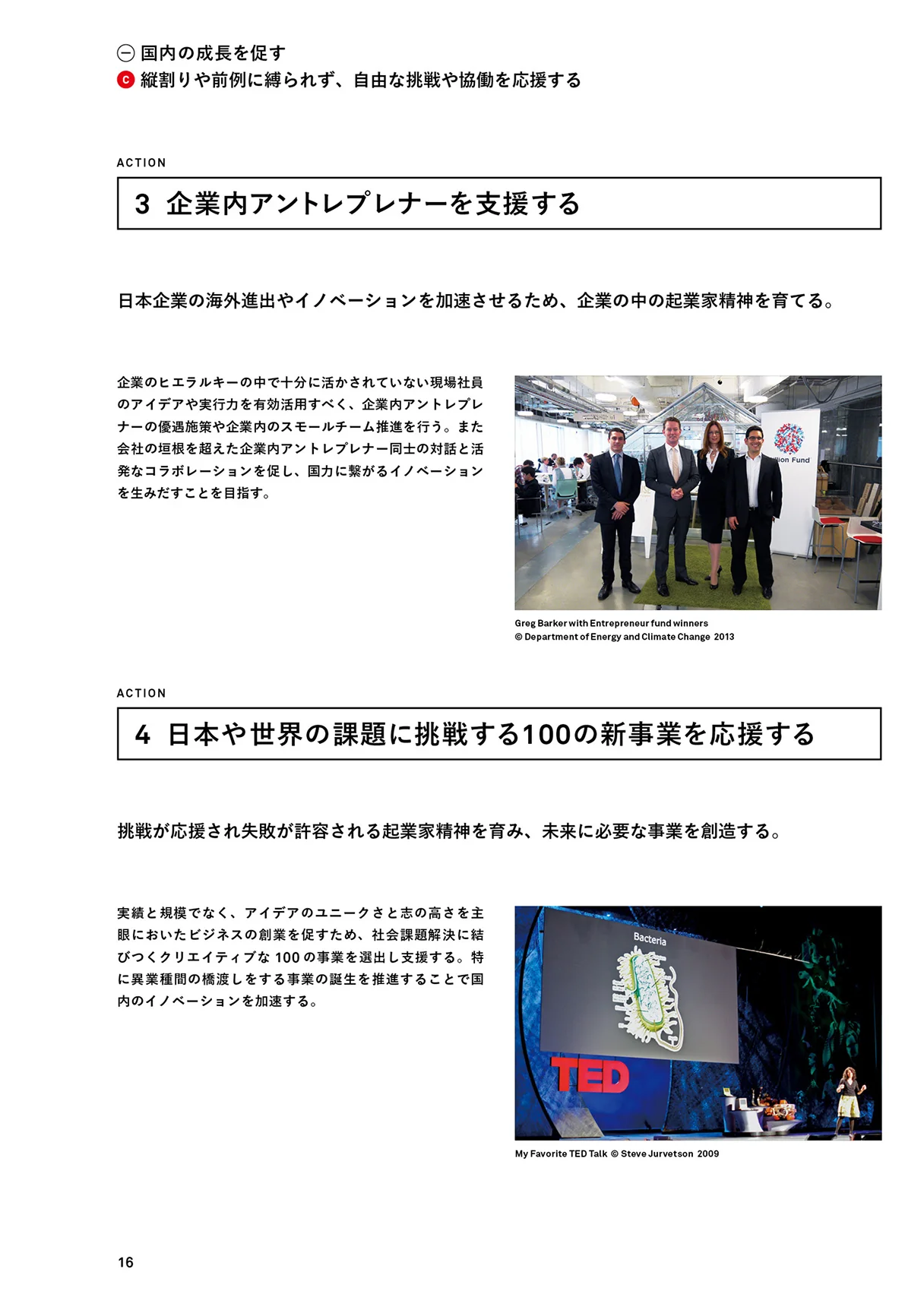

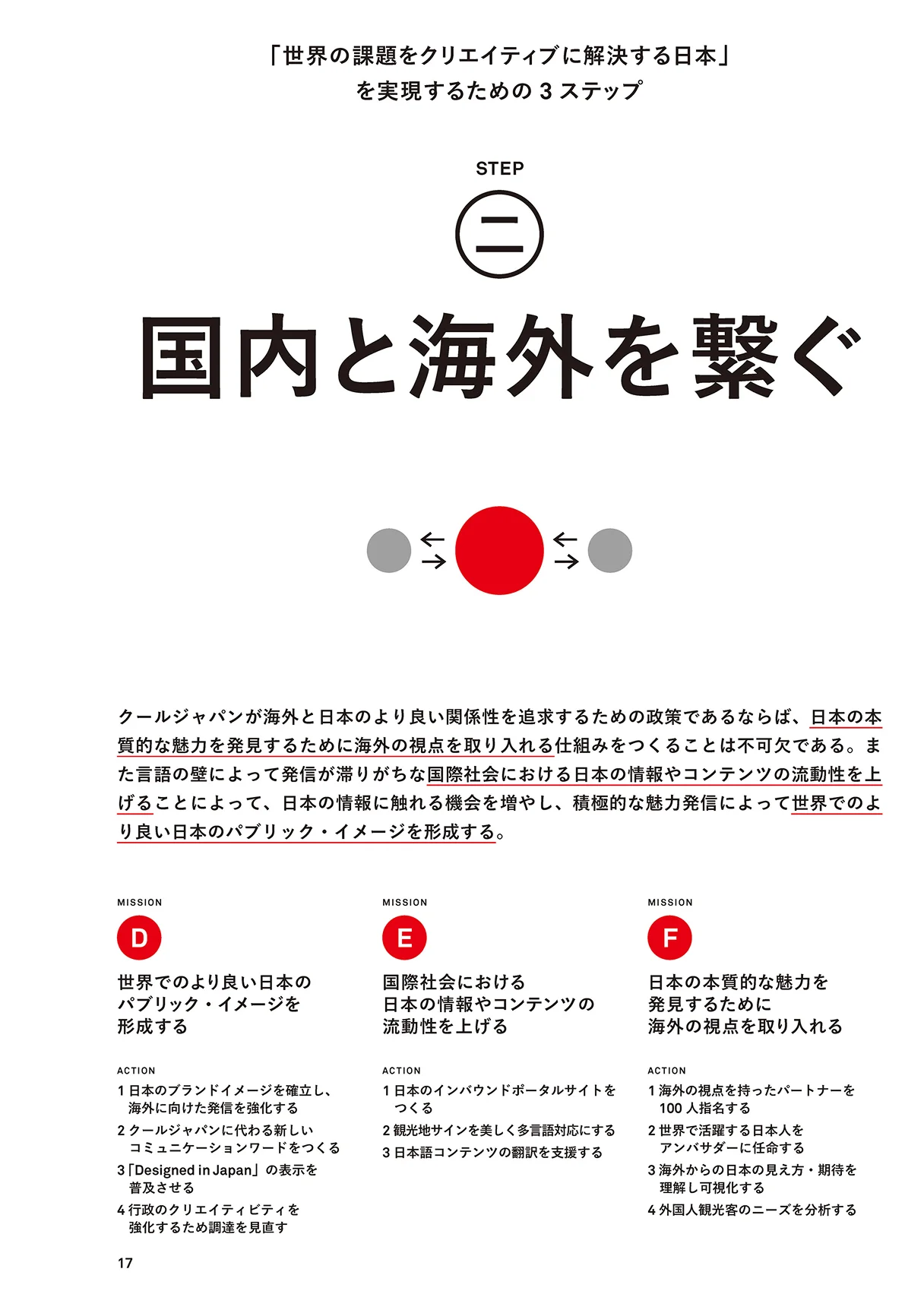
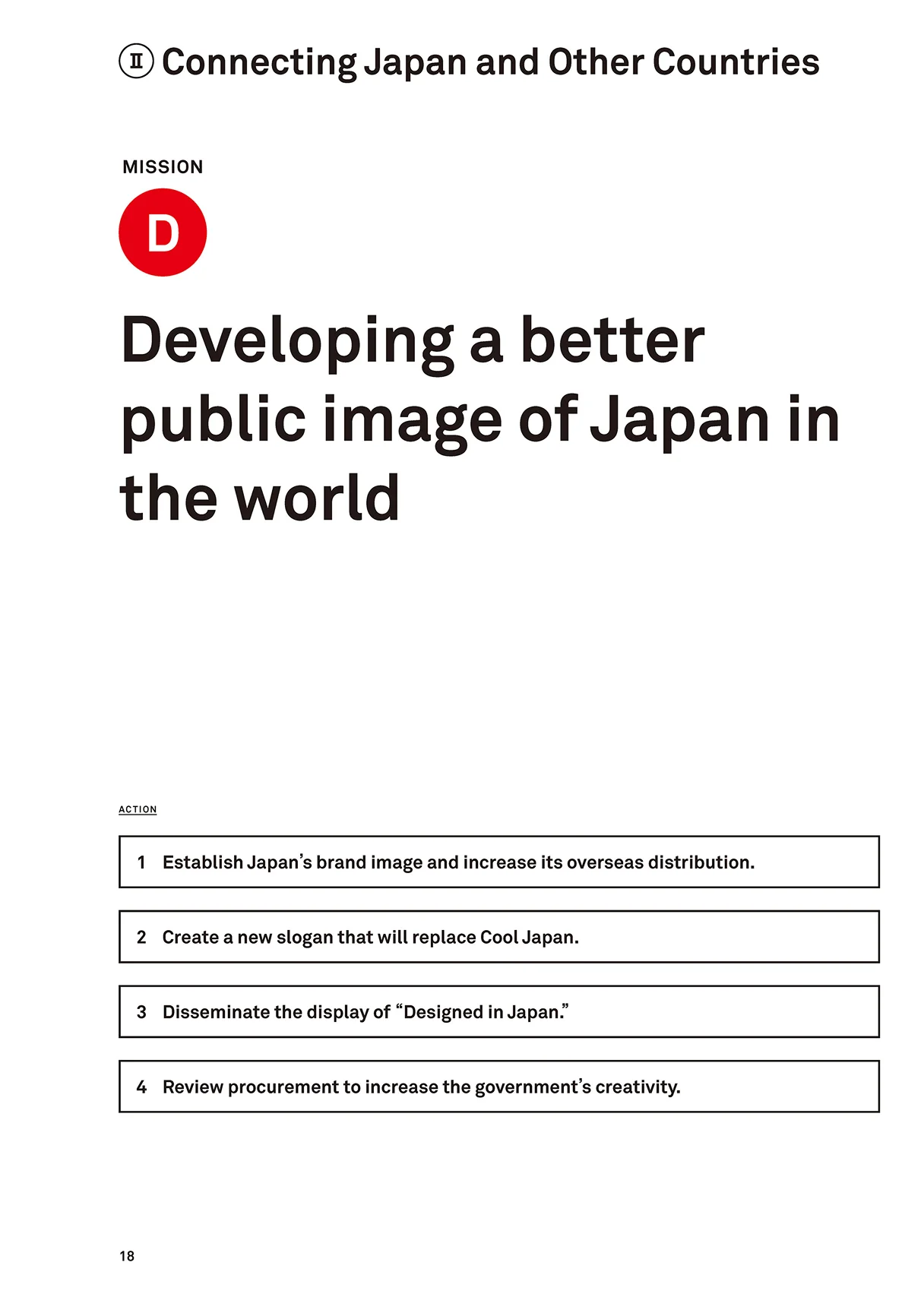
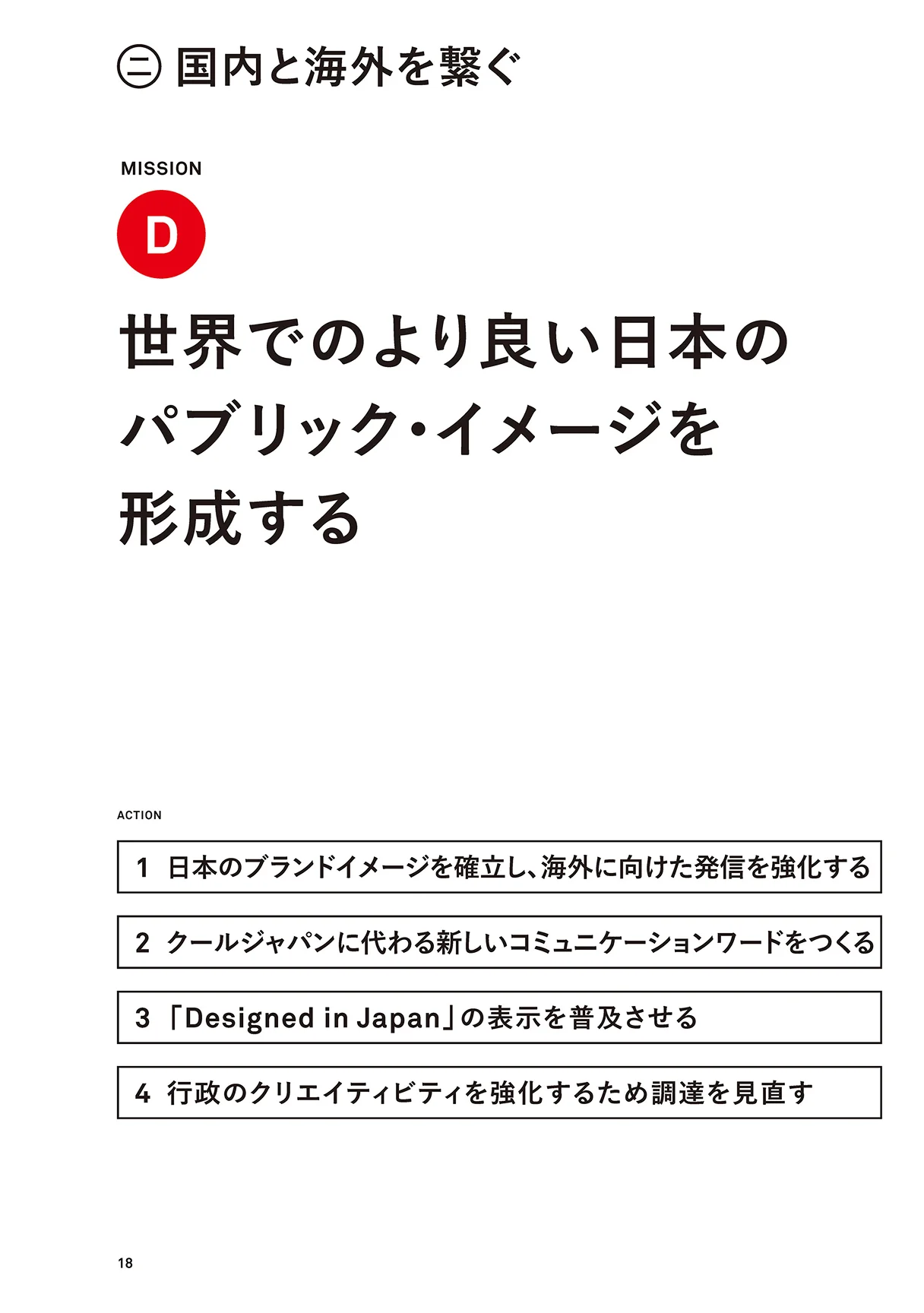

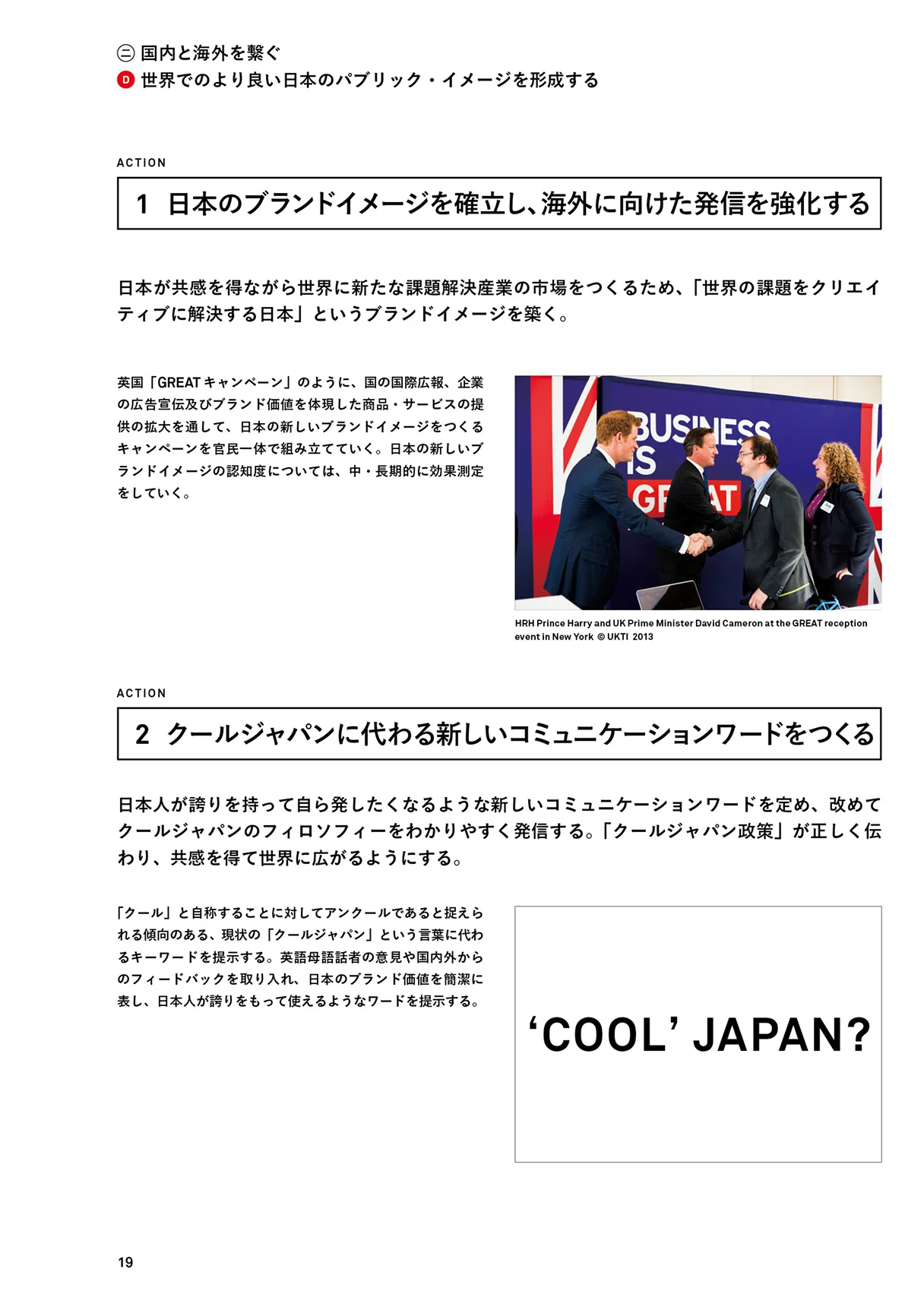
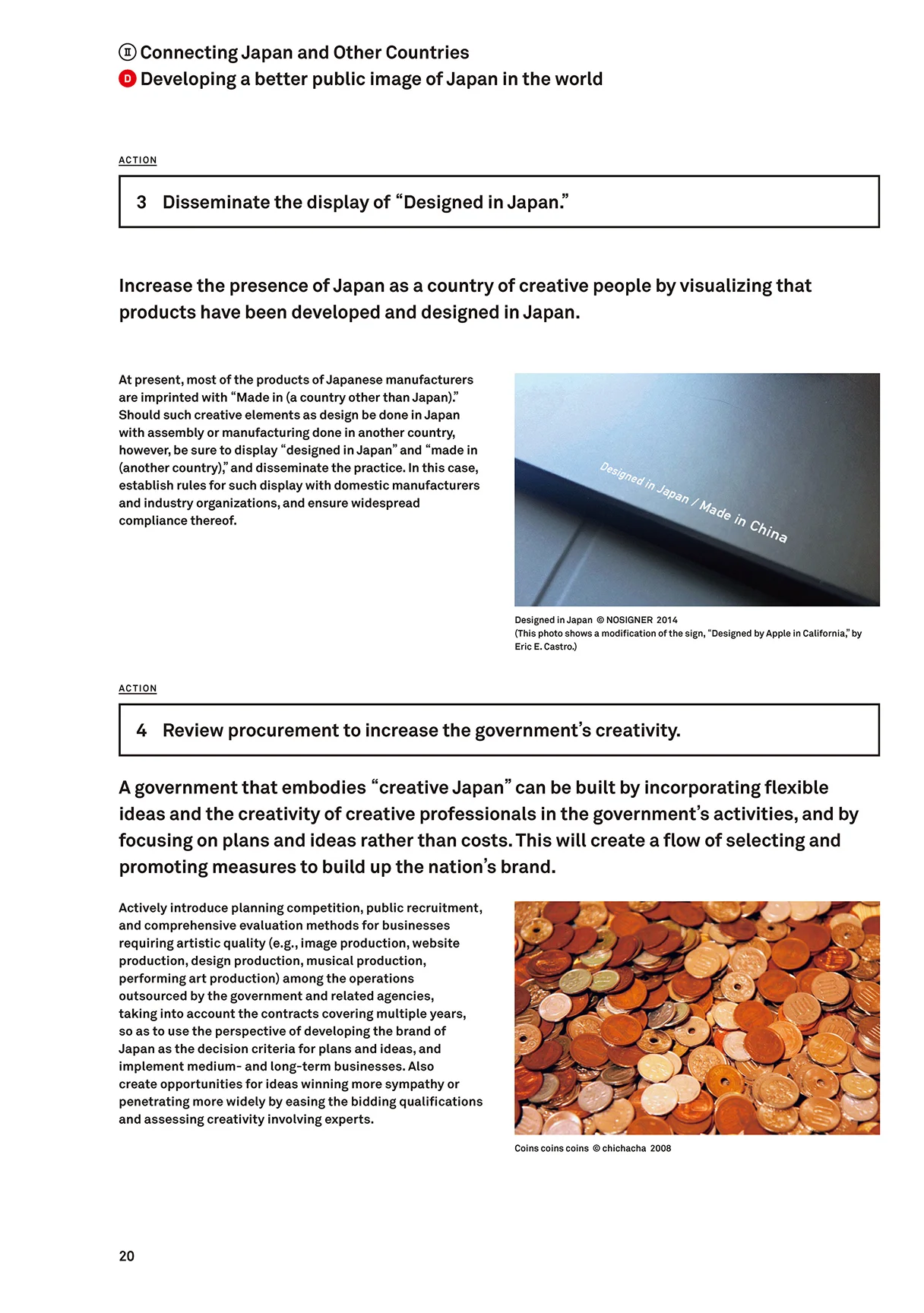
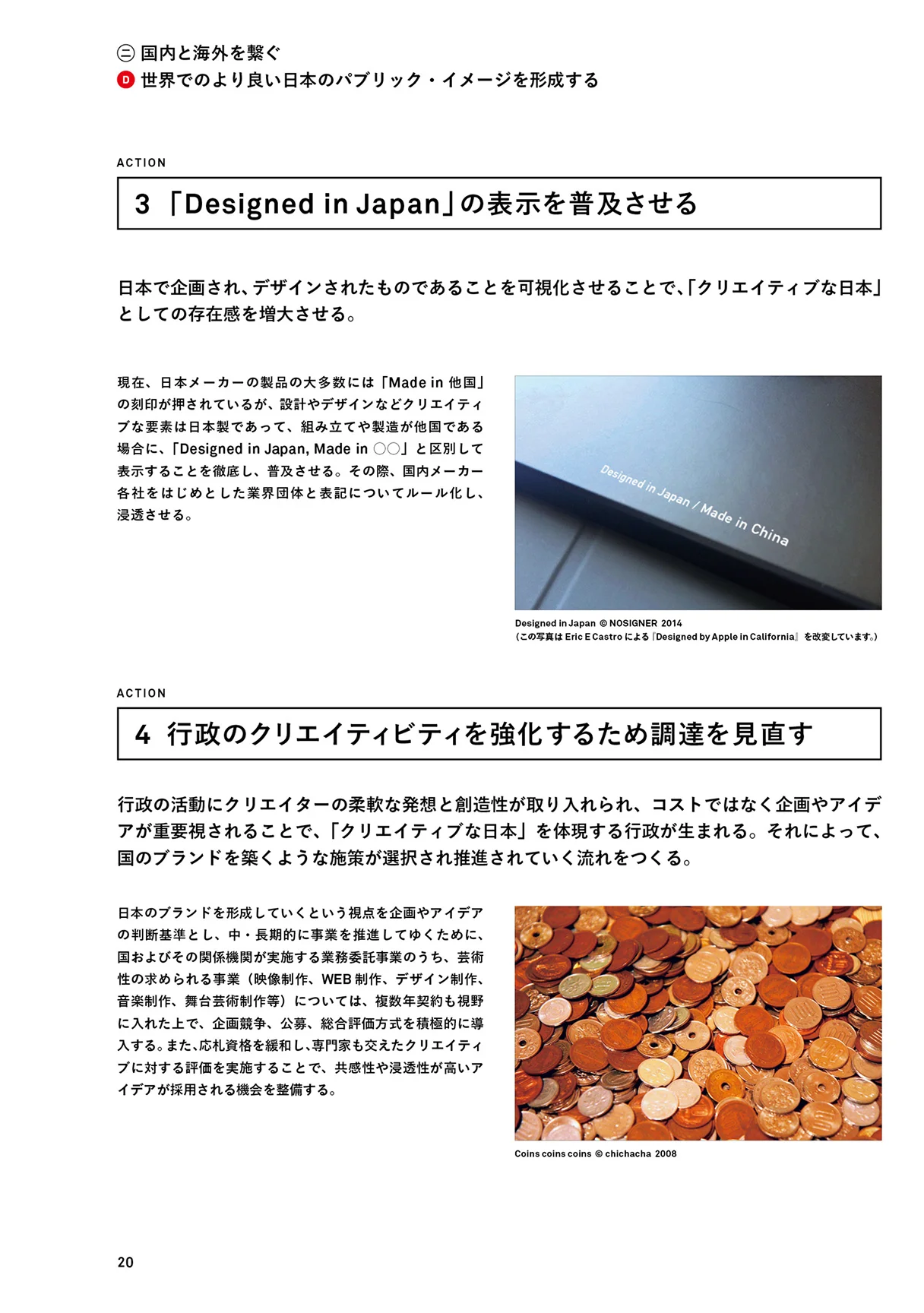
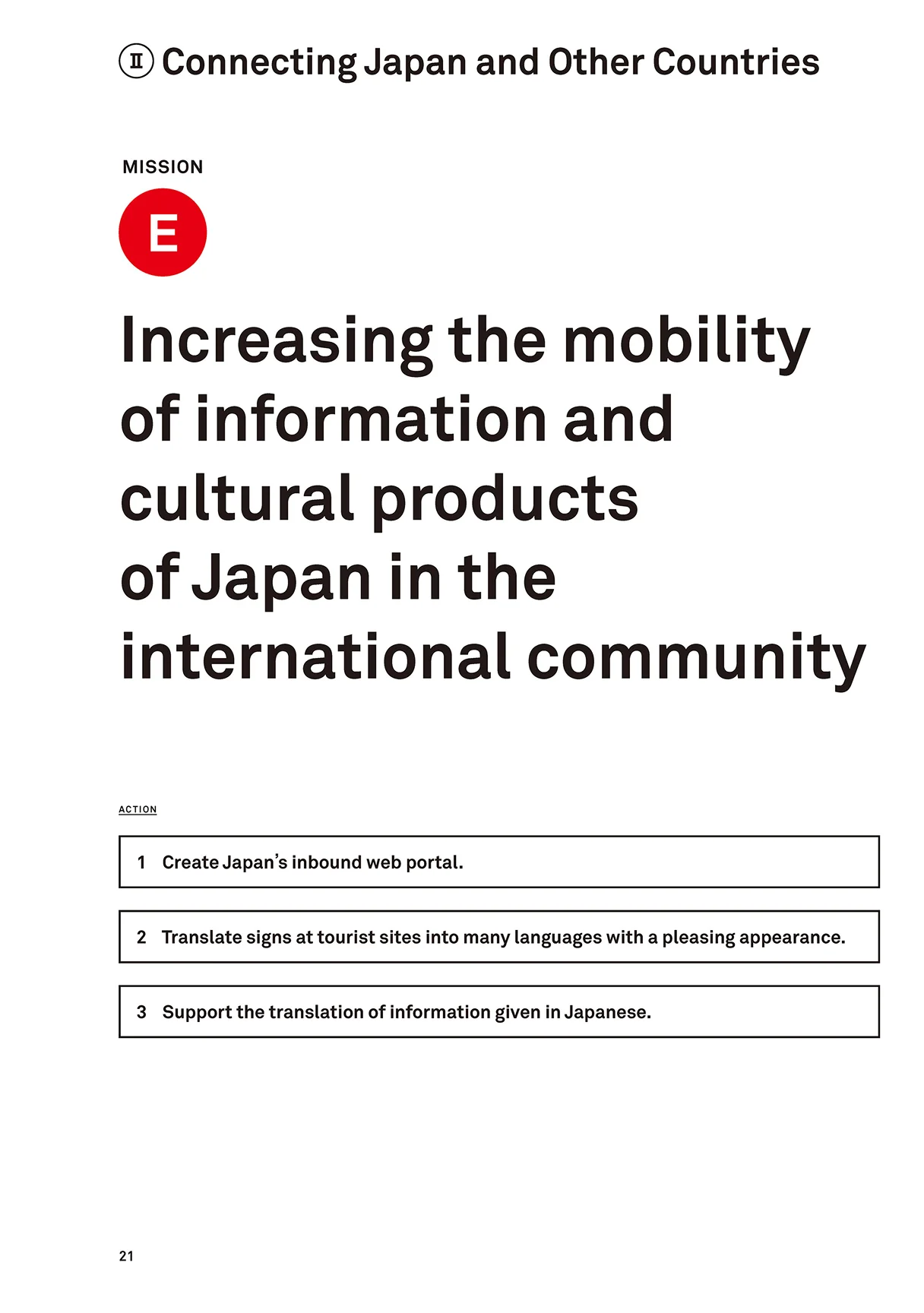
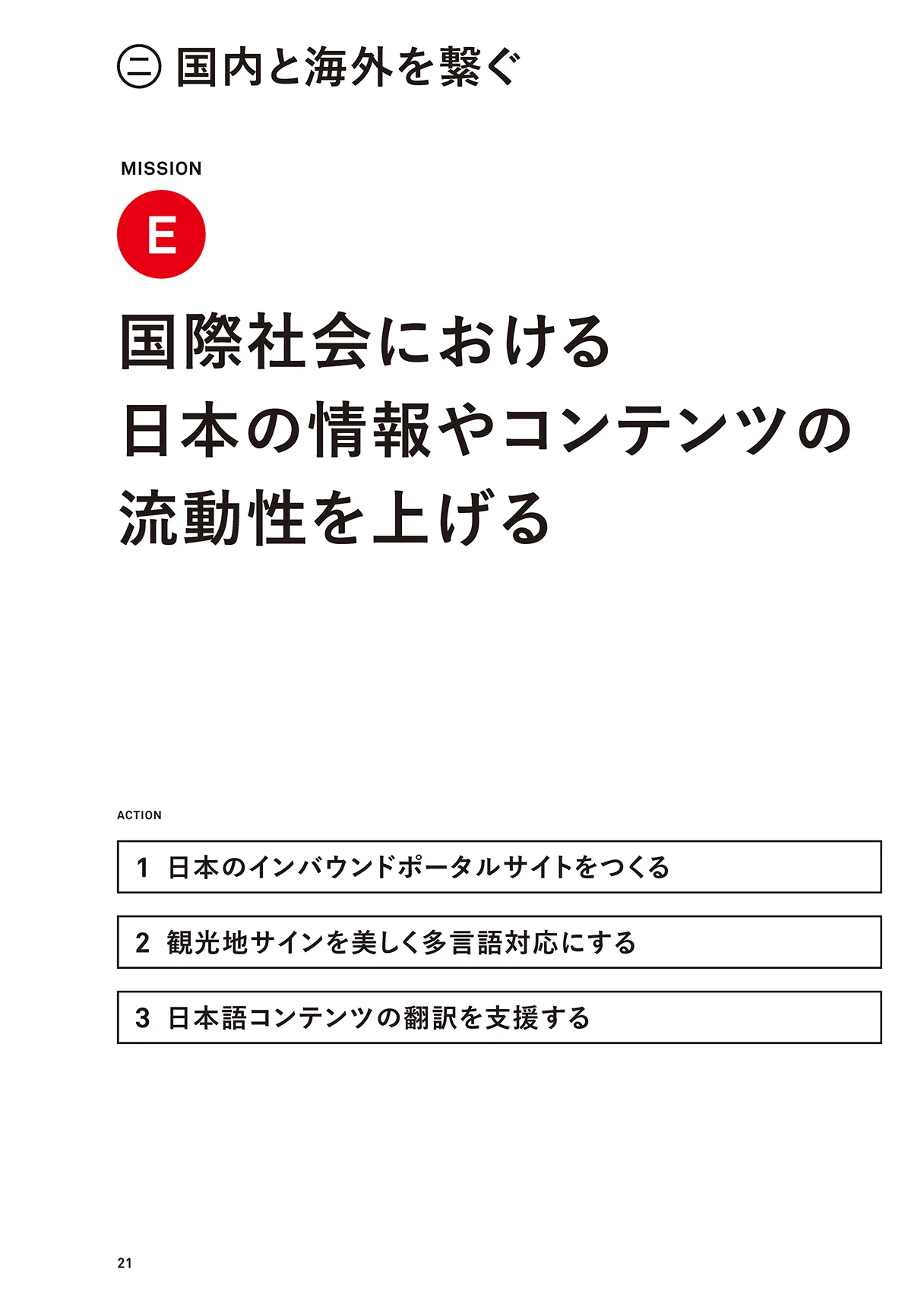
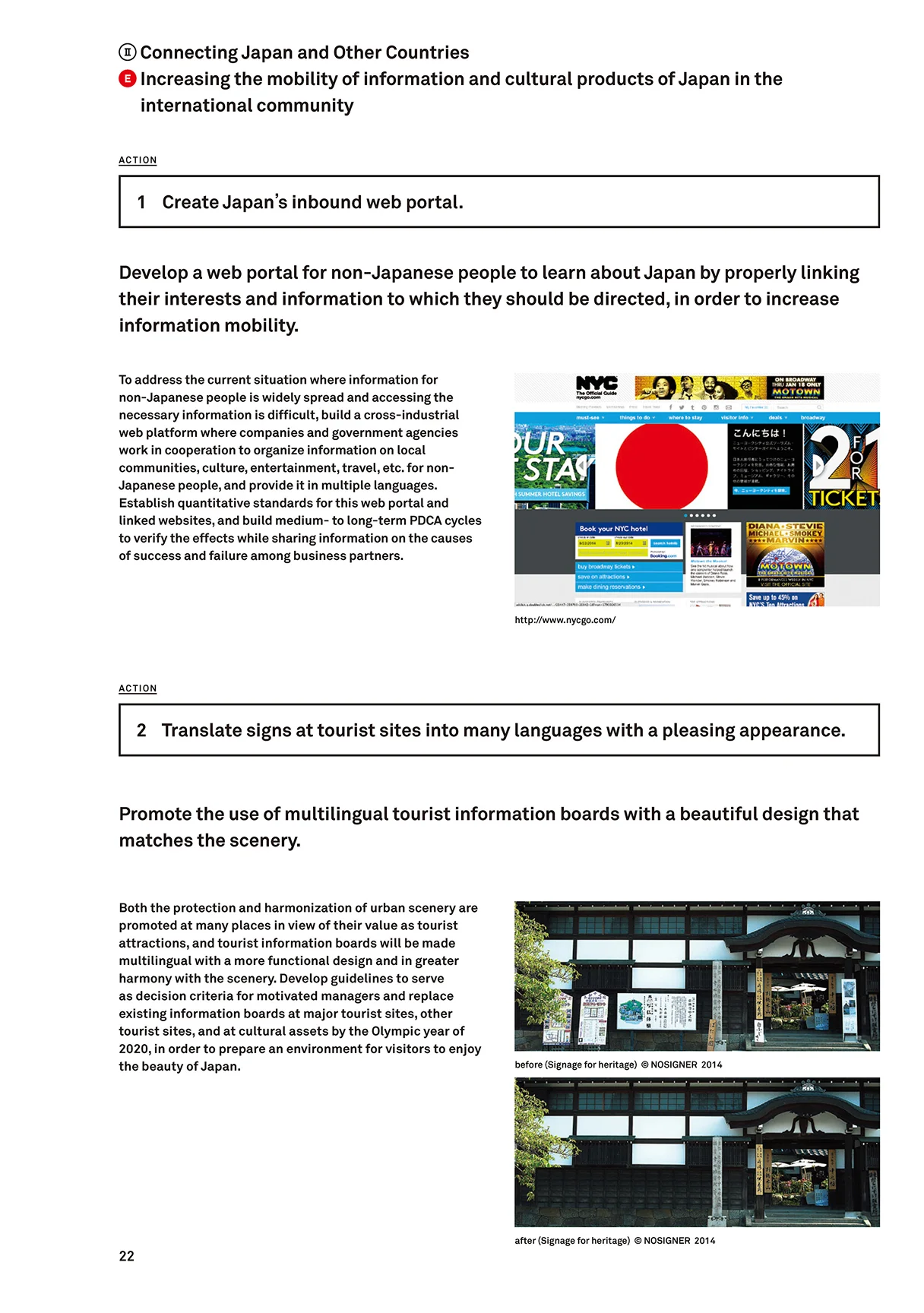
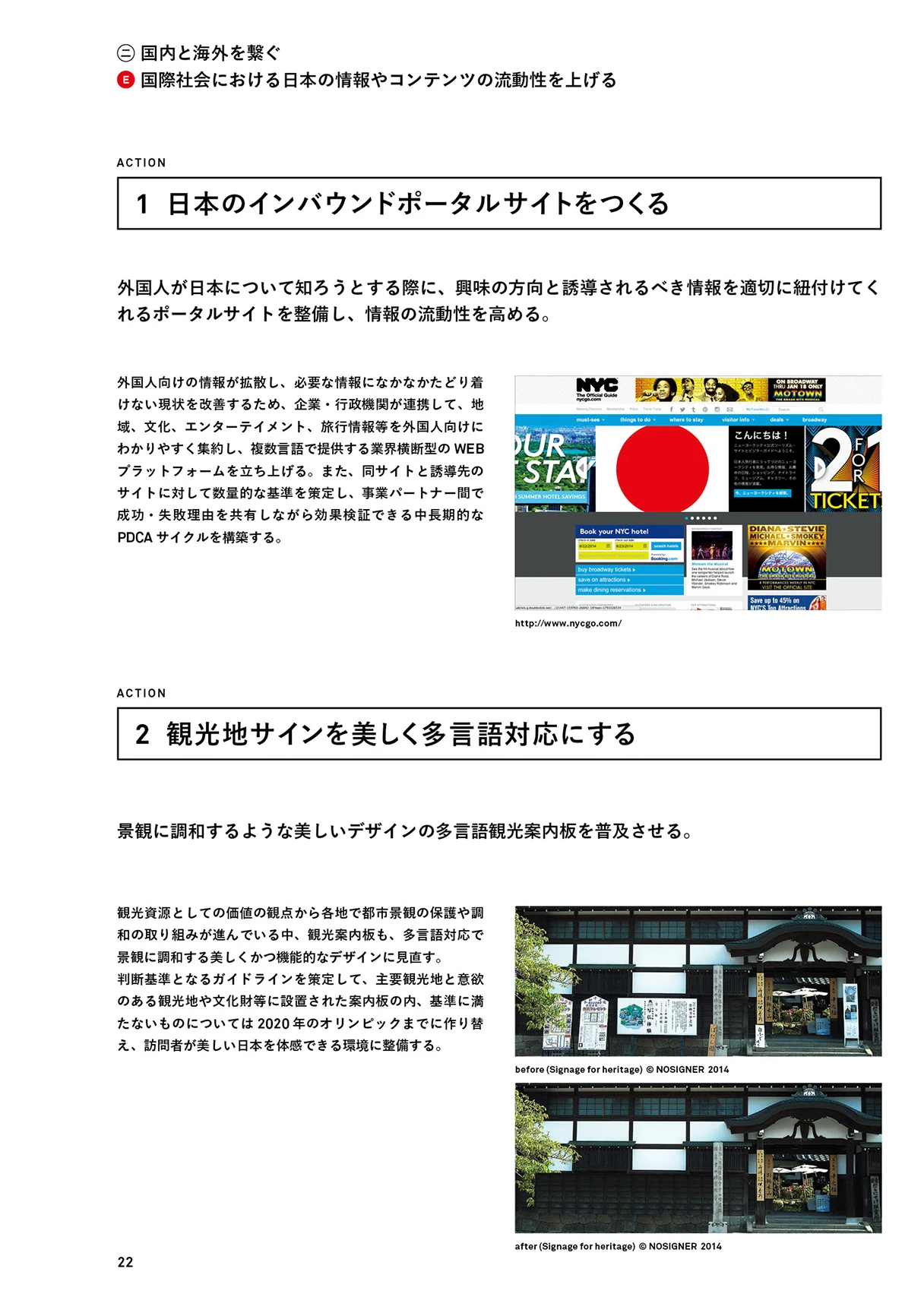
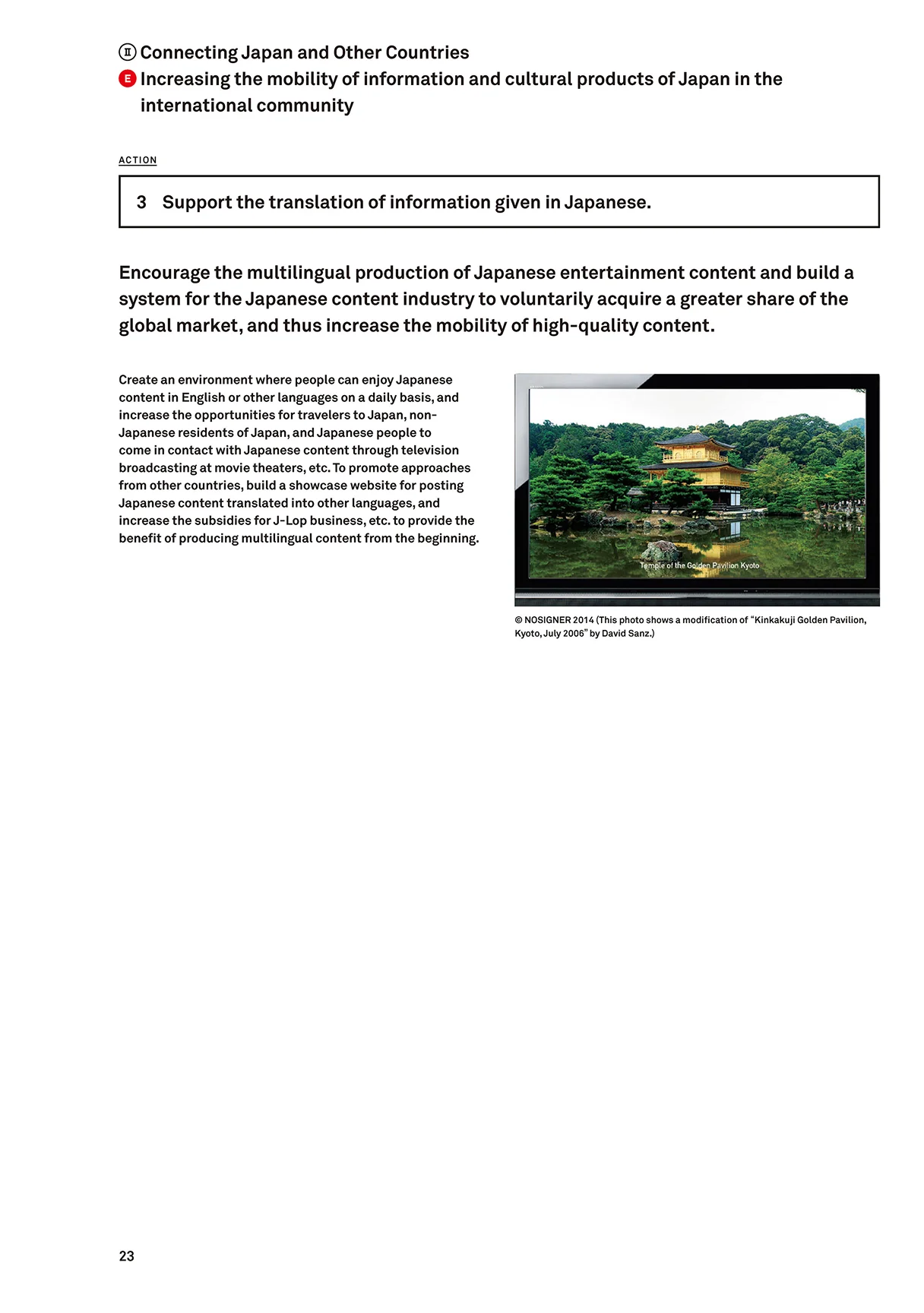
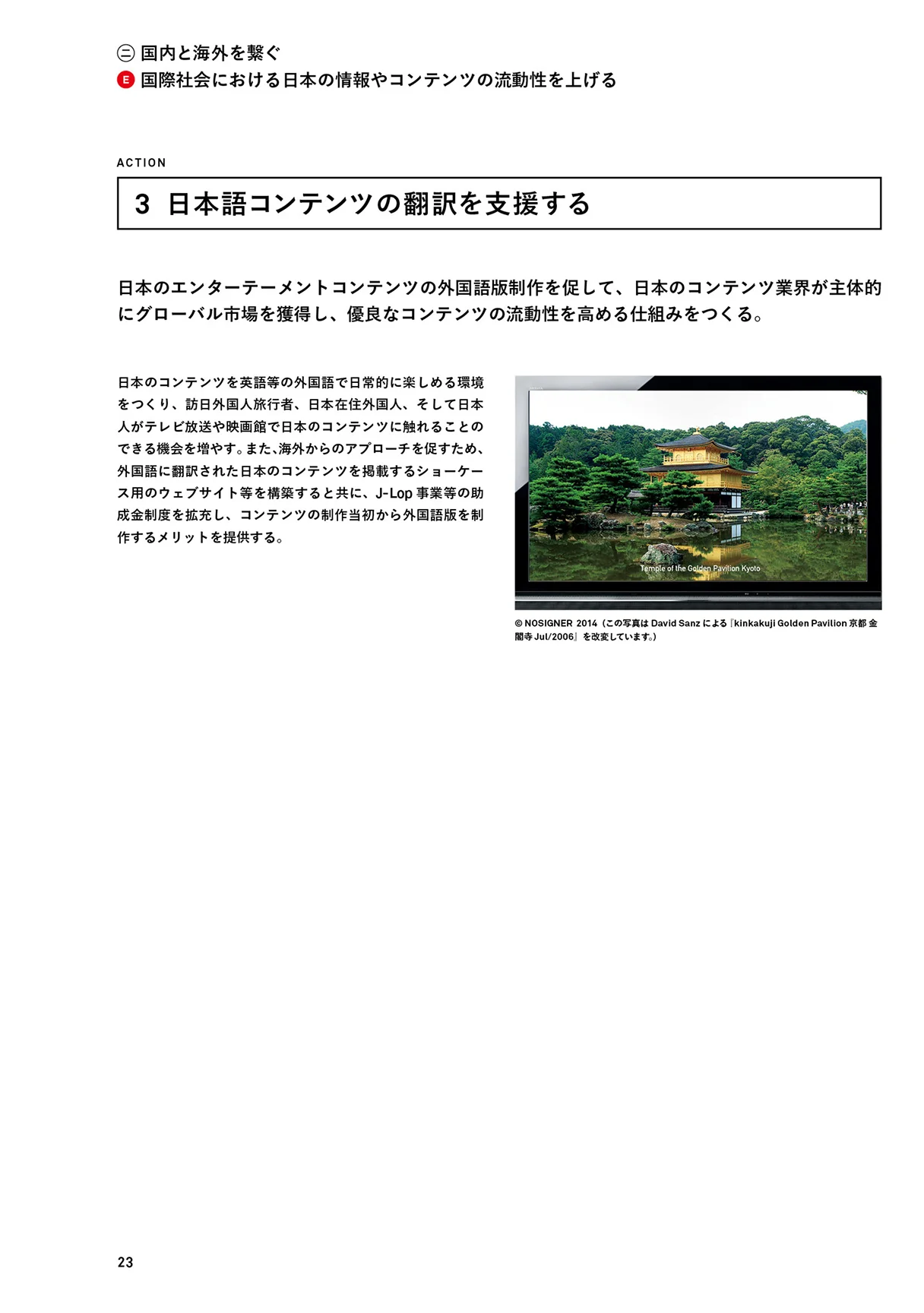
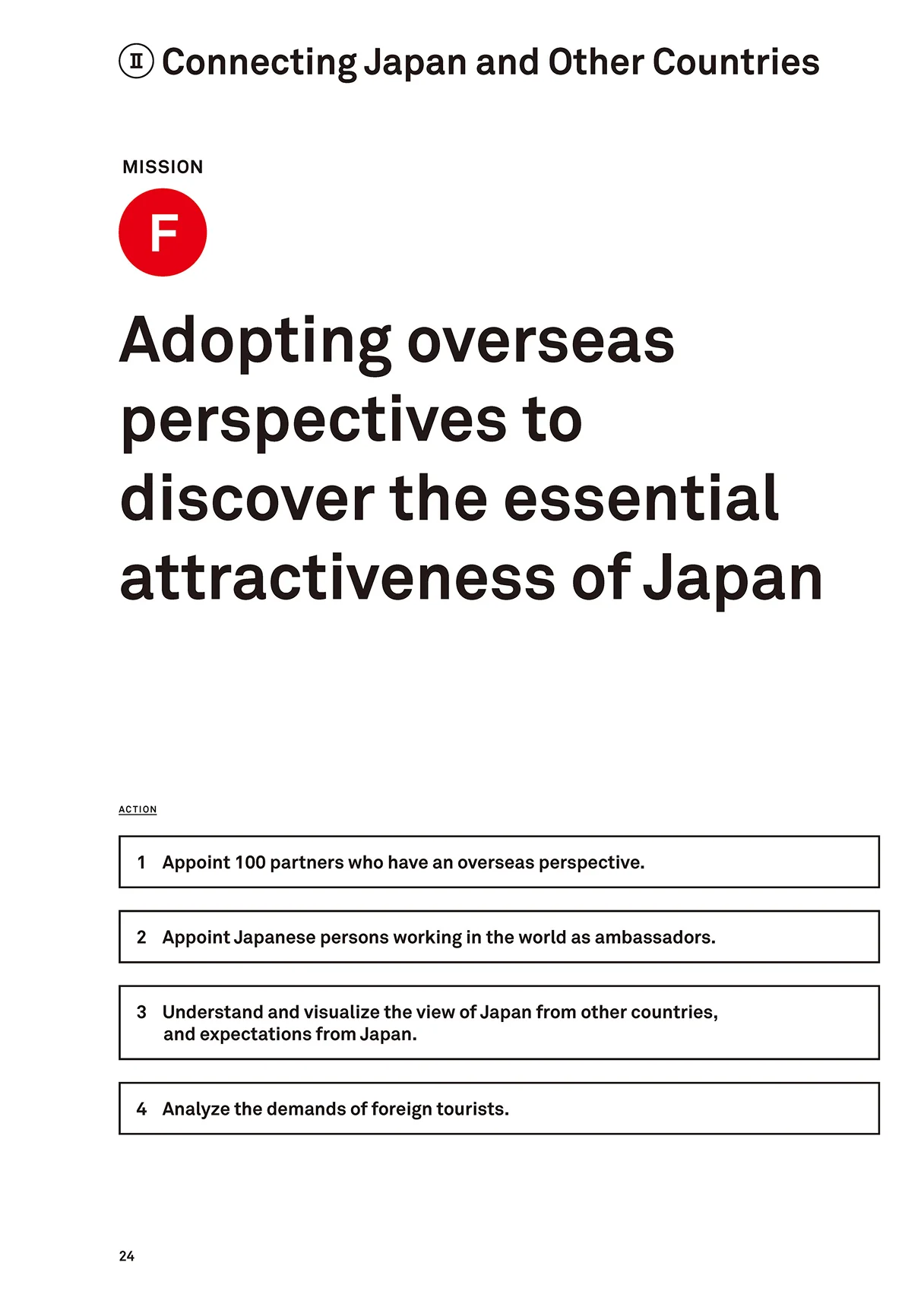
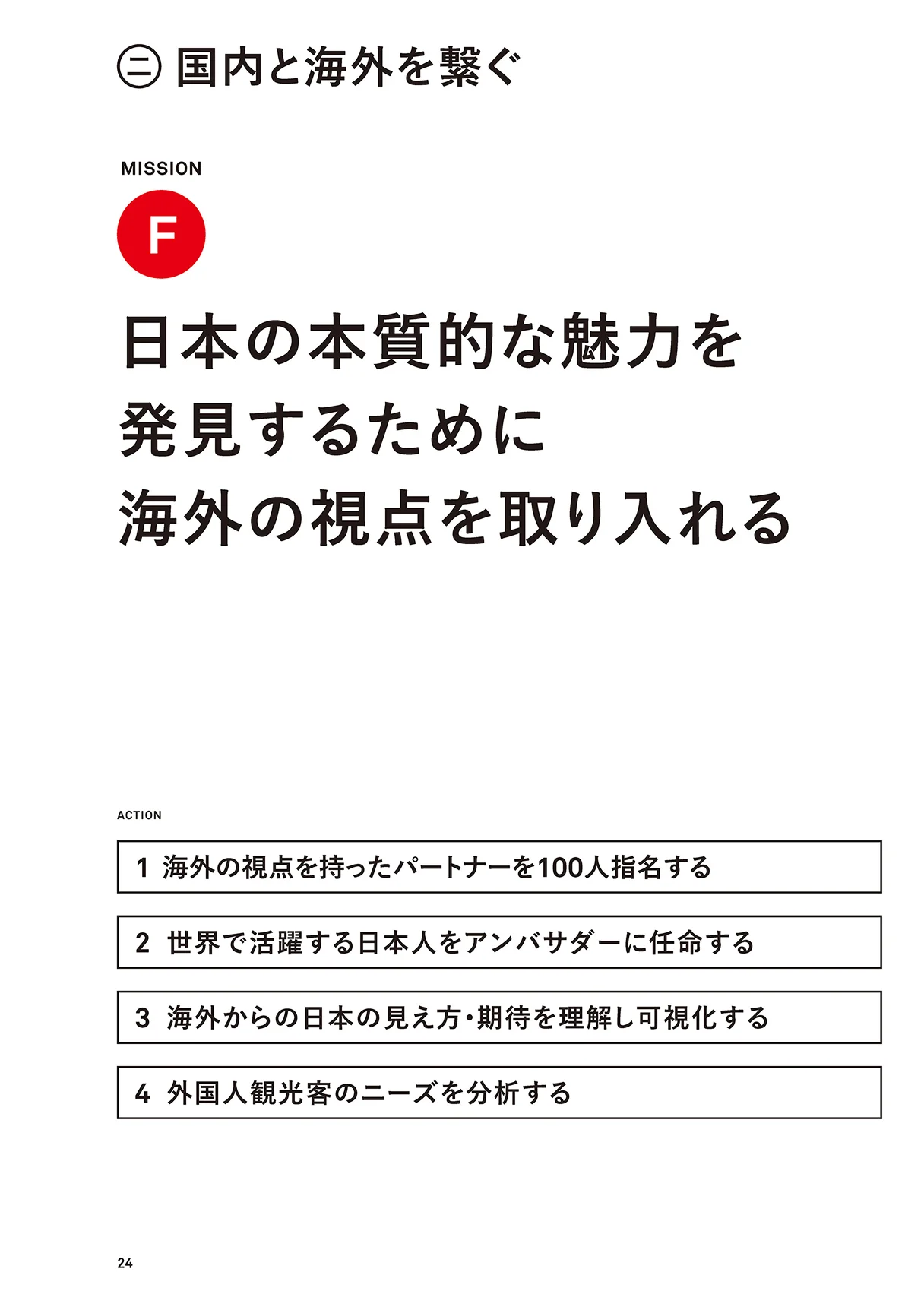
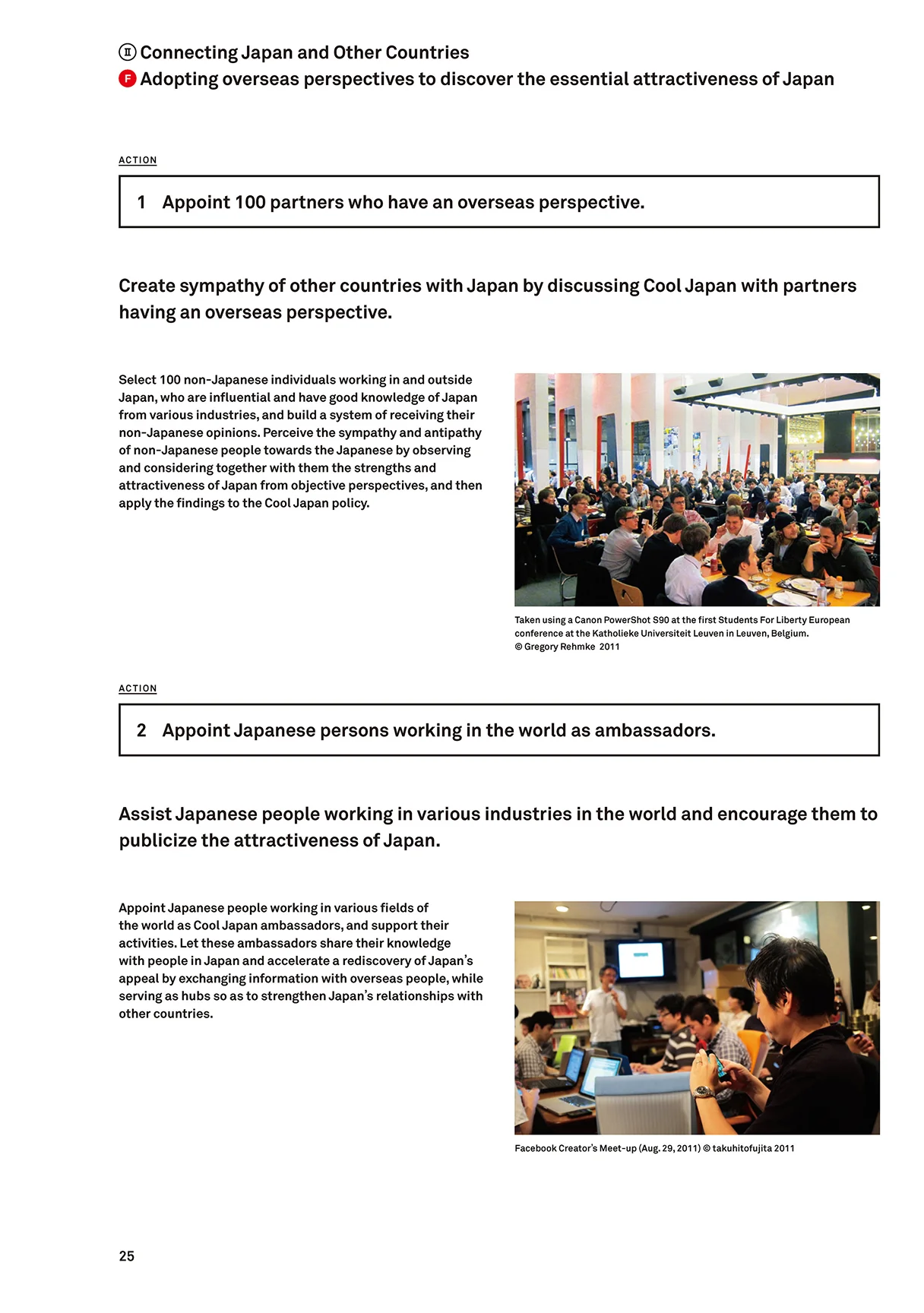
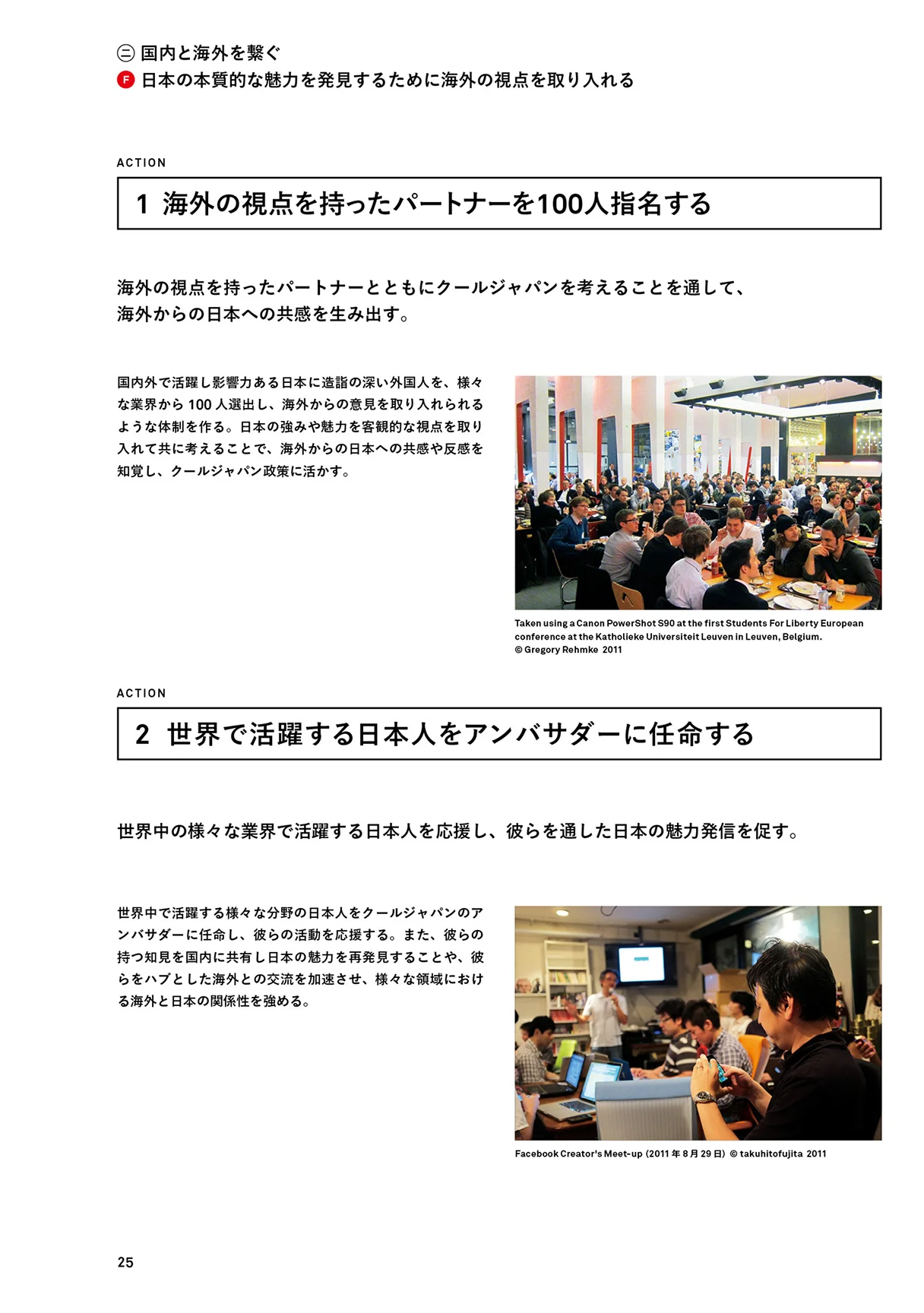
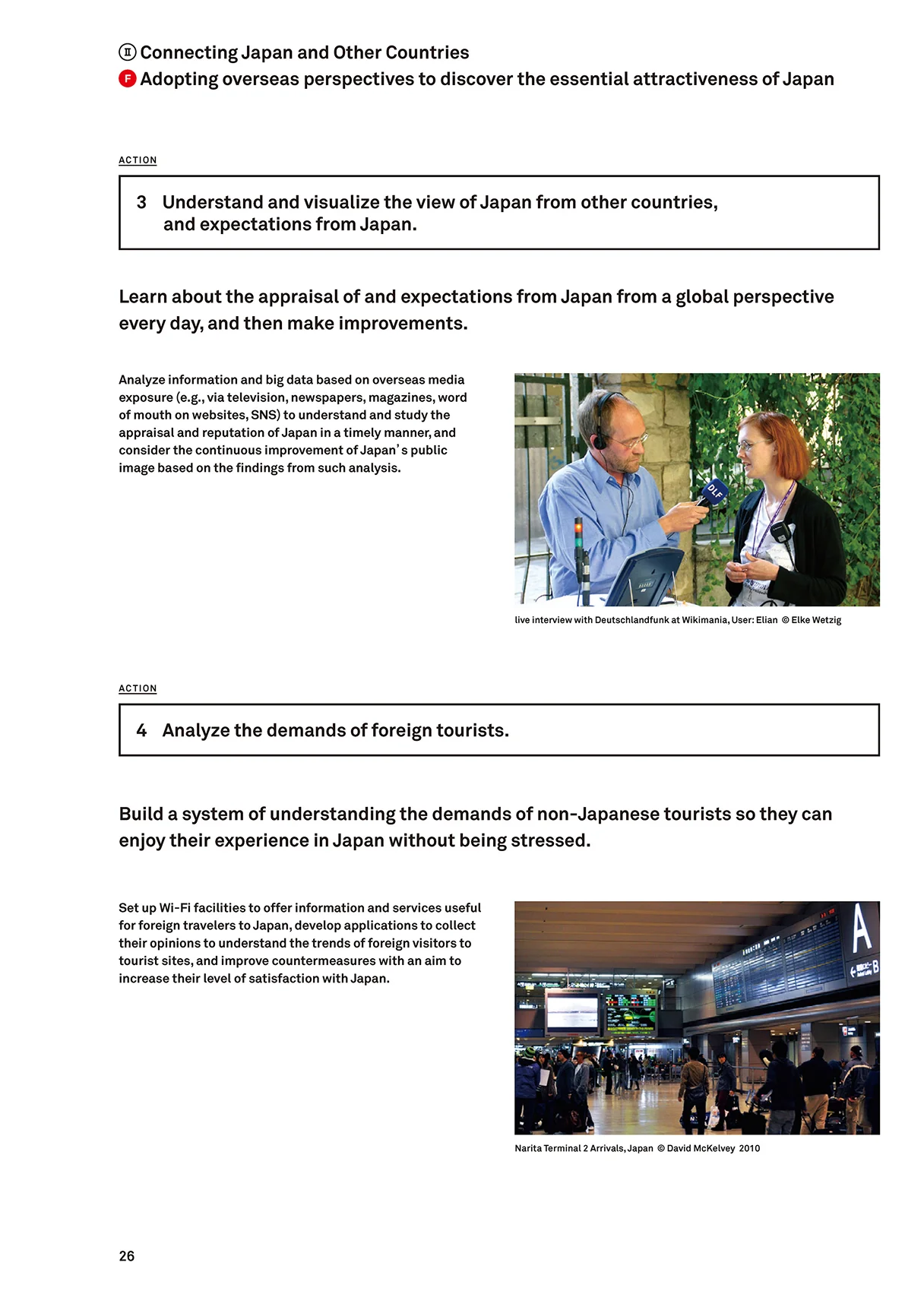
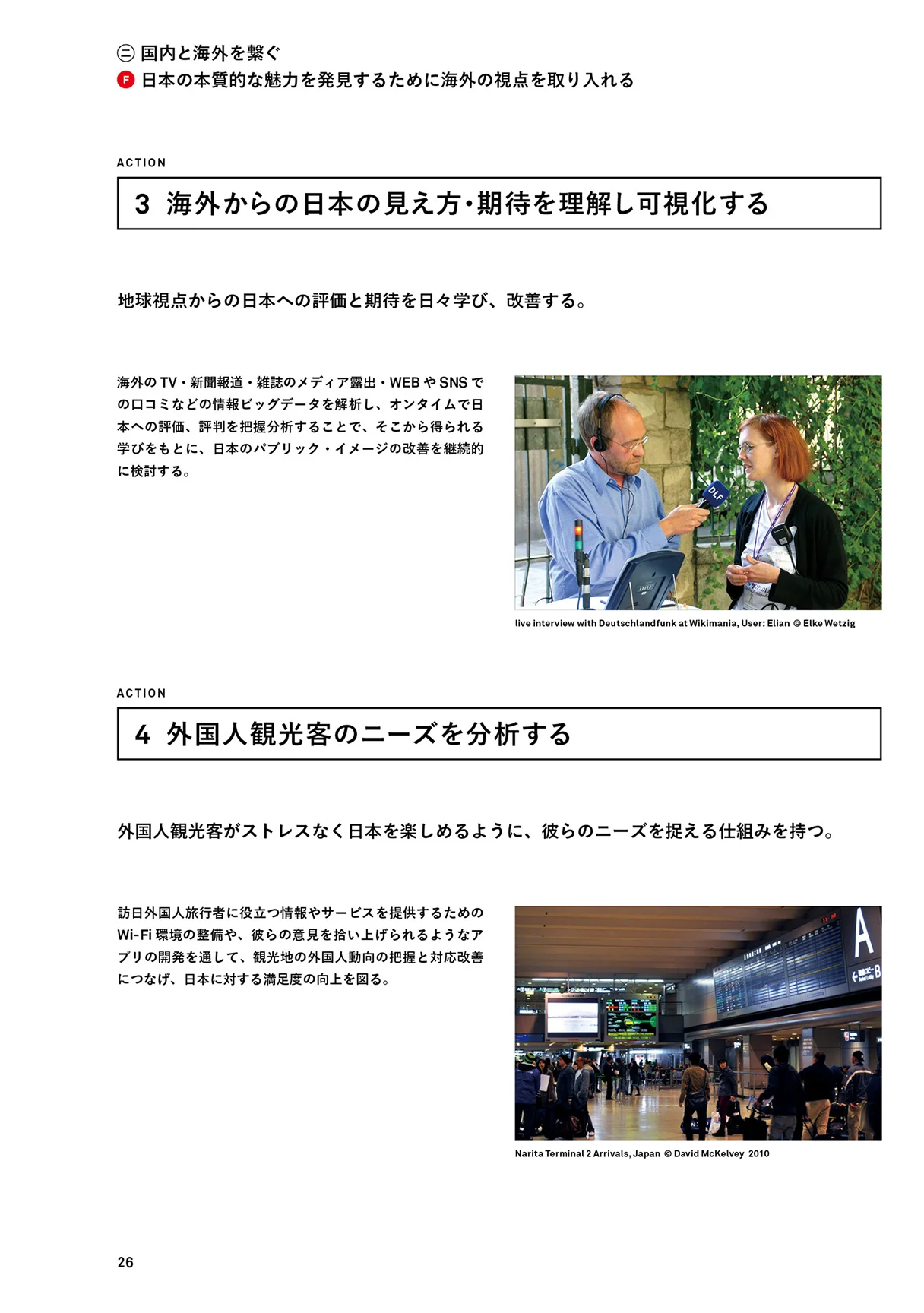
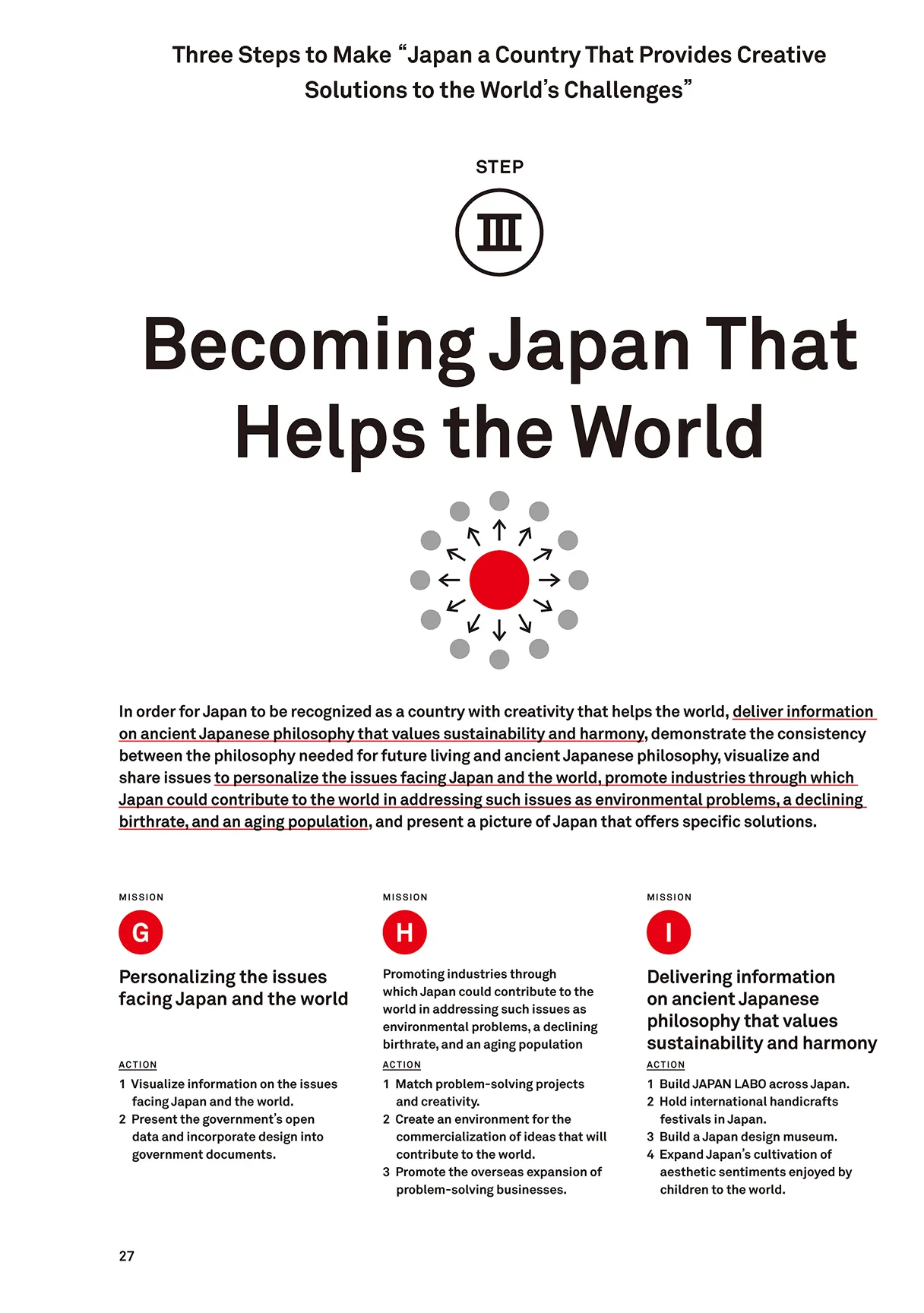
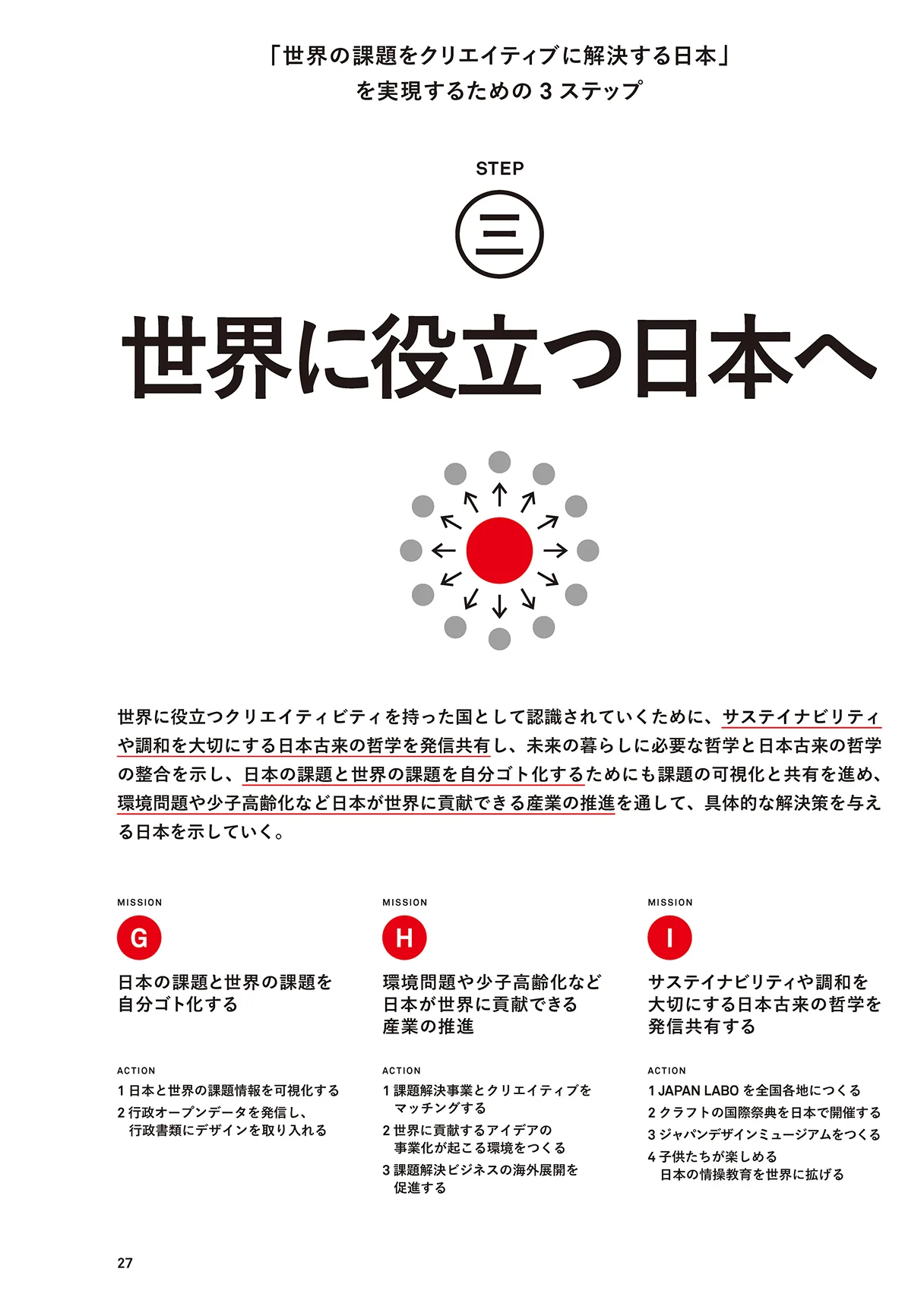
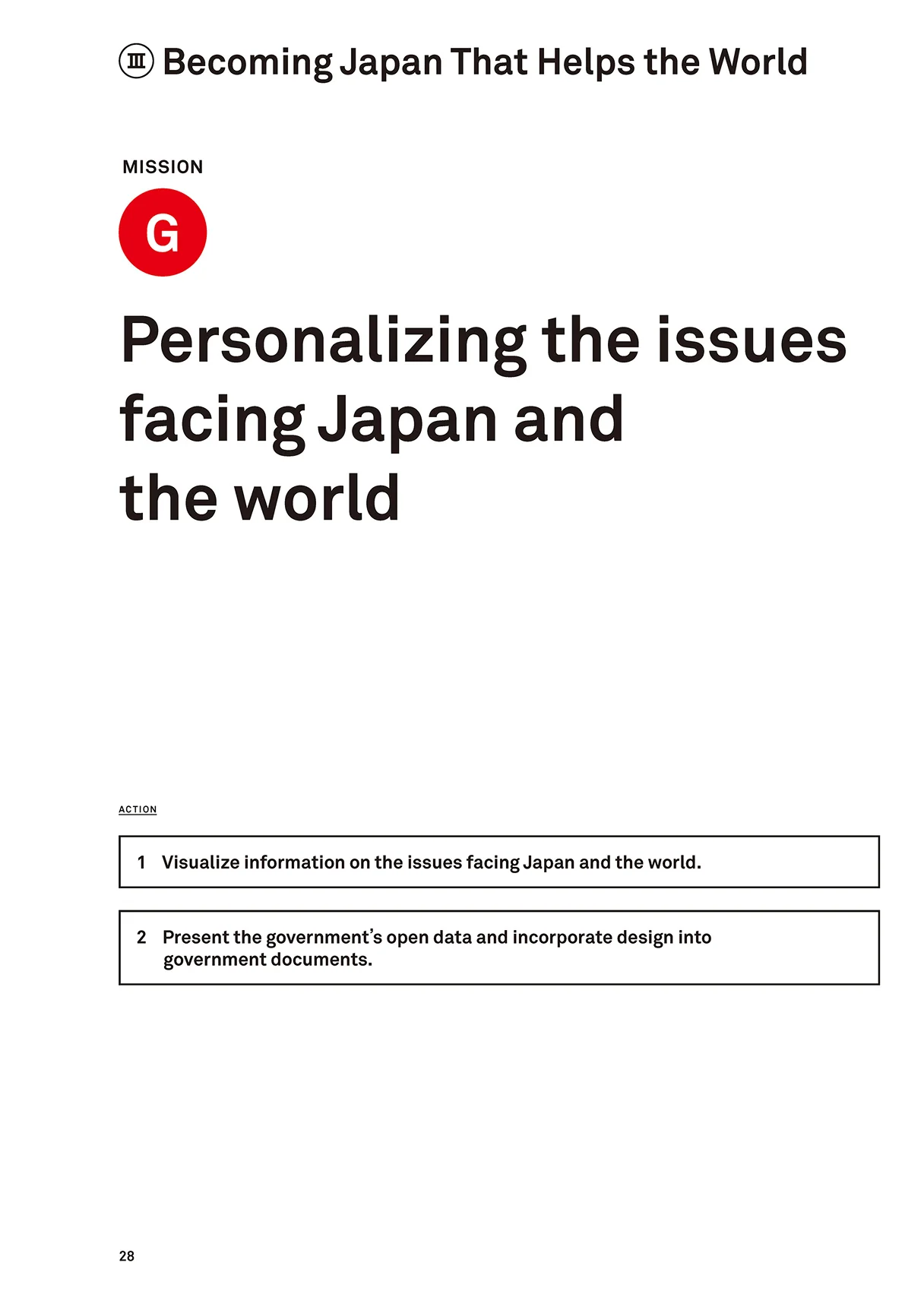
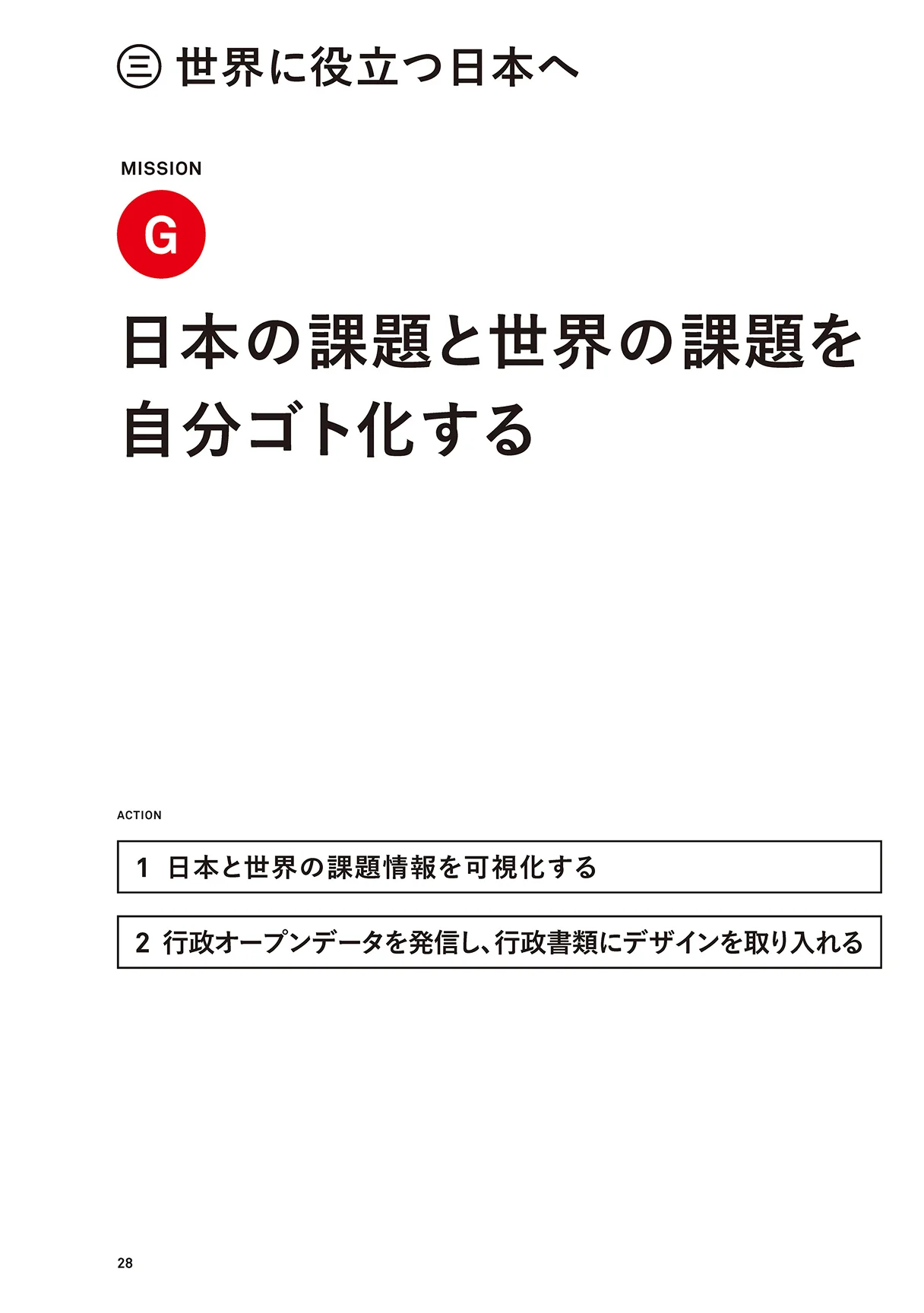
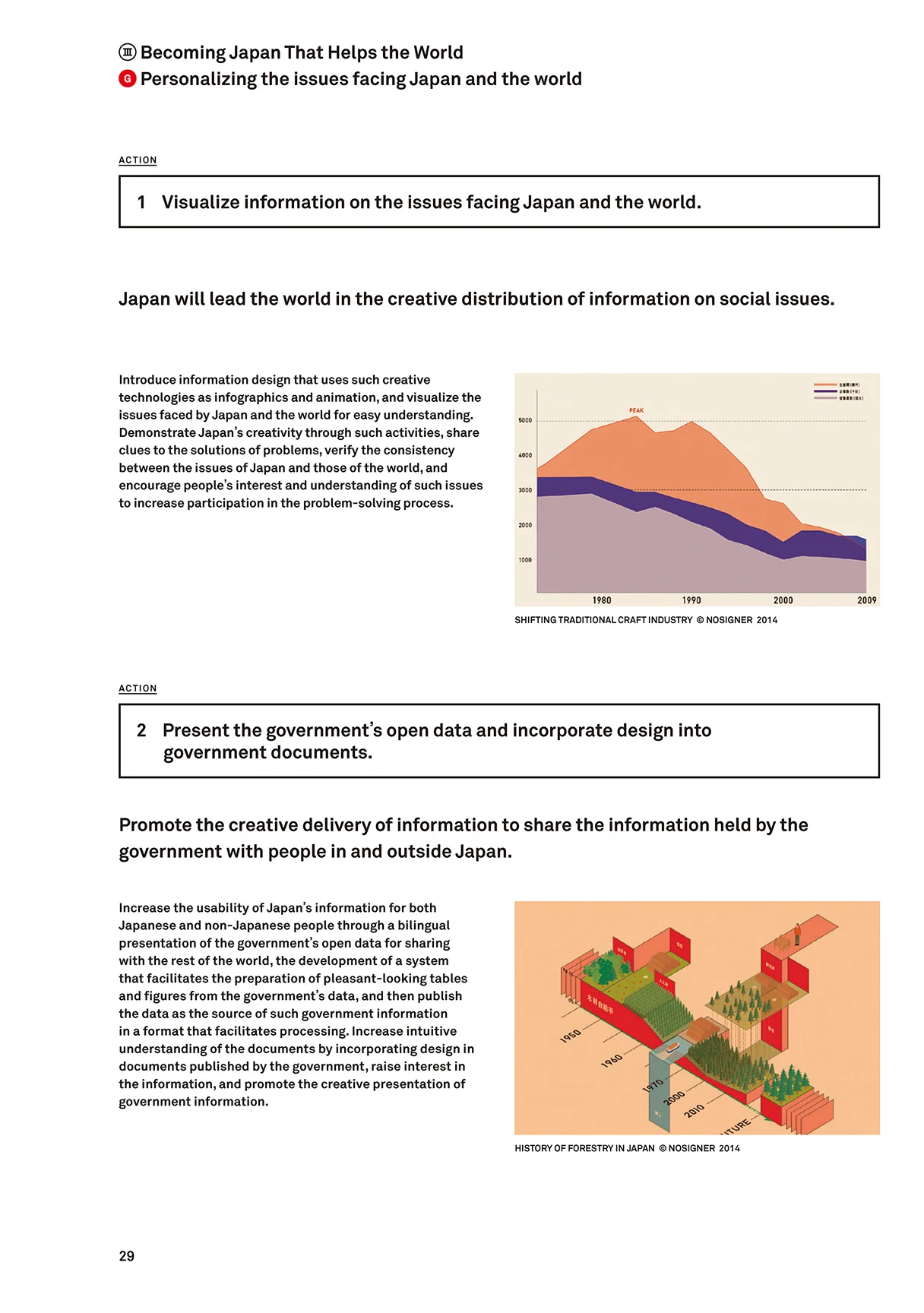
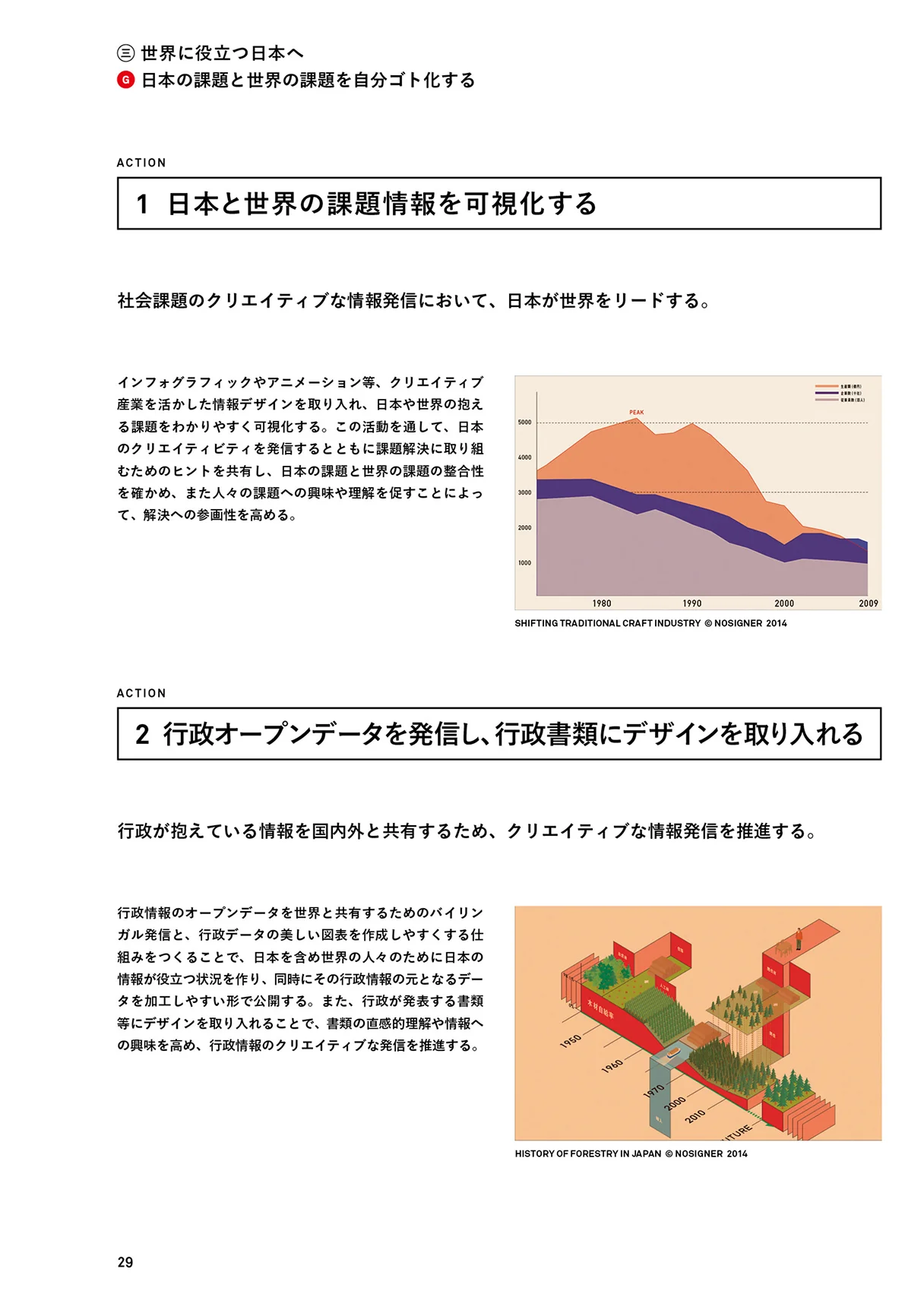
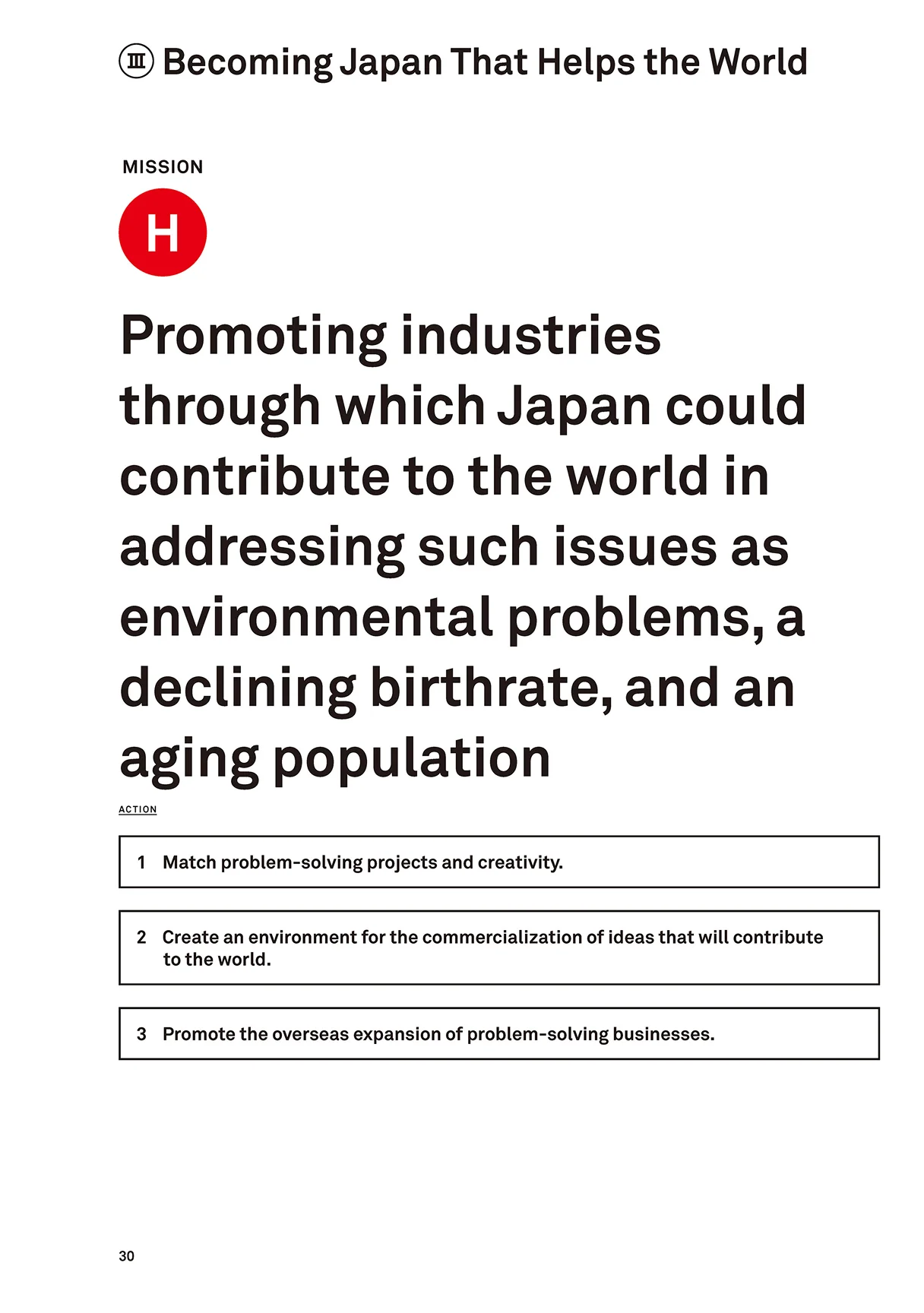
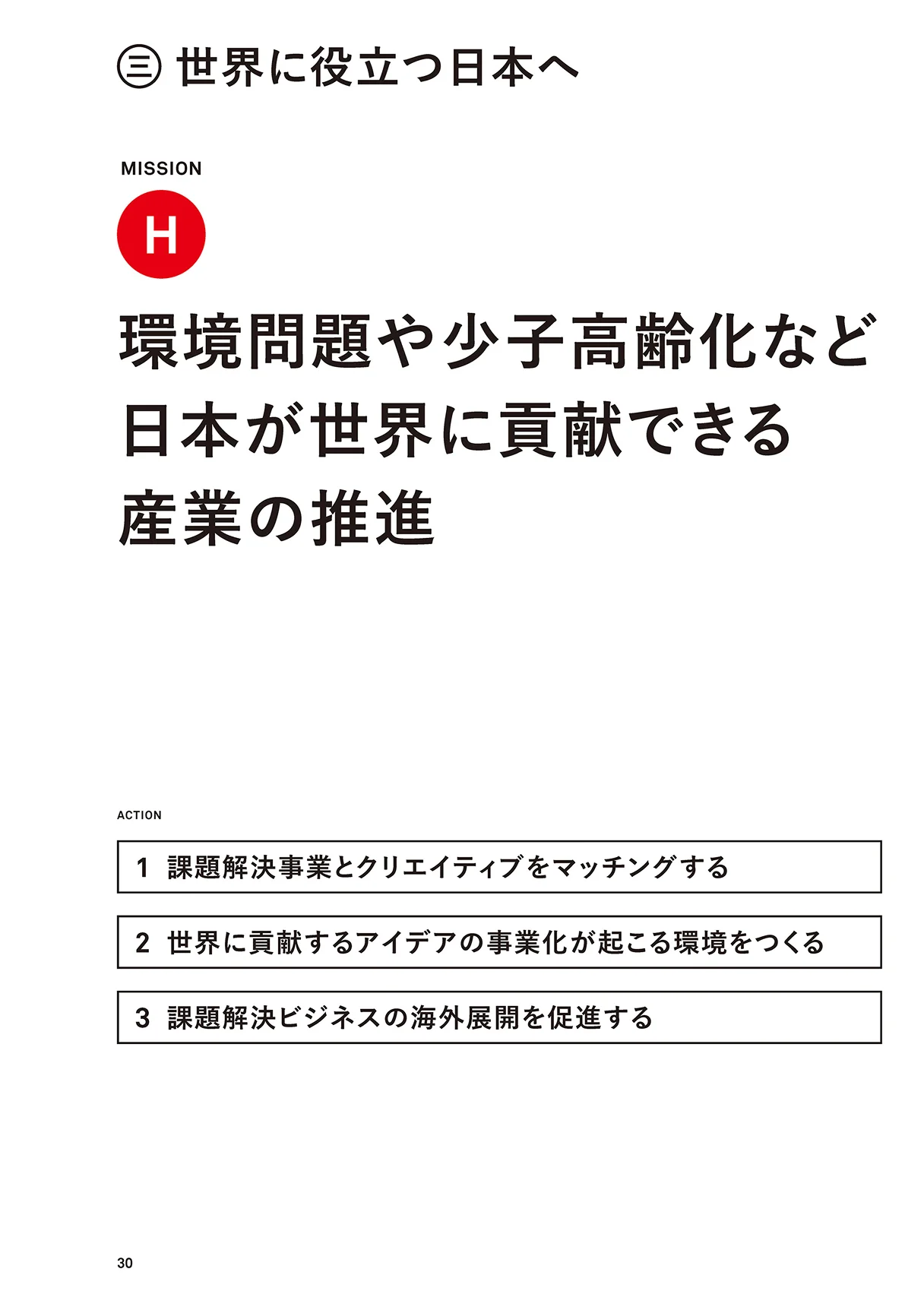
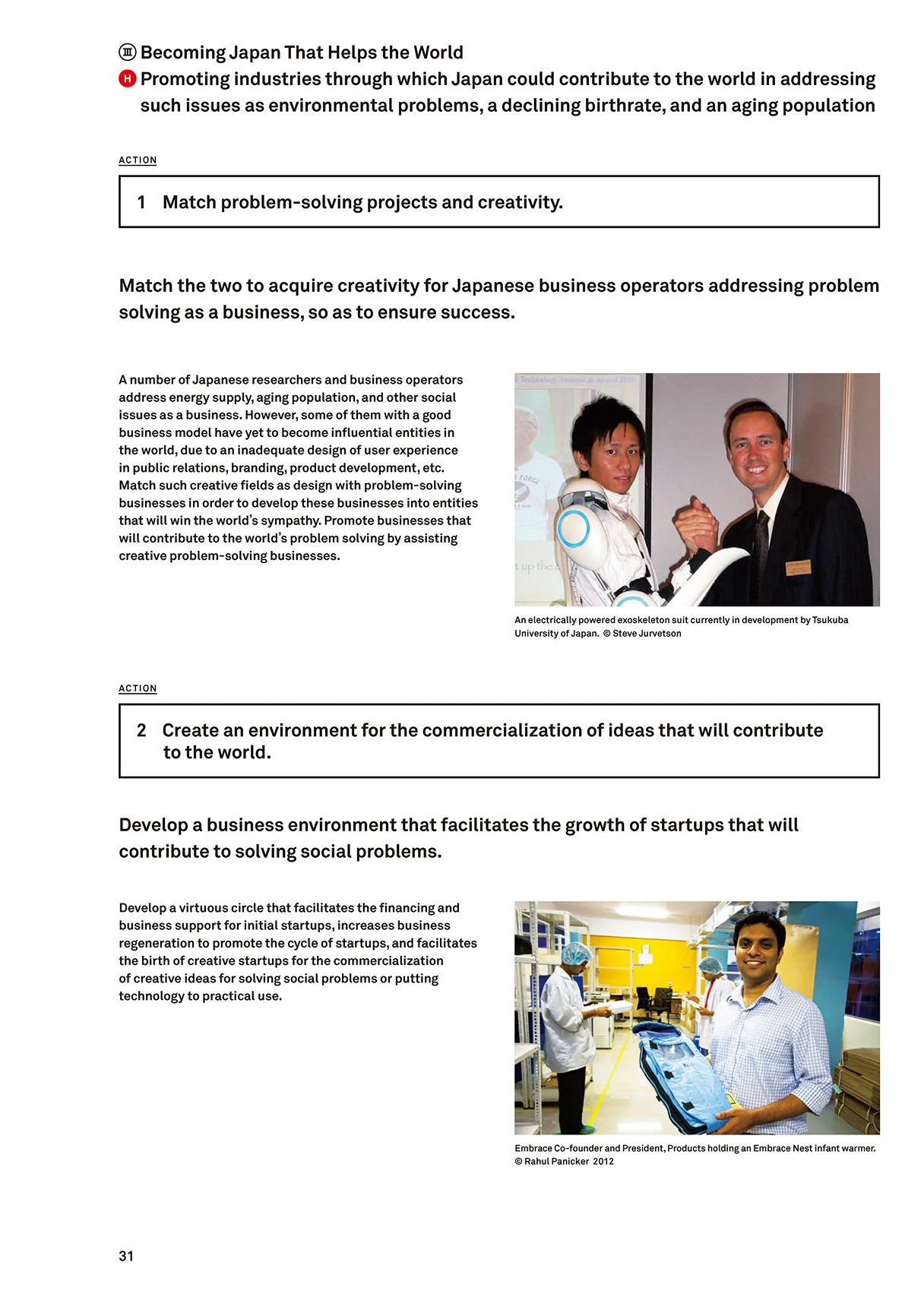
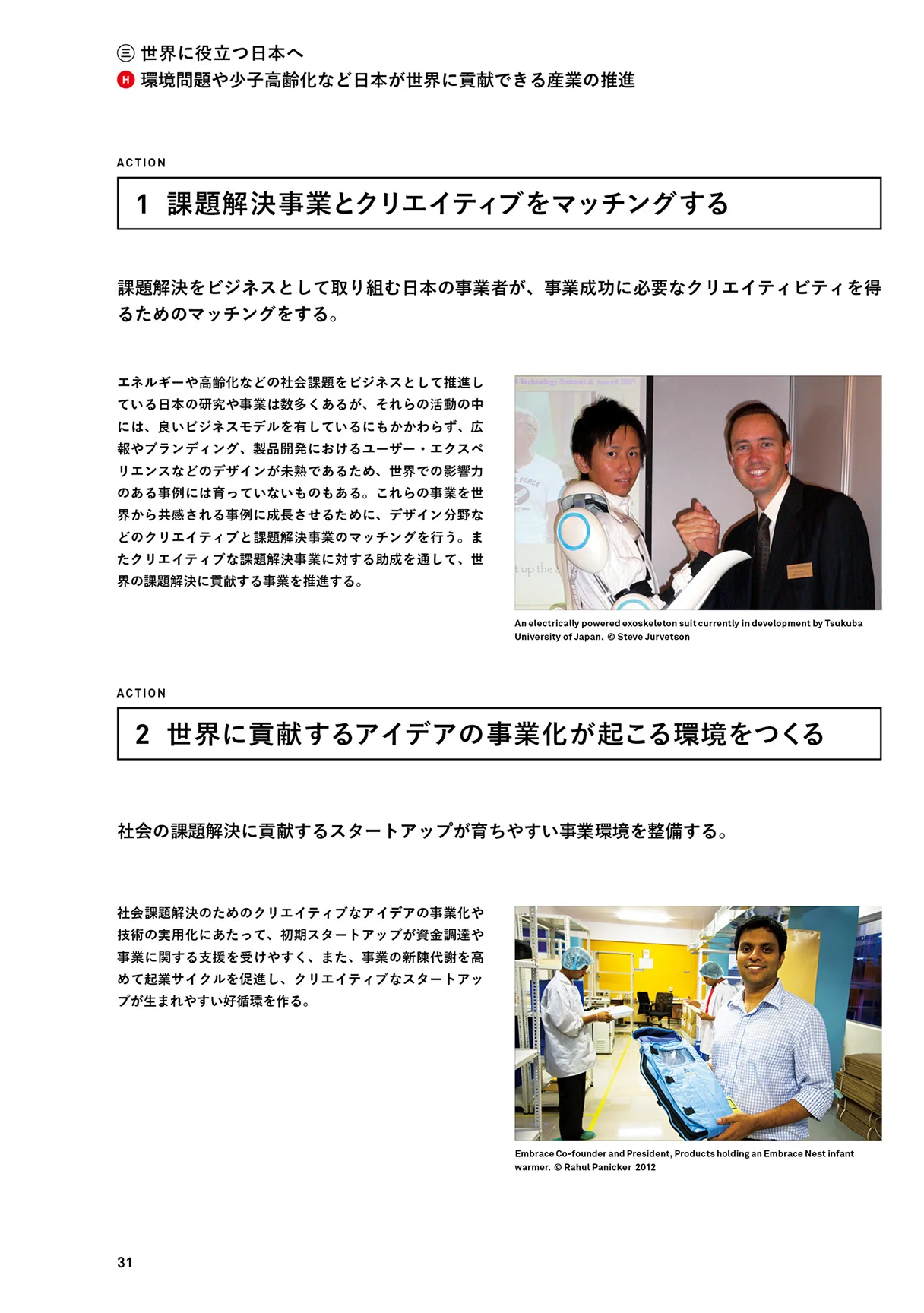
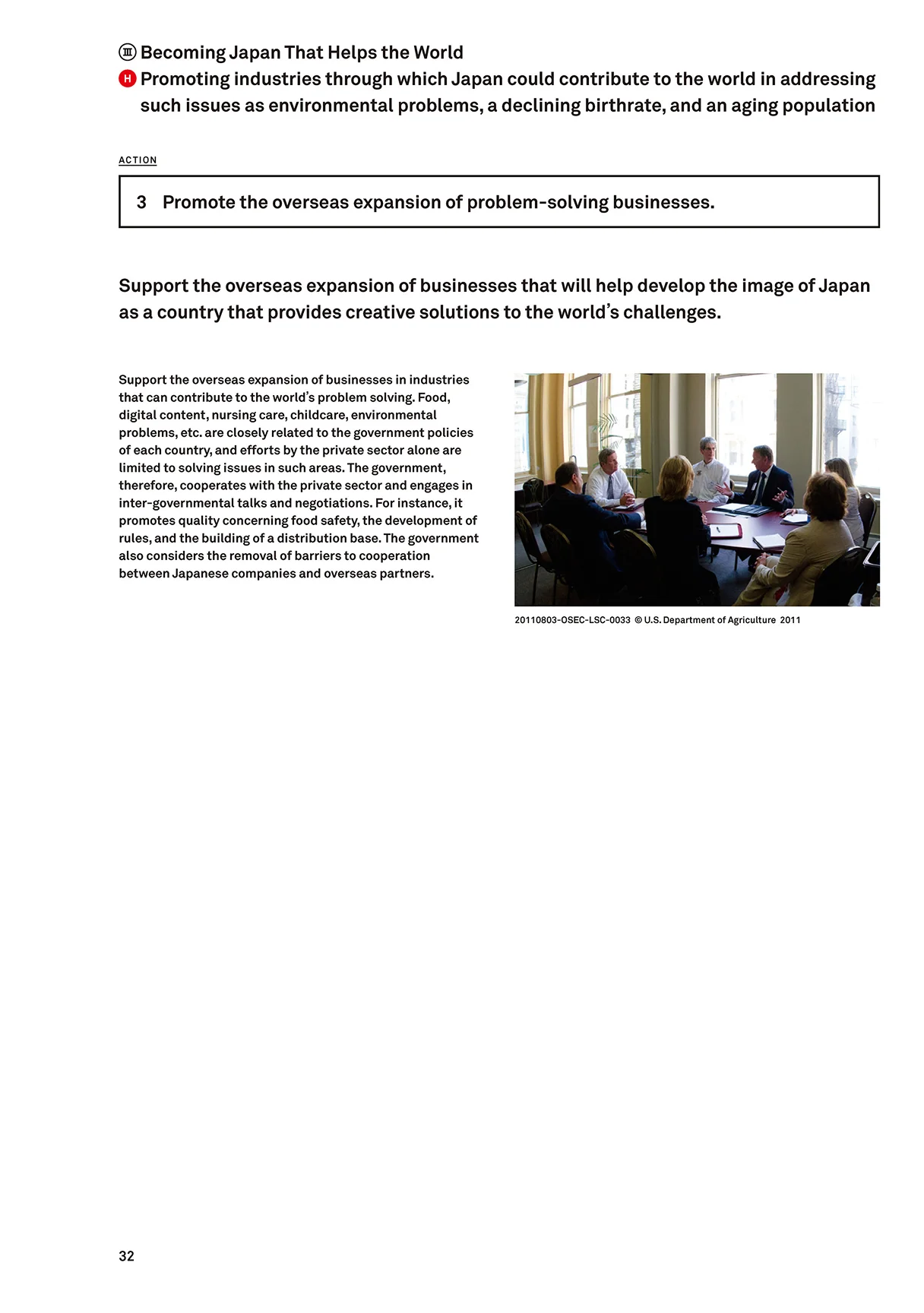
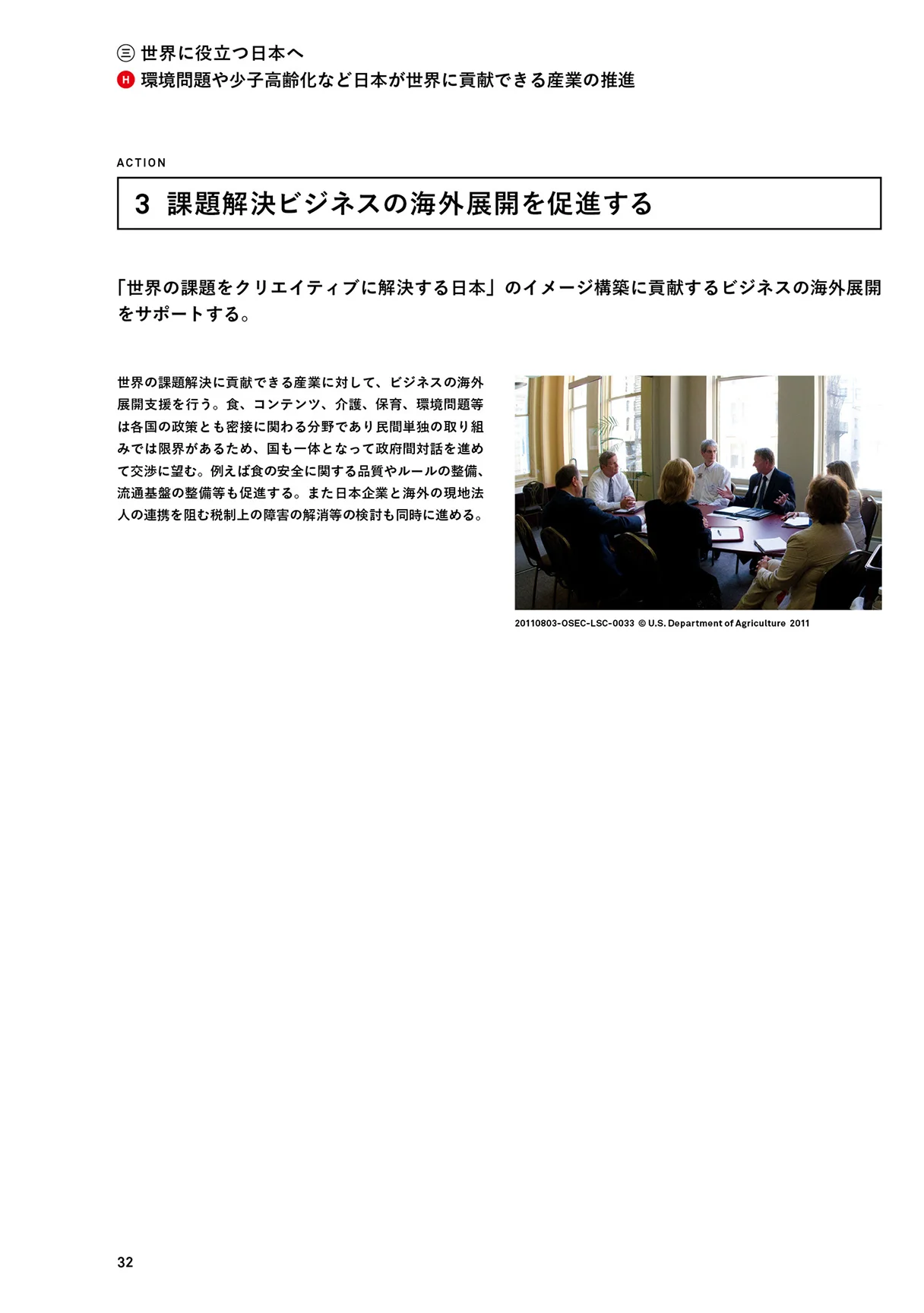
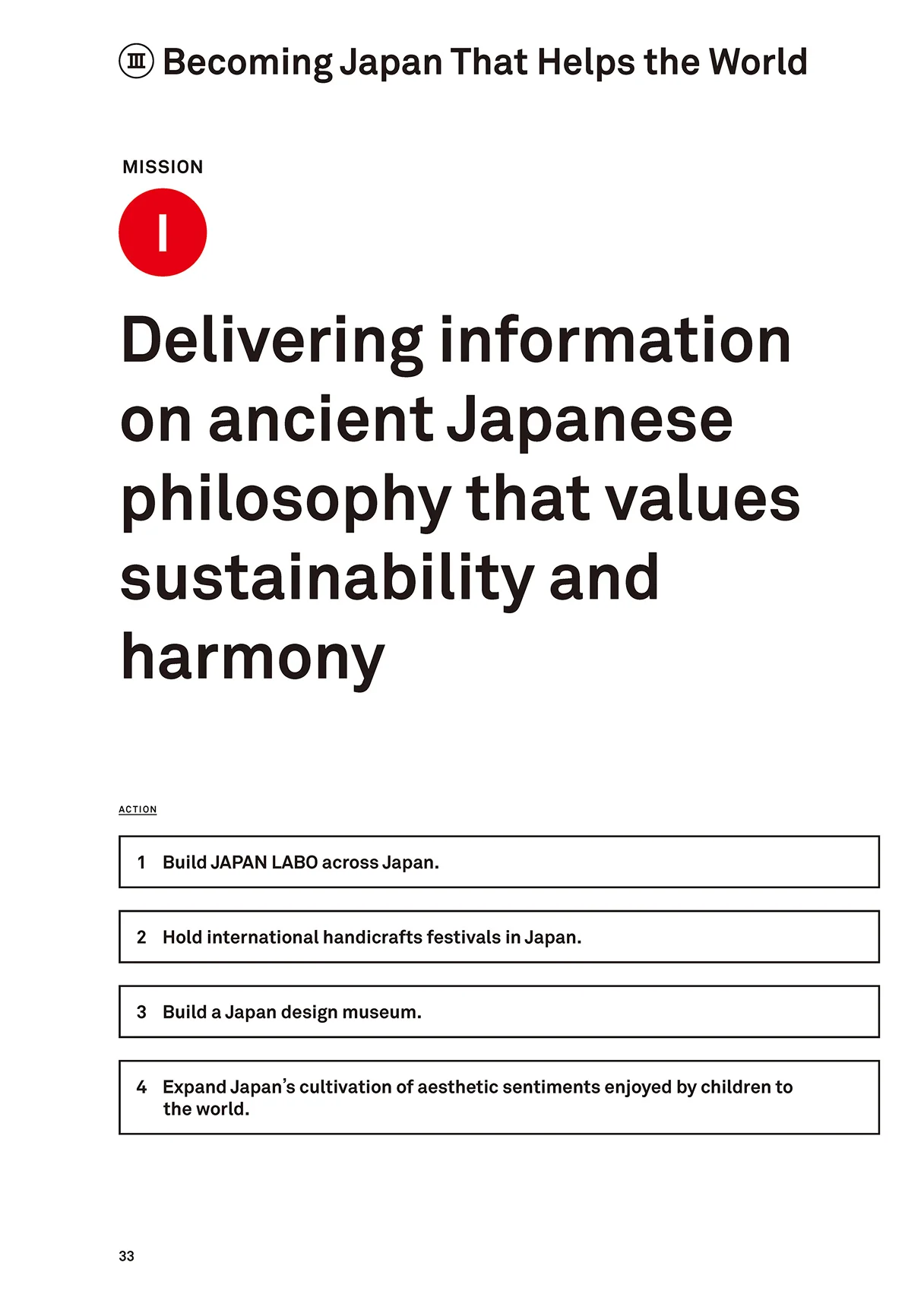
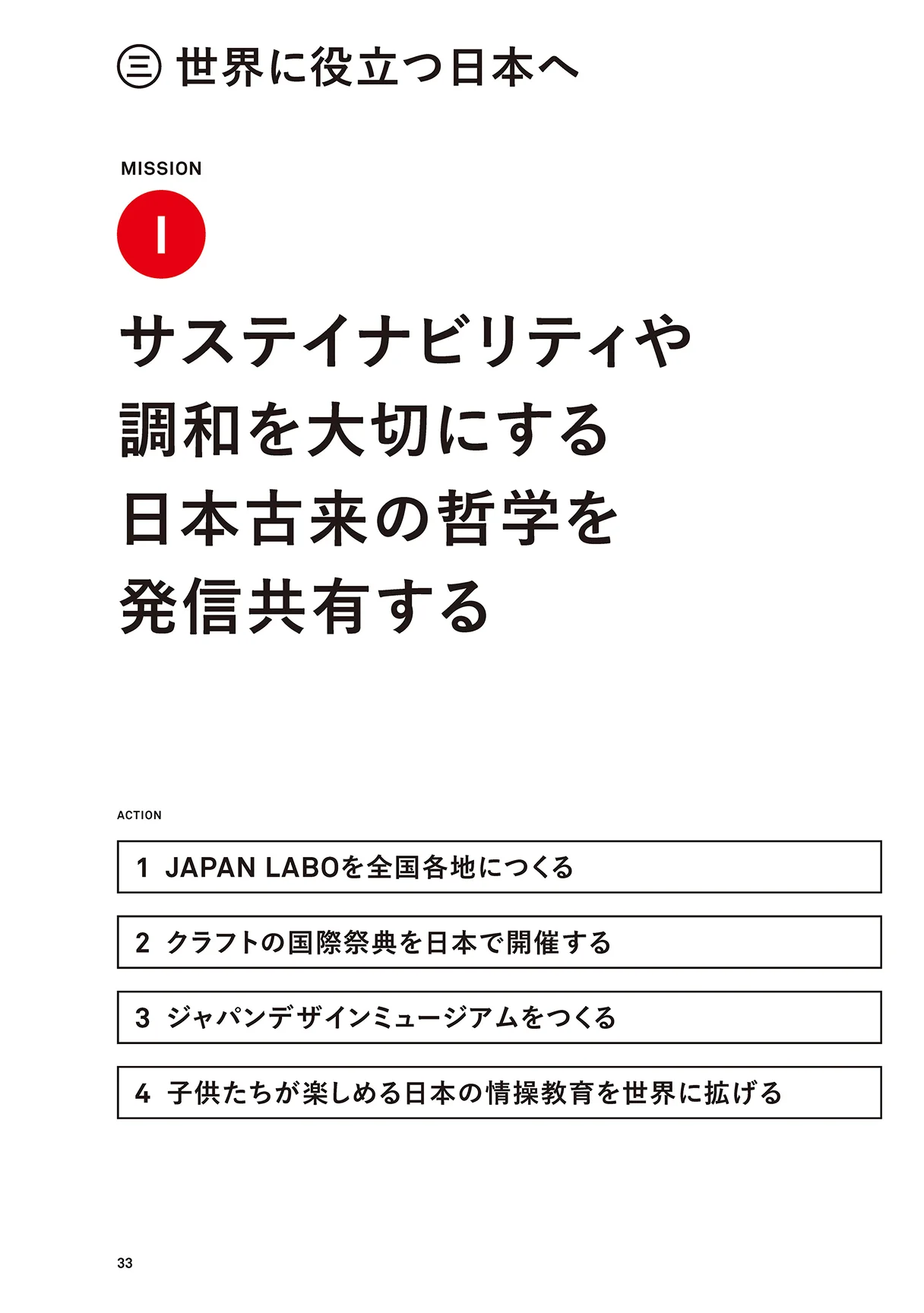
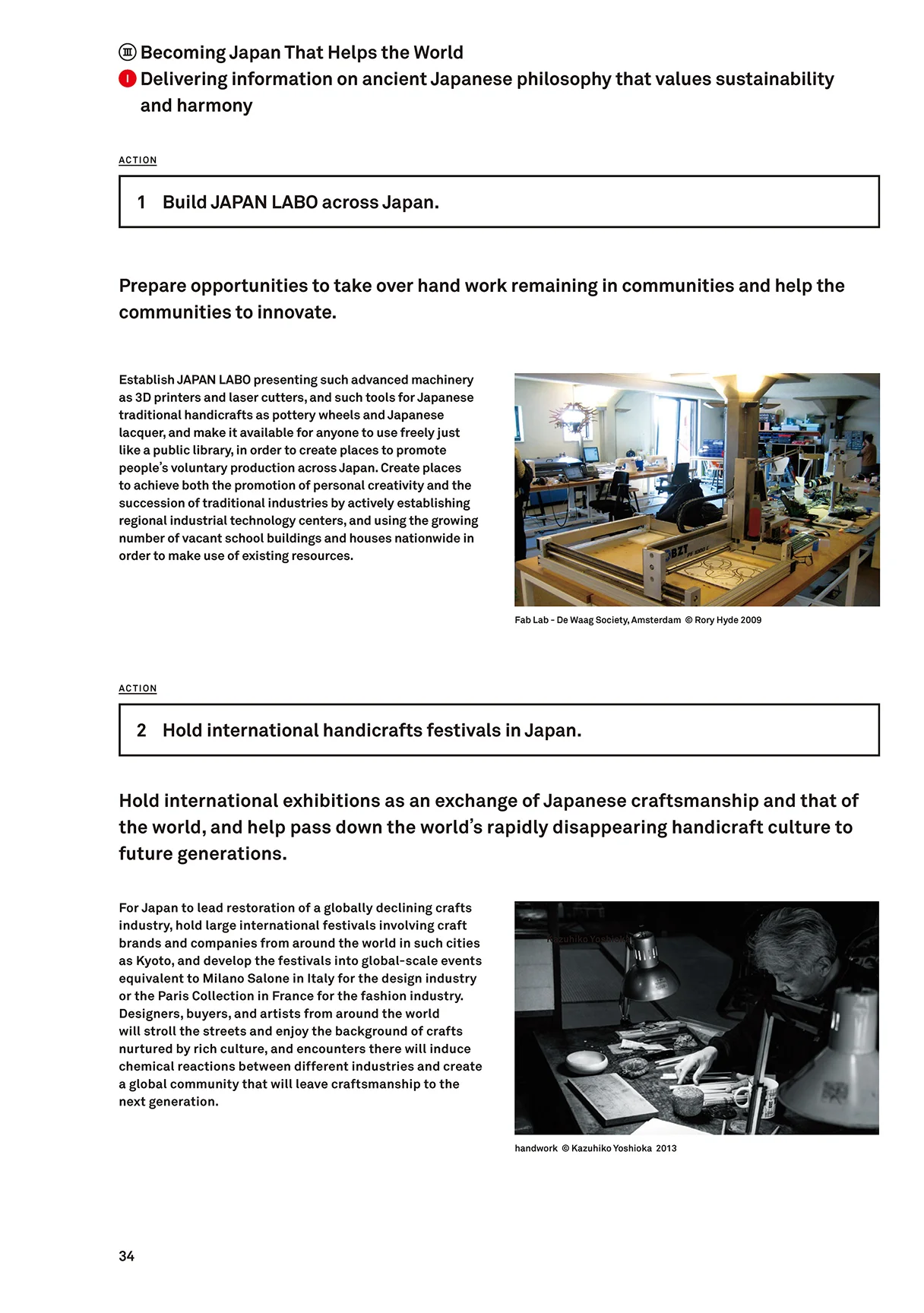
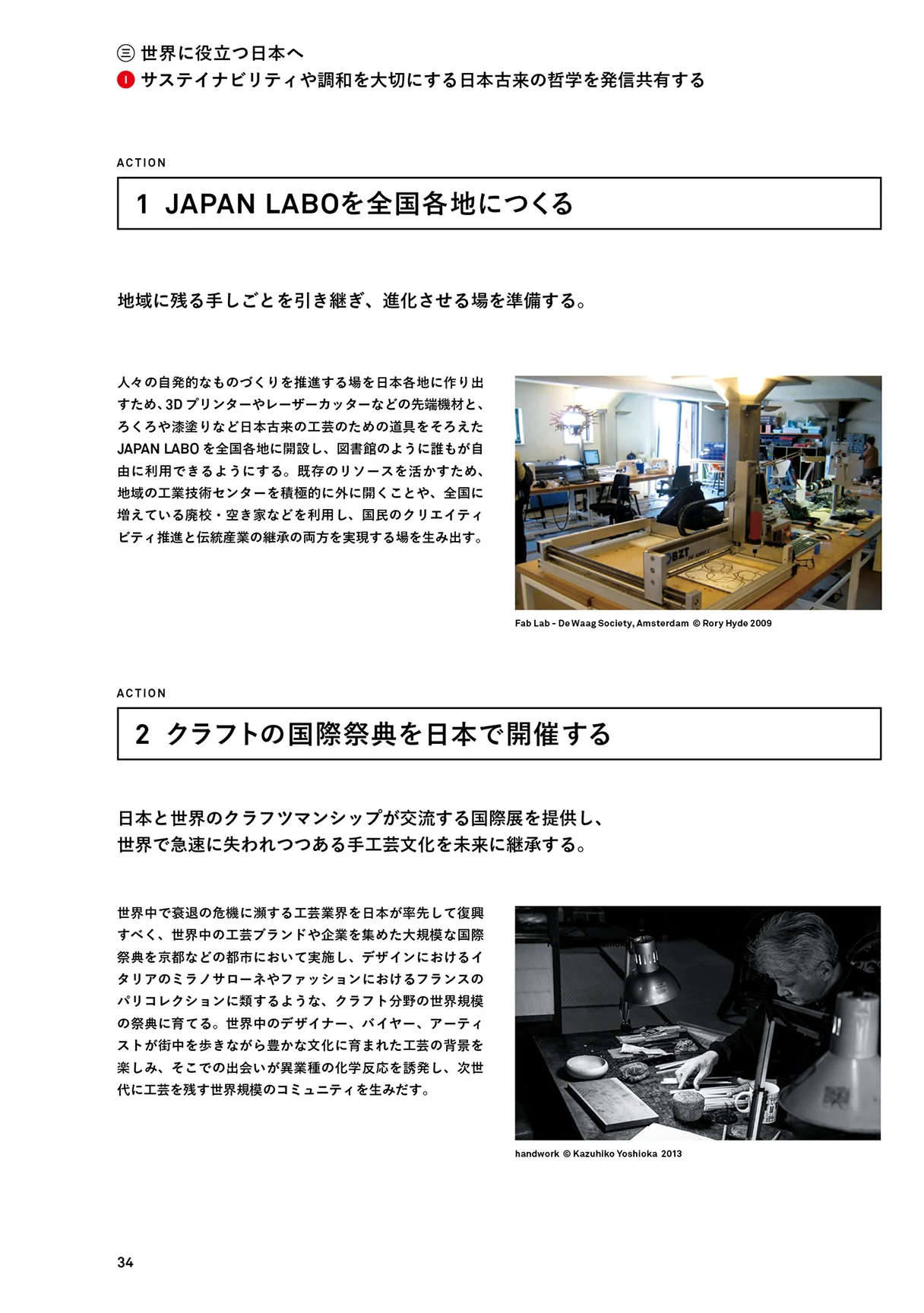

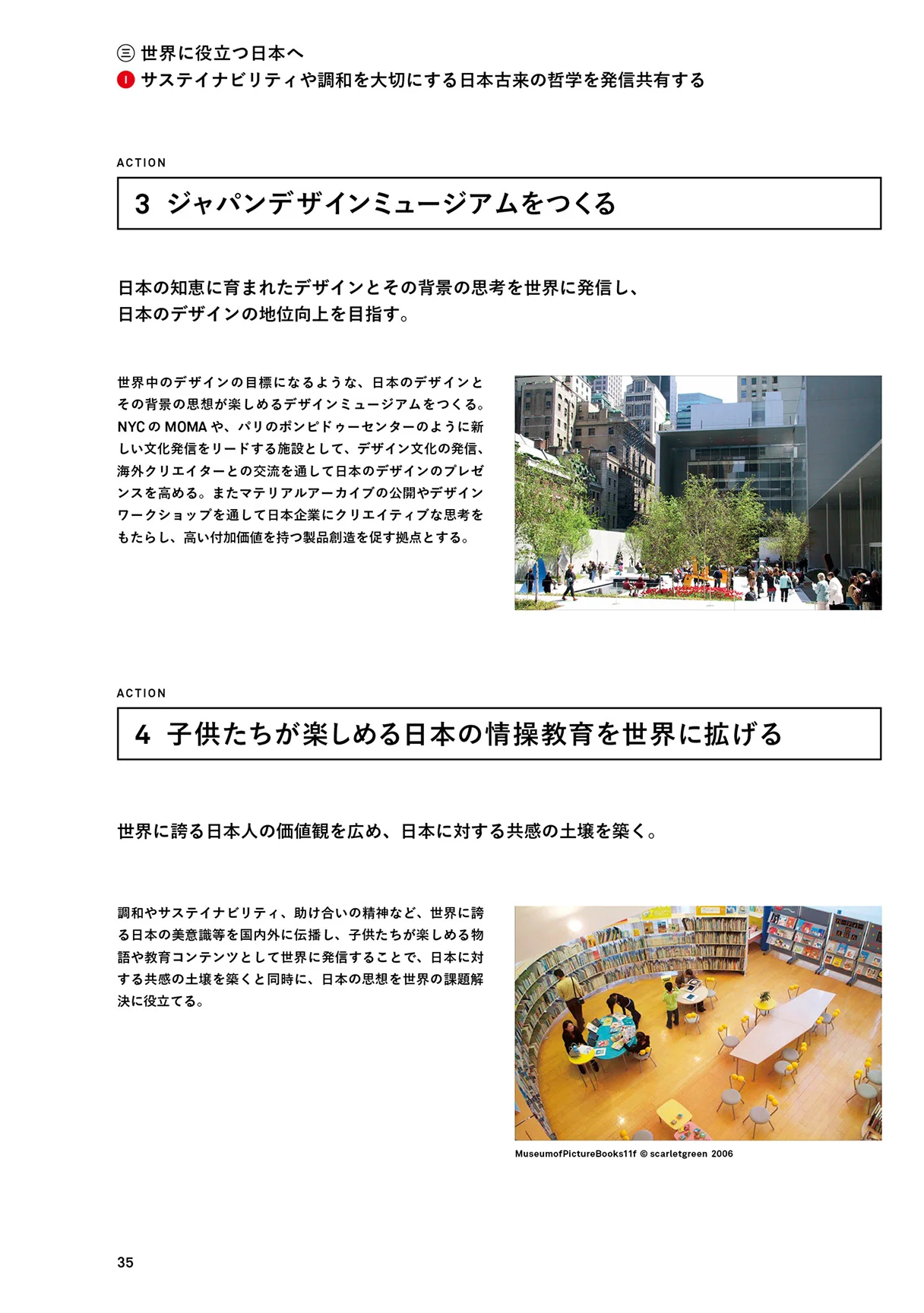
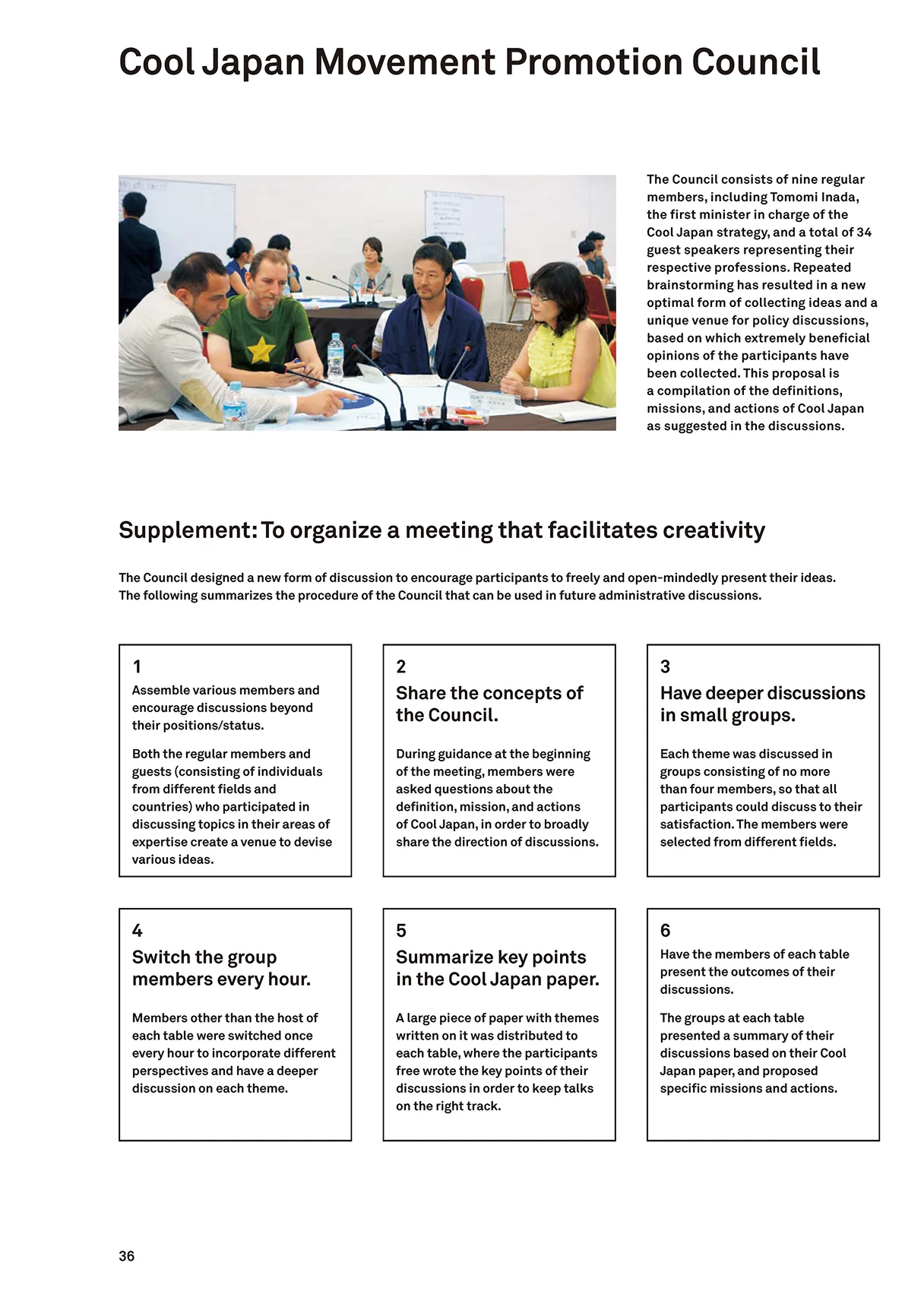
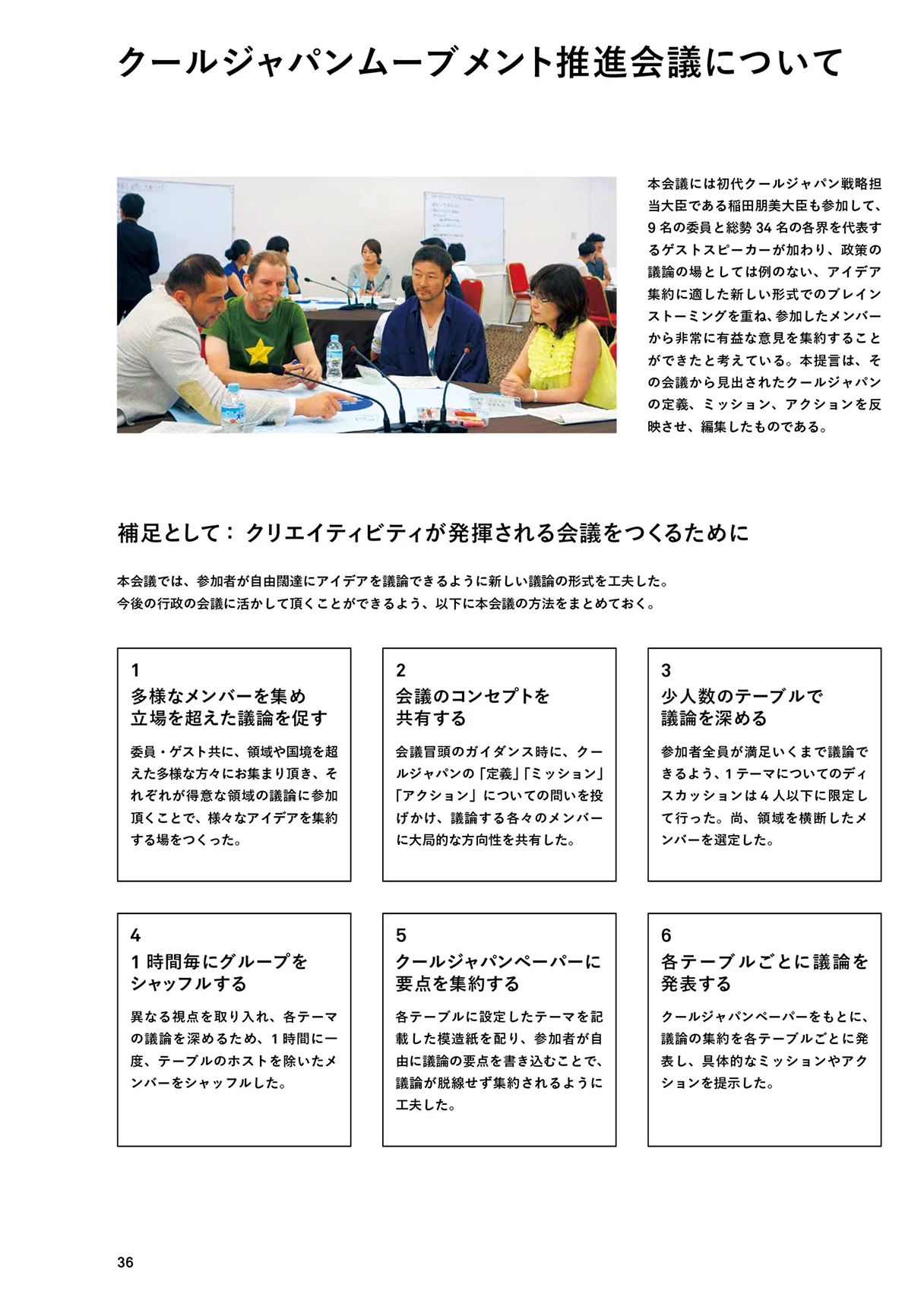
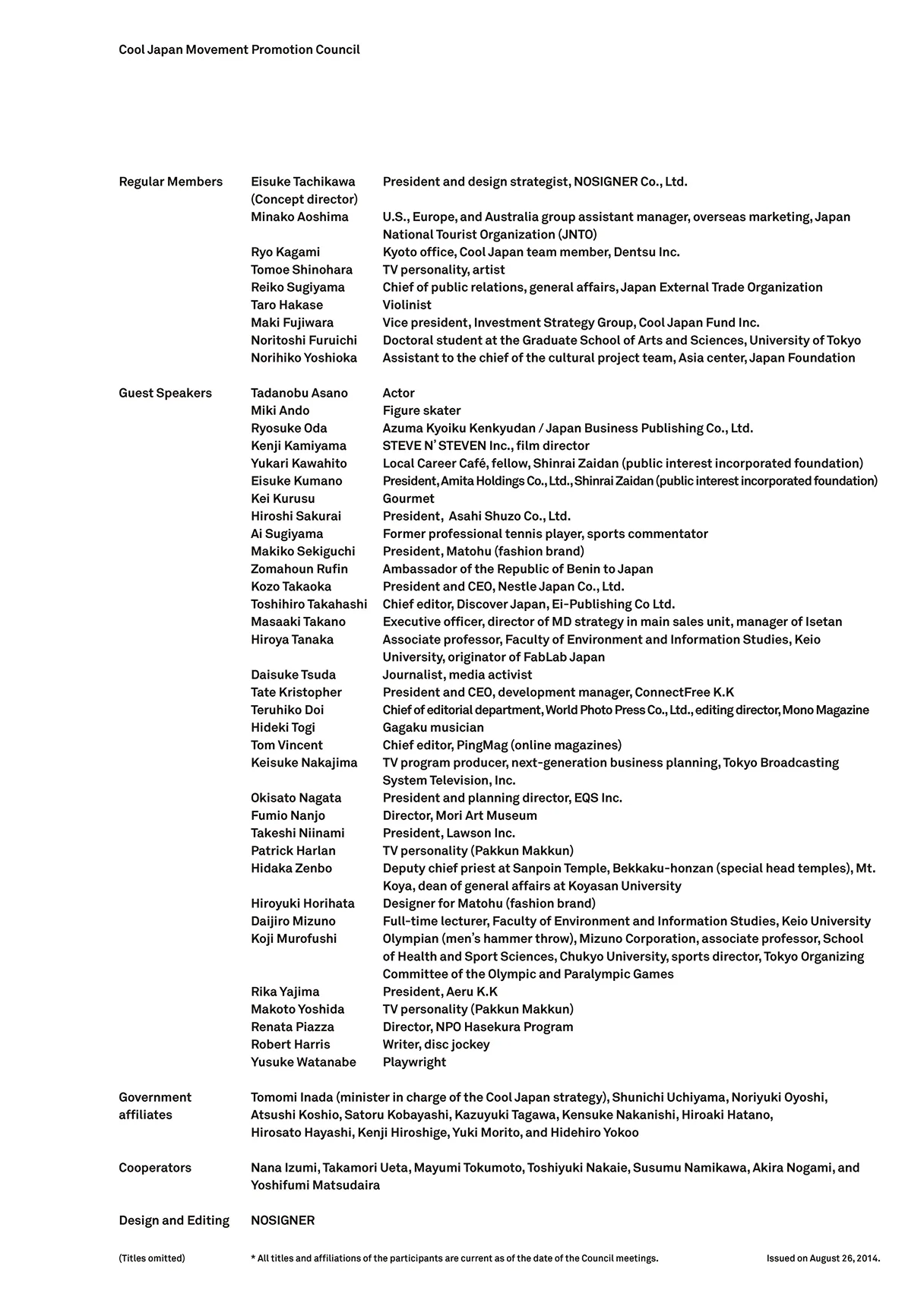
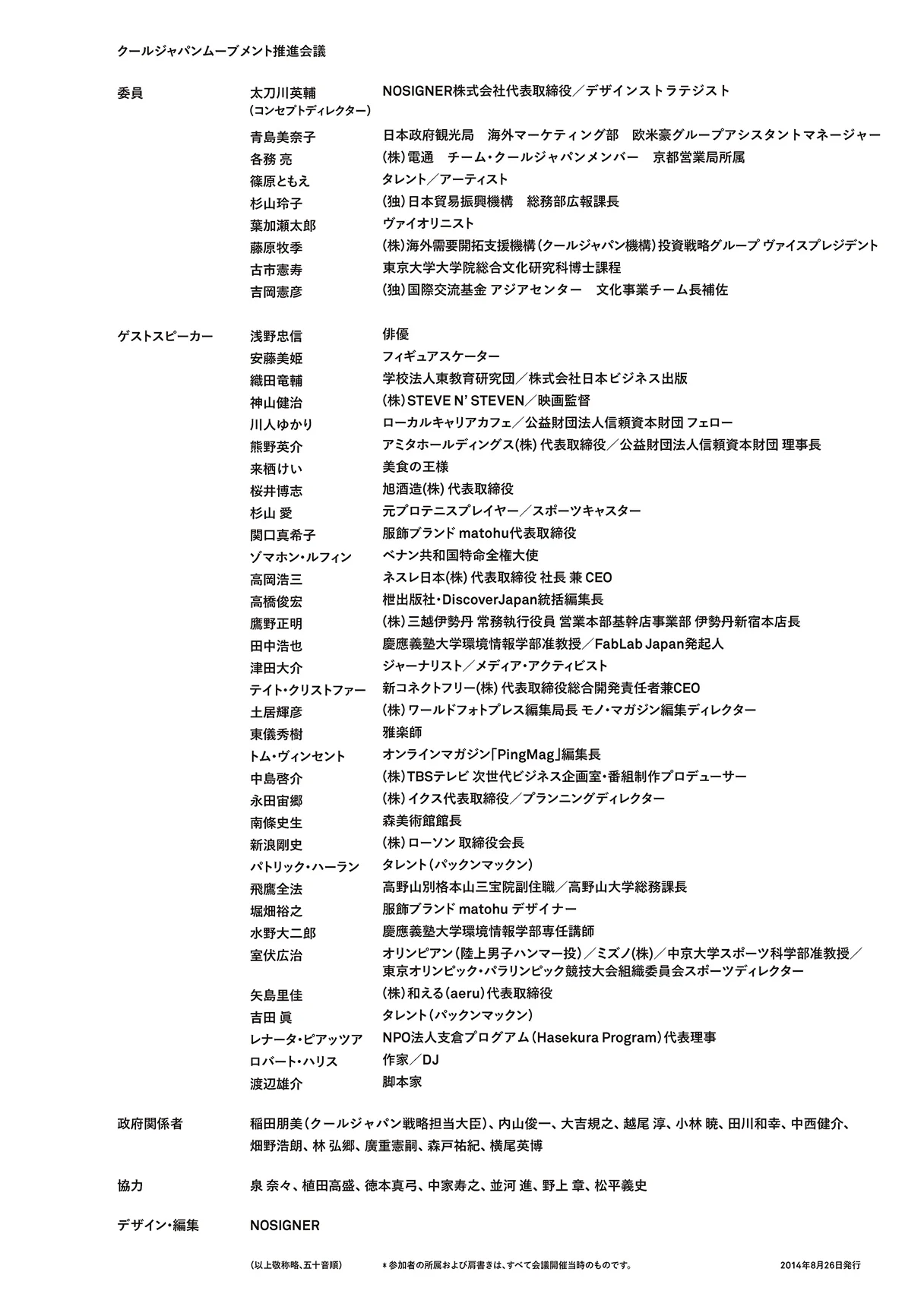
INFORMATION
- What
- COOL JAPAN PROPOSAL
- When
- 2014
- Where
- Japan
- Scope
- Edition / Concept Development / Infographics
CREDIT
- Art Direction
- NOSIGNER (Eisuke Tachikawa)









